The post Paddling With Ghosts in Tennessee appeared first on The Expeditioner Travel Site.
]]>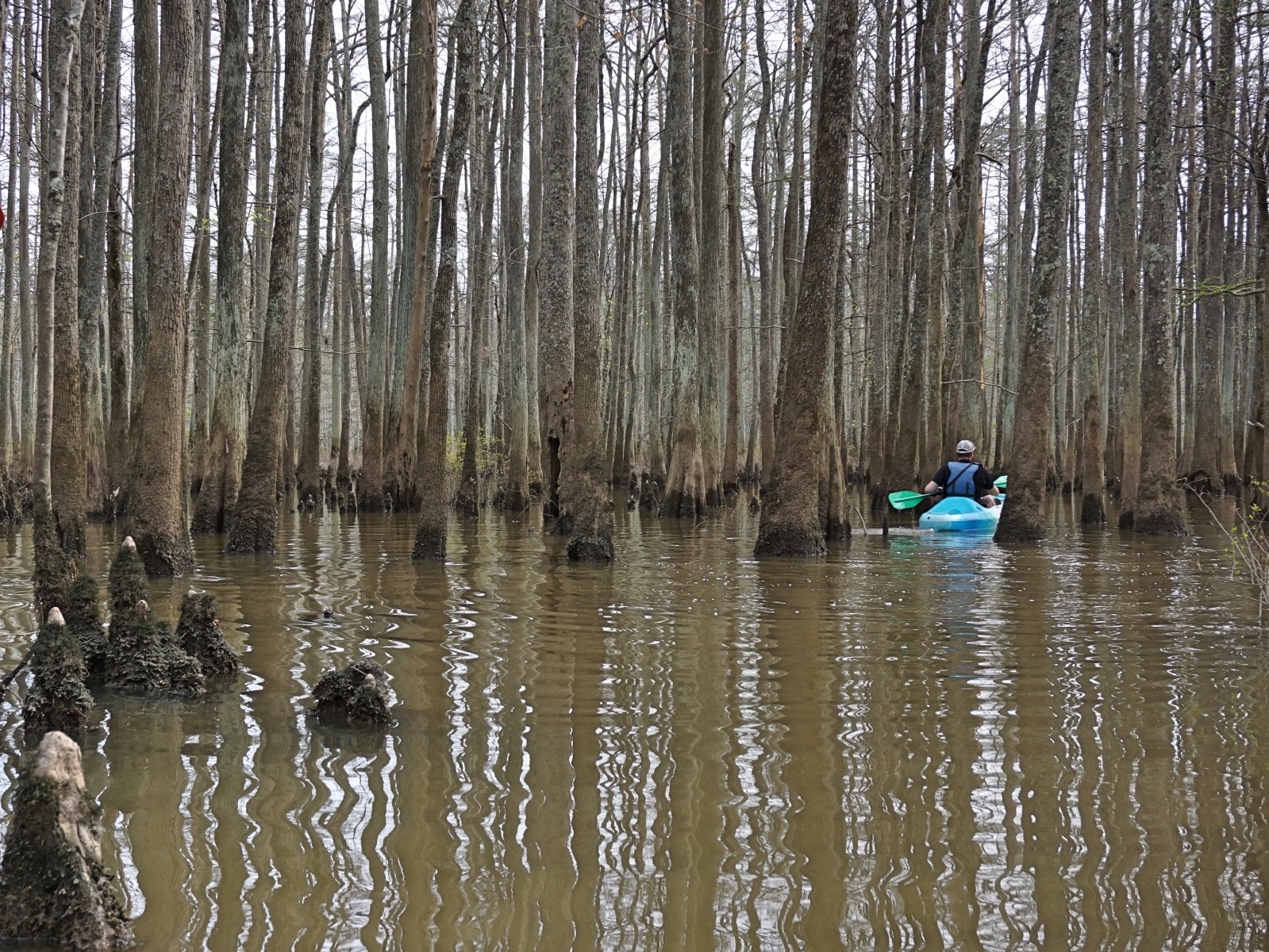
My arms burned each time I plunged a paddle blade beneath the surface of the river, pulling myself toward whatever I might find ahead. This five-hour kayak journey down Tennessee’s Wolf River traverses a cypress swamp crossed by channels and tributaries that lure paddlers down their path, only to disappear into the landscape, earning this ecosystem an eerie name: the Ghost River Section. I had carried my ghosts for years; I brought them into the swamp with me.
My father loved to canoe and traveled with a group of men to the Boundary Waters, a million-acre wilderness in northern Minnesota. He came back to our home in Indiana with rolls of film to develop, most with pictures of still water, spruce trees or a solitary moose, but my favorite were the loons.
As a child, I couldn’t imagine anything so exotic, with their black-and-white feathers and garnet eyes. When he played footage from the trip, I knew I would never forget the sound of their wild and mysterious call.
There were always a few pictures showing my father’s friends, who were married to my elementary school teachers or members of our church, making silly faces or laughing at someone just out of frame. These pictures were a glimpse into a forbidden world where the men told bawdy stories I wouldn’t be allowed to hear.
He returned an evangelist from his first trip, determined to share his watery gospel with my mom, brother and me, so he planned a family canoe trip at a nearby state park. He coached us on strategy, showing us how to hold the small souvenir paddles he’d bought for us at a gift shop.
We rented two heavy green canoes, with dusty life jackets and scuffed plastic oars. The creek, we quickly realized, was nearly dry. The canoes scraped across the pebbled bed until my father would call out that it was time to carry the boats.
“Is this a portage?” I asked, remembering how he and his buddies had hoisted their canoes overhead and hiked through the brush.
“No,” he said, brusque and exasperated. “This isn’t how it is.”
I kept quiet about the heat and how the oar was hurting my hands and tried to prove I was as capable as those men who knew what a real portage felt like, but we never canoed together again.
When I was 17, he returned to the Boundary Waters with those same men. Two months after his return, he died in an unexpected instant. He didn’t know he would never again feel his oar break the water’s surface; he didn’t hear any foreboding significance in the cry of the loons.
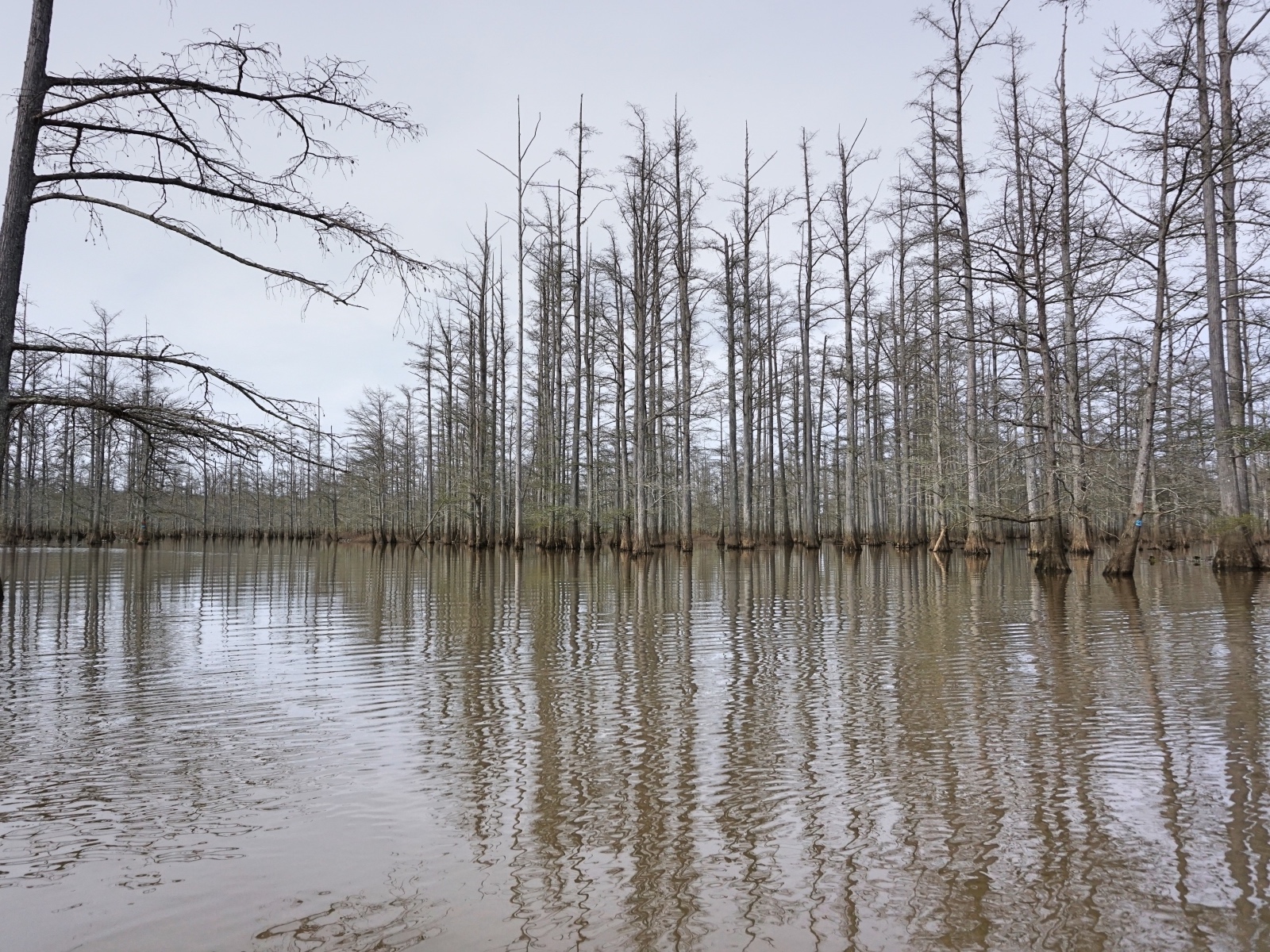
I didn’t intend for my trip to Tennessee to be a pilgrimage, but as I saw the row of kayaks and canoes lined up to be launched into the Wolf River, I remembered that hot day at the state park when I felt like I failed my father.
Mark Babb, owner of Ghost River Outfitters, pointed to the kayaks and told me again to jump into whichever one I wanted. He and Jim Gafford, from the Wolf River Conservancy, were leading a small group of us down the 9-mile stretch between LaGrange and Moscow, Tennessee, where the silt-stained waters travel through five ecosystems, including the Ghost River Section.
I hung back until Babb and another man helped me into a kayak and pushed me into the river. Gafford sat solo in his canoe, with a white beard that rested on his chest. These men knew the river like a good friend, and they were at ease in their boats. I began to paddle hard, worried I wouldn’t keep up. Each time I dipped one blade into the river, the other flooded my lap with cold water.
Another paddler glided his kayak beside mine as I grimaced about my technique. “A lot of people think you have to lift up the paddle and dig, dig, dig,” he said, “but the trick is to keep it low and steady.”
The current was calm enough to hear a woodpecker drilling in the distance, and I practiced steering against it. I steadied my breathing, hoping to quiet my fears: we had five hours to go with portages ahead. I spent so many years hedging, afraid to push myself and then fall short, but now I was already on the river; the only thing left to do was paddle.
I followed behind Gafford, working to keep my paddling low and steady, listening to him point out a bush that would bloom scarlet later in the year and naming bird species by memory after claiming he wasn’t much of a birder. The day was pleasant, with sunlight filtered through the trees. I began to build a rhythm.
Before I had fully relaxed, we reached the first of several downed trees blocking our path. The current felt fast and unpredictable as I tried to steer towards the shoreline and avoid other people’s boats. I smacked against another paddler, and Babb reached out to grab my kayak.
“Sorry, sorry!” I said, feeling the first blush of shame.
“No problem,” assured the other kayaker, in a gentle tone. He hopped out onto shore and began pulling his kayak without pause. Babb cut a few errant branches from the fallen tree, clearing our way to shore.
“I was just wondering how many Band-Aids you go through in a year,” I said.
He smiled. “I’ve given up on Band-Aids,” he said, tossing his saw back into the front of his kayak and helping me up. My unsteady feet caught in the mud, and I tripped, grabbing onto a tree for balance. Babb had already pulled my kayak around the tree and positioned it for launch on the other side.
I realized then that none of these men doubted me. They weren’t waiting for me to fail: they were waiting for me to get back into my kayak so we could continue down the river together.
We continued through bottomland hardwoods and scrubby wetlands until we reached an unassuming sign hand-painted bearing the words “Turn Here” and an arrow pointing left. We were entering the Ghost River Section.
What had been a river flowing gently between its banks widened into a maze of cypress and water tupelo trees. Blue herons swooped and landed where we could barely see their dusty blue outline. Our loud laughter turned to reverent whispers amidst the slap of paddle blades against the water.
The cypress had just begun to push their needle-like leaves. In the summer, this swamp must be warm and green, like a pine forest soaking its roots to cool off. In early spring, the bare branches and thin trunks that widen at the base were other-worldly. We navigated between the trees, avoiding the cypress knees that poked above the water.
So many travelers before us had been fooled by channels inviting them to turn a corner, only to disappear into the reeds. But we had guides who wanted to share the river with us, no matter how choppy my paddling, how clumsy my portages.
The swamp opened into a broad lake, with no current to urge us along. My fellow paddlers in the group began to stretch their forearms, circle their wrists and check for blisters. These men were more experienced than me, and their navigation was more graceful, but I could keep up. My muscles ached, but determination welled up to replenish my will to keep paddling, low and steady.
The lake narrowed into the river once more, and we leaned back to stretch out over our kayaks, warmed by the sun and the promise of the home stretch. We reached the end of our journey tired and triumphant. I must have felt how my father did as he reached the shore to set up camp with his friends, telling forbidden stories for laughs, listening for the call of the loons.

/
 Jessica Dixon is a writer living in Denver, Colorado. She loves traveling around the U.S. and abroad but is always happy to get back home, where you can find her hiking with her dog, Bella. Her work has appeared in publications including Indianapolis Monthly, Westword and Real Food Traveler. Read about more of her adventures at www.rockymthi.wordpress.com.
Jessica Dixon is a writer living in Denver, Colorado. She loves traveling around the U.S. and abroad but is always happy to get back home, where you can find her hiking with her dog, Bella. Her work has appeared in publications including Indianapolis Monthly, Westword and Real Food Traveler. Read about more of her adventures at www.rockymthi.wordpress.com.
The post Paddling With Ghosts in Tennessee appeared first on The Expeditioner Travel Site.
]]>The post A Winter in the Pit: Washing Dishes in the Alaskan Arctic appeared first on The Expeditioner Travel Site.
]]>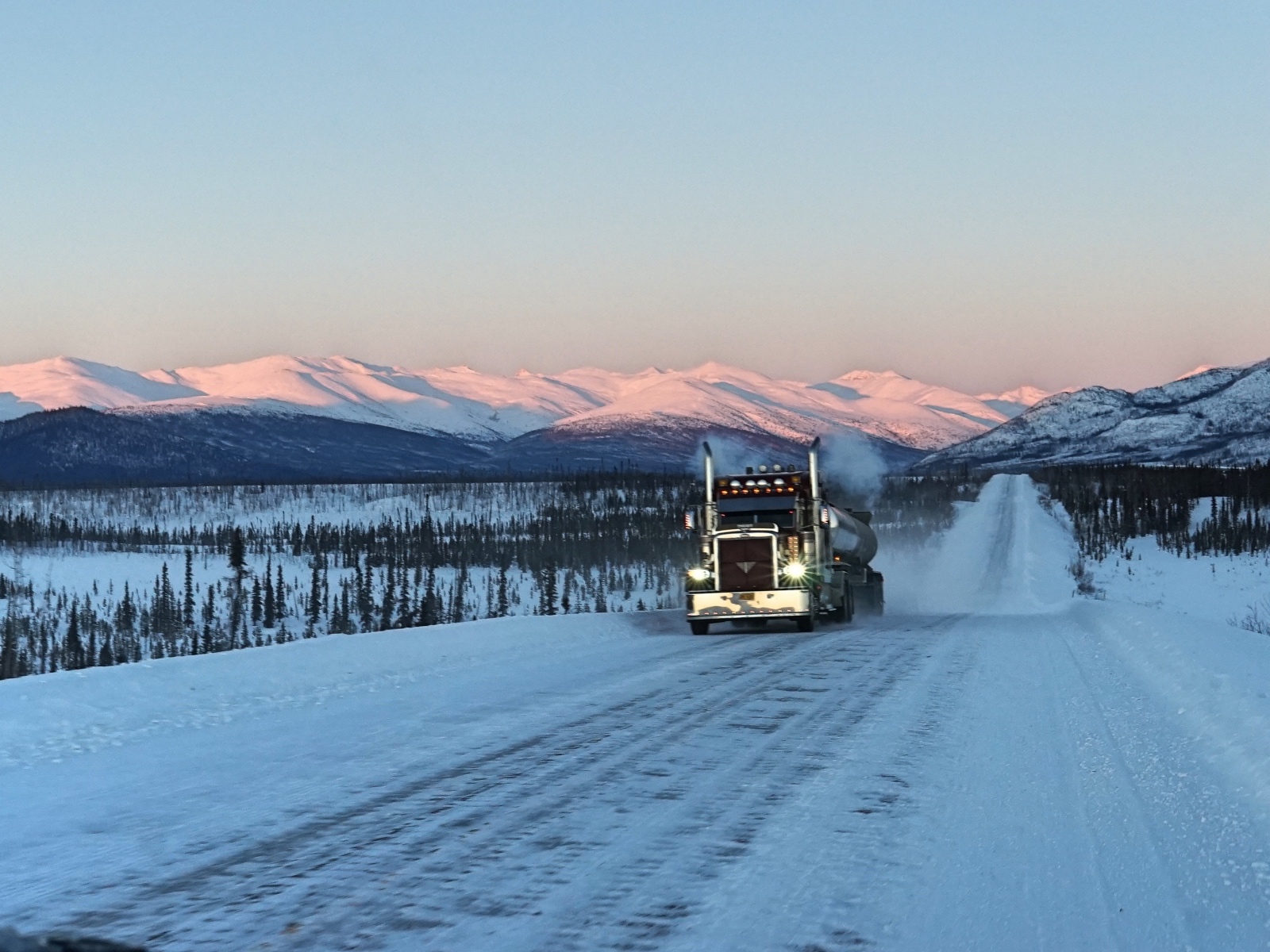
On a weekend holiday to Fairbanks, I stepped into Big Ray’s shop, where walls and racks were festooned with down jackets, wool hats, gloves, boots and face masks of every style and function imaginable. I have read that one measure of the dominance of winter is the number of words available to describe snow in the native languages of that region. I now knew that another indicator was the abundance and variety of long underwear available at local retailers. Each pair was categorized by the level of cold it was designed to withstand, one labeled “Very Cold” and the other “Extreme Cold.”
As I approached the man at the front counter, I explained to him that I was new to Alaska but I didn’t want to overdo it by getting the really heavy-duty stuff when regular heavy-duty would suffice.
“I’m from Chicago,” I added helpfully, to let him know I wasn’t a total wuss when it came to cold.
“I don’t think there’s anything you can do that’s gonna properly prepare you for what you’re about to experience this winter,” he said. He wasn’t smiling.
I opted for both pairs and some wool socks.
Coldfoot Camp is located on Mile 175 of the Dalton Highway. At 60 miles north of the Arctic Circle, it’s the world’s northernmost truck stop. It’s been featured on the show Ice Road Truckers, and its hiring website indicates (with wicked glee) that it is 260 miles north of the nearest stoplight, in Fairbanks.
The opening was for a dishwasher who could start that summer and stay on for the winter season. I’d previously dished at a four-diamond, all-vegan resort on the coast of Northern California. It would be difficult to find a more antithetical restaurant experience than a truck stop in the Alaskan Arctic, where an order of biscuits and sausage gravy with hash browns and two eggs any-way-you-like-‘em was listed on the menu as the “Trucker’s Favorite.” But dishing is dishing, anywhere you go. I applied. Two weeks later I was standing on the dirt runway of Coldfoot’s airstrip.
At each stop along my journey north the planes grew smaller until I eventually sat aboard a 9-passenger bush plane with a honking pair of headphones clamped over my ears. Once airborne, our pilot flicked the controls into autopilot and turned on the local sports station. It faded to static as we passed beyond the range of Fairbanks’s airwaves and into a sprawling landscape of boreal forest and tundra, pockmarked by lakes and slithering with rivers. The vista was daunting, but its most dramatic feature lay buried beneath a cloak of green. The presence of permafrost — a permanent layer of frozen ground beneath a thin slip of soil — was indicated by dwarf trees, blocked from digging deep root systems that anchor taller growth.
“Winter is a constant, though usually hidden companion during the short Arctic summer,” writes John Milton. “The quickness of summer intensifies an awareness that warmth here is only a brief respite from cold, that light will soon be followed by a deep and much longer-lasting darkness. This mood dominates the land and everything living in it.”
Or as MudD, our maintenance man would later put it to me, “Summer’s almost over before it begins.”
From the air, two feats of human industry can be traced zigzagging north towards the Arctic Ocean like scars on an otherwise unmarred landscape: the Trans-Alaska Pipeline, and its correlating artery, the Dalton Highway. The pipeline pumps oil from Prudhoe Bay 800 miles to the port of Valdez, while the highway supplies the truckers and pipeline crew necessary to keep it flowing.
Coldfoot Camp is the midway point for anyone headed north or south on the Dalton. It’s a big dirt lot with a little oasis of gas pumps — open pasture for semi trucks. On one side of this lot was the cafe where I would be spending much of my time. It was a modest building with a slightly less industrial feel than anything else around it and the only commercial enterprise for hours in either direction. Rising 20 or so feet from its roof was a conical red flag, the kind that inflates and turns its narrow end to indicate the velocity and direction of the wind. On breezeless days it looked like a sad, droopy hat.
Across the lot sat a pair of long, white buildings with a likeness to a couple of heavy-duty trailer homes. ATCO units installed in the 70’s for crew workers on the Trans-Alaska Pipeline, they’ve since been rechristened as the Coldfoot Inn. Glamorous, not so much, but a person doesn’t come to the Arctic to admire the wall art.
Another set of ATCO units behind the cafe housed my fellow coworkers and me. Over the course of my time living in the crew quarters, I grew quite fond of my room with its decades-out-of-fashion, wood-paneled walls and ominous red carpet stain. Though I doubt I’ll miss the ancient heating system, which seemed to have two modes: Off or Inferno. There were -40 degree nights, window wide open, that I woke in a slick of sweat.
Coldfoot’s owners employ the word “rustic” to describe the feel of the place, though some might find that to be a coy description. Personally, I think it fits. The cafe was scuffed and chipped from the floor to the dinner plates, exactly how an Arctic truck stop ought to be. An amateur mural featuring trucks and mountains stretched the length of a wall. Laminated posters provided information on note-worthy events in the construction of the Dalton and the Trans-Alaska Pipeline. Pinned above a bay in the building was a large Christmas wreath with a toy semi truck inside of it. It was all wonderfully earnest. I would have been thoroughly disappointed had I come this far north only to find a brightly lit, standardized retail space across the street from a McDonalds and an outlet mall. There was an authenticity in the homeliness that reminded me why I continue to seek these kinds of places out.
Life at a Coldfoot was like life on a ship. You worked together, lived together, ate together and sat on the same toilets. Some co-workers dated each other. Several tied the knot. You had your own room, but walls with the soundproofing capabilities of cardboard meant privacy was limited. In the dead of winter, when gray light crept into the sky for no more than four hours a day and temperatures dropped below -40 degrees, taking a walk to clear your head became an expedition, conditions that reduced certain among us to periods of locking ourselves in our rooms, getting drunk and madly scribbling in Sudoku puzzles.
The job attracts interesting people. We went by a collection of names that, read off a roster, made us sound like a band of pirates. There was Maniac, the sweetest, most demure person I’ve ever met; MudD, a body-building movie-holic; and Tugboat, who spent over 100 days out of the year sleeping in a bivy sack on the side of the Colorado River.
Then there was Cast Iron, a big-bellied man in his 60’s enraptured by the Arctic. “I got up here late in life,” he liked to say. “There’s just too much for me explore to think about going anywhere else.”
Cast Iron put most of us to shame with the enthusiasm he displayed tromping out into sub-zero temperatures or riding his bike along the Dalton. He invited me out to his campsite in the woods where we heated our dinner over an open fire. Flames crackling in the fierce cold, we sipped our hot soup under a sky smattered with stars.
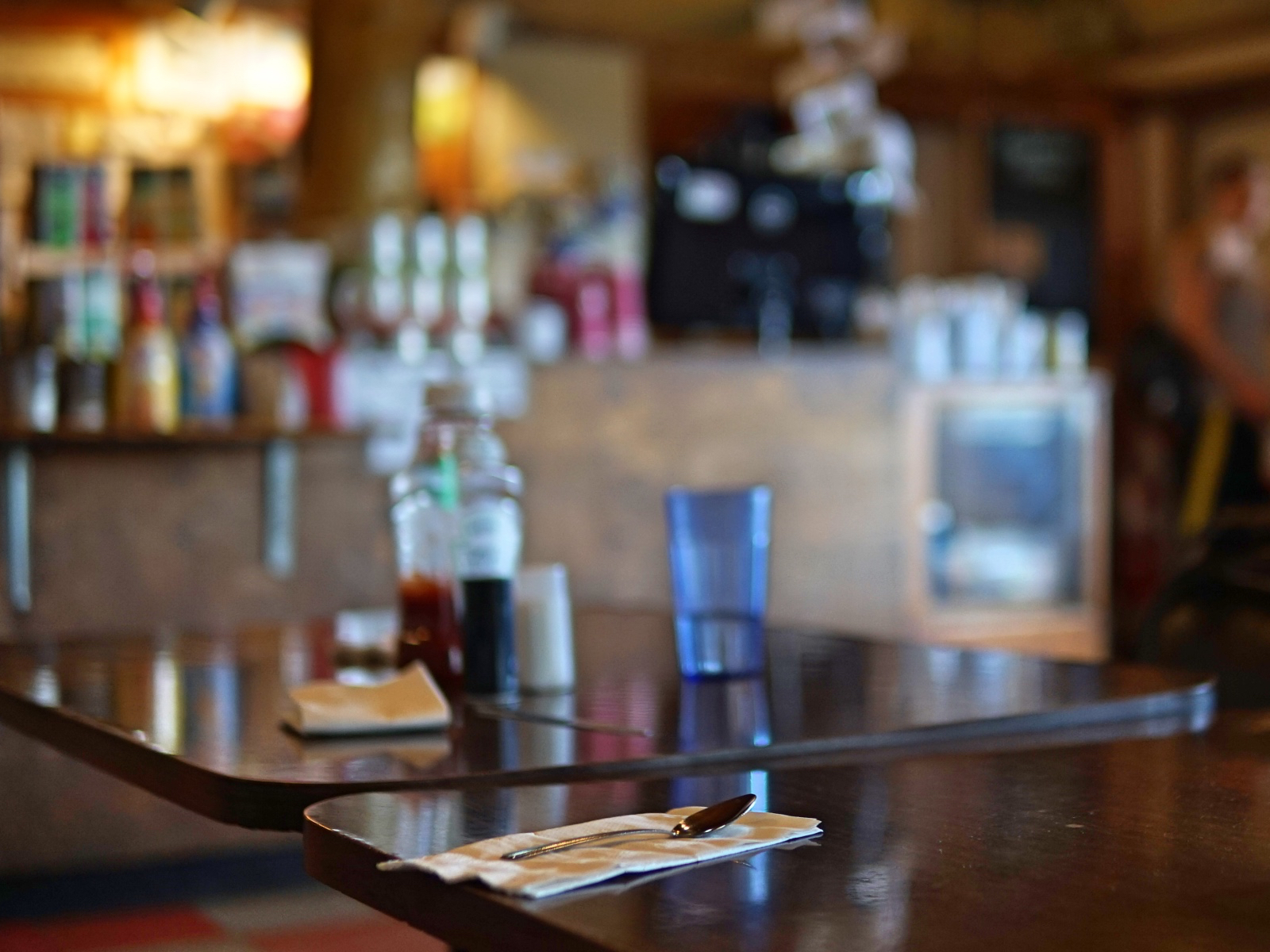
First it was a gold mine. Then it was a ghost town.
Miners settled what was originally known as Slate Creek in the final years of the 19th century. They established a gambling hall, two roadhouses, two stores and seven saloons. The name Coldfoot is supposedly a jab at the ones who got cold feet and tail-ended it back south. The area must have proved to be less a fountain of wealth than the miners had hoped, so the mining operations relocated to Wiseman, about 12 miles up the nearby Koyukuk River, between 1911 to 1912. Some of the local topography owes its name to the original camp’s ladies of the night. Today, Emma Dome looms over the highway.
In 1968, an estimated 10 billion barrels of recoverable oil was discovered at Prudhoe Bay, inciting the construction of the Trans-Alaska Pipeline. Coldfoot had a second coming as one of 29 camps housing some of the 70,000 pipeline construction workers from ’75 to ’77. The pipeline years were followed by another period of disuse.
Then along came Dick Mackey: Iditarod champion, Alaskan legend and an ambassador of sorts for the Dalton highway.
Mackey realized that Mile 175 was an ideal spot for truckers who needed to hit the head on the trip between Fairbanks and Prudhoe. So in 1981 he parked an old school bus there and started serving them coffee. Coldfoot’s wood center pole is inscribed with dozens of names, truckers who put a hand in helping build the cafe up from its humble beginnings. It is a chronicle of the Dalton Highway and the people who’ve driven it since its inception, as well as the literal backbone of the building.
Our main customers were those truckers driving materials up to America’s largest oil field by way of America’s northernmost state-maintained road. The road was completed in 1974 in preparation for the construction of the Trans-Alaska Pipeline. Truckers still refer to it by its former name, the Haul road. By 1995, all 416 miles of the Dalton were open to the public. Anyone wishing to drive to its northern terminus at the gateway to Prudhoe Oil Bay, Deadhorse Alaska, (and grab a drink at the local Starbucks, I’m not kidding) can do so, but most of the road remains unpaved, and it is prone to chewing cars up and spitting them out.
Some say that the Dalton’s notoriety is overstated, but cars go off the road every year. Their metal carcasses haunt the roadside for months or even seasons on end before anyone gets around to hauling them out. Semi trucks command the Dalton, hurdling by, snow or dirt gusting up from their tires, engines bellowing miles off like gargantuan creatures prowling their territory. No surprise I found myself tensing up around a few curves while hitching a ride in one of these monsters back to Fairbanks one day.
As I gazed out his mud-splattered windshield, my ride Jim kept me entertained with stories of harrowing moments on the job. Heating a frozen jack with a blowtorch while changing a tire in -30-degree weather, flash blizzards that obscured visibility to the point that you couldn’t tell whether you were driving down the middle of the road or over the edge, and the rush of vertigo brought on by snow whipping sideways past your window.
In one particularly vivifying story, Jim had parked his truck on an icy slope after realizing he wasn’t going to be able to make it to the top. Just as he finished wrapping his tires in chains, the truck began to slide backward. Jim raced around to the driver’s side but couldn’t manage to jump in before it picked up speed. He watched in horror as the semi’s back end began jack-knifing towards the side of the road. Then the chains caught. The wheels rolled over on their brakes and ground to a halt, their back-most members dangling over a steep descent. Listening to him talk I couldn’t help sense the potential for a T.V. show. And then I remembered, there already was one.
So why live in a truck stop in the Arctic? The least romantic answer: It’s lucrative.
Many of us were travelers. With no rent, no grocery expenses and nowhere to spend our money (except the internet, thank you Amazon), saving up for future trips became incredibly doable. Zero commute and less commercial distractions allowed a person to focus on what’s important to them. The ability to come and go without the anchor of a lease agreement made the live-where-you-work factor ideal for roaming. All that being said, the most obvious reason for living in the Arctic was that you got to live in the Arctic.
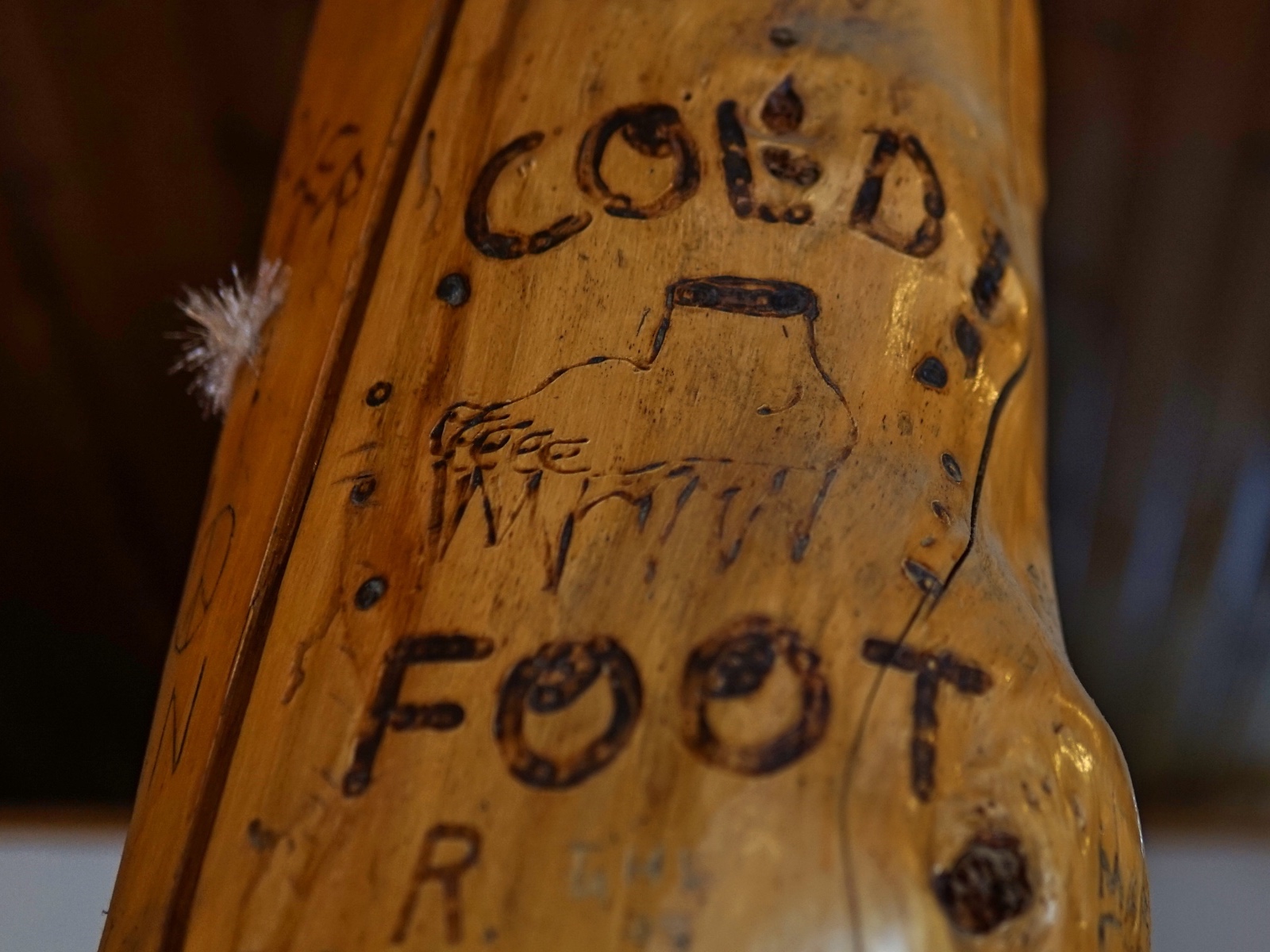
The foothills of the Brooks Range rose up beyond the rooftops of camp, massive rock faces poised to capture an array of colors as resplendent as the Arctic is ongoing, from the deep pinks, reds and violets of dawn and dusk, to the burly slate and steel blue of frigid winter days. We name them, claim them, divide them by political boundaries, but all that seems like nonsense when you’re staring up at one. Nobody conquers a mountain. It gazes down upon our line drawing and nation building like someone watching a child carve moats and sandcastles on the beach. If you have any thoughts to the contrary, walking up one will help dispel the illusion.
A hike during the warmer months most likely means stream fording and bushwhacking, as this country is backcountry, and trail systems are almost exclusively the product of wildlife. There is no gift shop at the top of these Arctic mountains, no gondola ride from the summit. You earn only the steps you take.
In my case, I also earned an encounter with a very large brown bear. A bear can be happened upon in one of two states: either it’s hibernating or it’s hungry. I decided this one belonged to the second category, calculating how many seconds it would take to reach me if it charged (a bear can cover 40 feet in a second: so about two, I figured). The canister of bear spray that had cast an aura of safety around me up until then, bouncing on my hip like a trusty revolver, seemed about as useful as a can of DEET under the purview of an actual bear. After a few pulsing moments, the bear turned its nose down the mountain, a mutual disinterest in pursuing further relations with one another agreed. We went our separate ways but I was shaken for the rest of the day, glancing over my shoulder in case the hulking, furry animal changed its mind.
Beyond bears, the cold itself became a beast. As winter turned full tilt and temperatures fell below nose hair-freezing levels, the urge to escape the doldrums of the ATCO units during the slim hours of daylight grew strong enough to suit me up in nearly every article of cold weather gear I possessed and scoot me out the door.
This was, admittedly, on a warmer winter day, somewhere in the negative tens. The hike that followed took me through open tundra and over frozen lakes, at one point descending steeply through a strip of boreal forest in snow so deep and powdery that even with snowshoes I sank to my waist and on to the top of a deceptively squat-looking mountain called the Nub. Six hours round trip, during which I sweated through my down jacket and thanked my lucky stars I’d thought last minute to stuff another into the bottom of my pack, I stripped off one and pulled on the other. The wet rag (formerly my jacket) made a crinkling sound as it solidified into a hunk of ice.
It could be easy while among the creature comforts of a central-heated truck stop and crew quarters to feel immune to nature’s elements. During the short walk between the two buildings, the cold became a nuisance rather than a death threat. Hiking the backcountry, however, provided plenty of reminders that this was still the Arctic. It didn’t care where you came from or who you knew. It had no qualms turning you into a permanent fixture of the landscape.
Inside the main entrance of the crew quarters was a landline telephone. The sign posted next to it read: “Welcome to Coldfoot, one of the last places on Earth where your cell phone doesn’t work.” By the time I arrived, that sign was out of date. The first cell tower to be erected along Mile 175 had gone active a few months earlier. An outpost on the edge of human civilization feels a lot less rugged when the person next to you is thumbing around on Facebook.
Over the long winter haul, I woke in the dark, rubbed my eyes, pulled on my uniform and trudged to work. Some mornings, when I questioned what I was doing out there when I was feeling less like a frontiersman and more like a dishwasher, it was worth looking up. Within seconds, eerie rivers of green and pink light could flood the sky and just as quickly dissipate again. The Aurora appeared now and then as a kind of reassurance that the world was still a wild, beautiful place.
My bags were packed. It was mid-May and spring was just finally bursting up through the snowpack. People were outside in T-shirts tossing around a Frisbee. Incredible. An hour after clocking out of my final shift I was on a plane headed south. I was meeting a friend in Fairbanks for an Alaskan road trip, during which we’d both get miserably sick but have a hell of a good time anyways.
The plane pitched to turn us south, offering one last glimpse of the small cluster of buildings by the highway that was Coldfoot Camp: gold mine, truck stop, outpost, Alaska.

 Maximilian Armstrong has a penchant for adventure and stories. He’s backpacked Canada, hitchhiked America, motorbiked Vietnam and wintered in the Alaskan Arctic. His current expedition is thru-hiking the Appalachian Trail.
Maximilian Armstrong has a penchant for adventure and stories. He’s backpacked Canada, hitchhiked America, motorbiked Vietnam and wintered in the Alaskan Arctic. His current expedition is thru-hiking the Appalachian Trail.
The post A Winter in the Pit: Washing Dishes in the Alaskan Arctic appeared first on The Expeditioner Travel Site.
]]>The post Scottsdale Travel Guide appeared first on The Expeditioner Travel Site.
]]>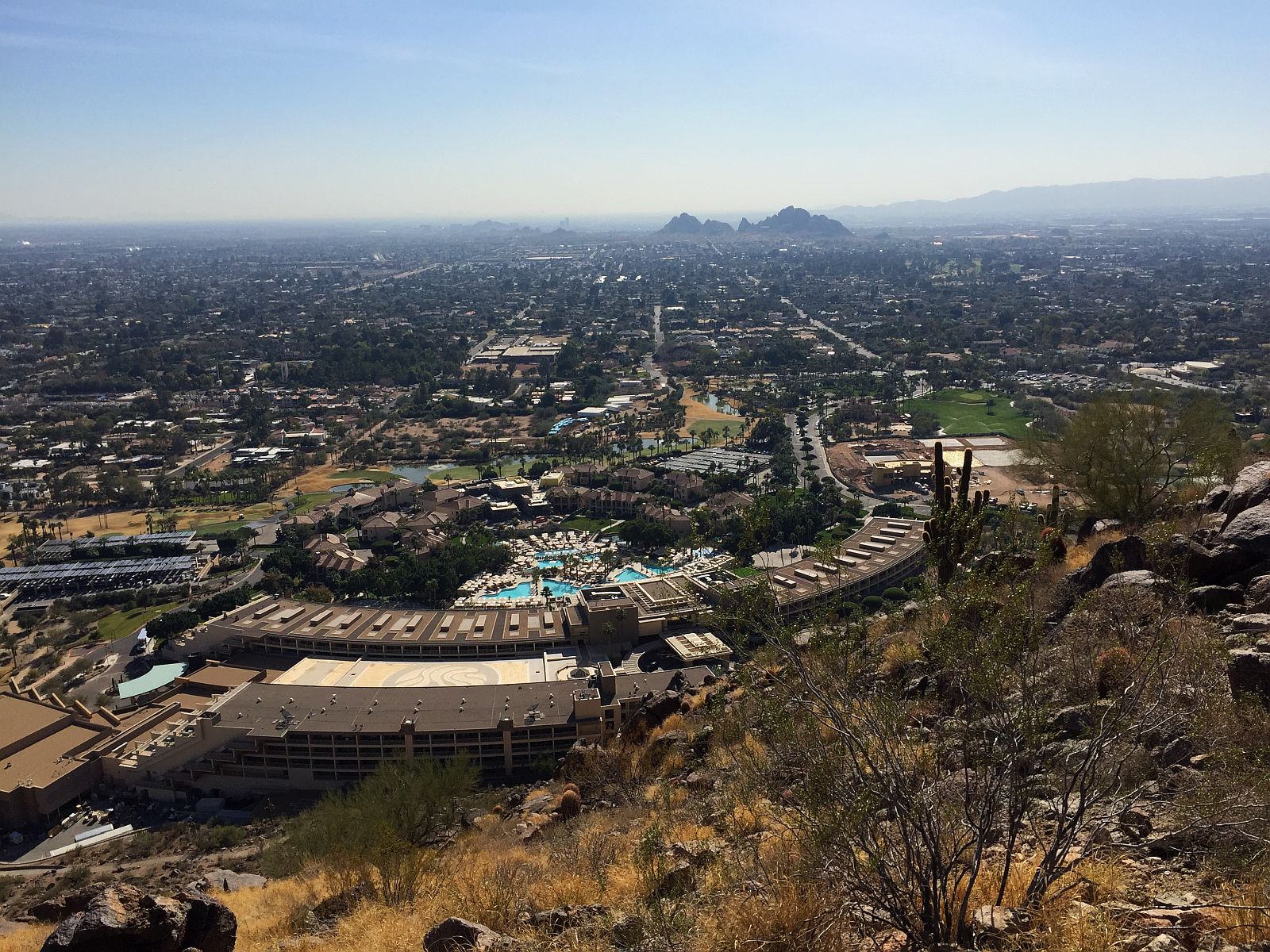
Scottsdale, Arizona, is one of my favorite places to visit any time of year. Why do I love coming here so much? The real question is: Where to start? Located adjacent to Phoenix and in the heart of the Sonoran Desert, Scottsdale’s weather is warm and sunny all year long, so you can take advantage of outdoor activities from swimming, hiking, horseback riding and golf no matter what season you visit. The restaurants, bolstered by the support of millions of visitors and supplied by local, fresh ingredients, are fantastic, and the number of hotels and resorts here means you can find a property for whatever mood you’re in, whether it’s ultra-luxury to young and hip.
On top of all that, Scottsdale has more spas per capita here than anywhere else in the country, it’s hard to drive more than 5 minutes in any direction without coming across a golf course, and the people that have chosen to live in this desert paradise are welcoming and friendly. It’s no surprise that over 4.5 million visitors travel to Scottsdale every year to experience all that the city has to offer.
It would be impossible to list every place to stay, pamper yourself, or eat at in Scottsdale. But with so many options to decide from, I’ve put together a travel guide to help you find some of the best hotels, spas, and restaurants you should visit during your next trip to Scottsdale.
Hotels
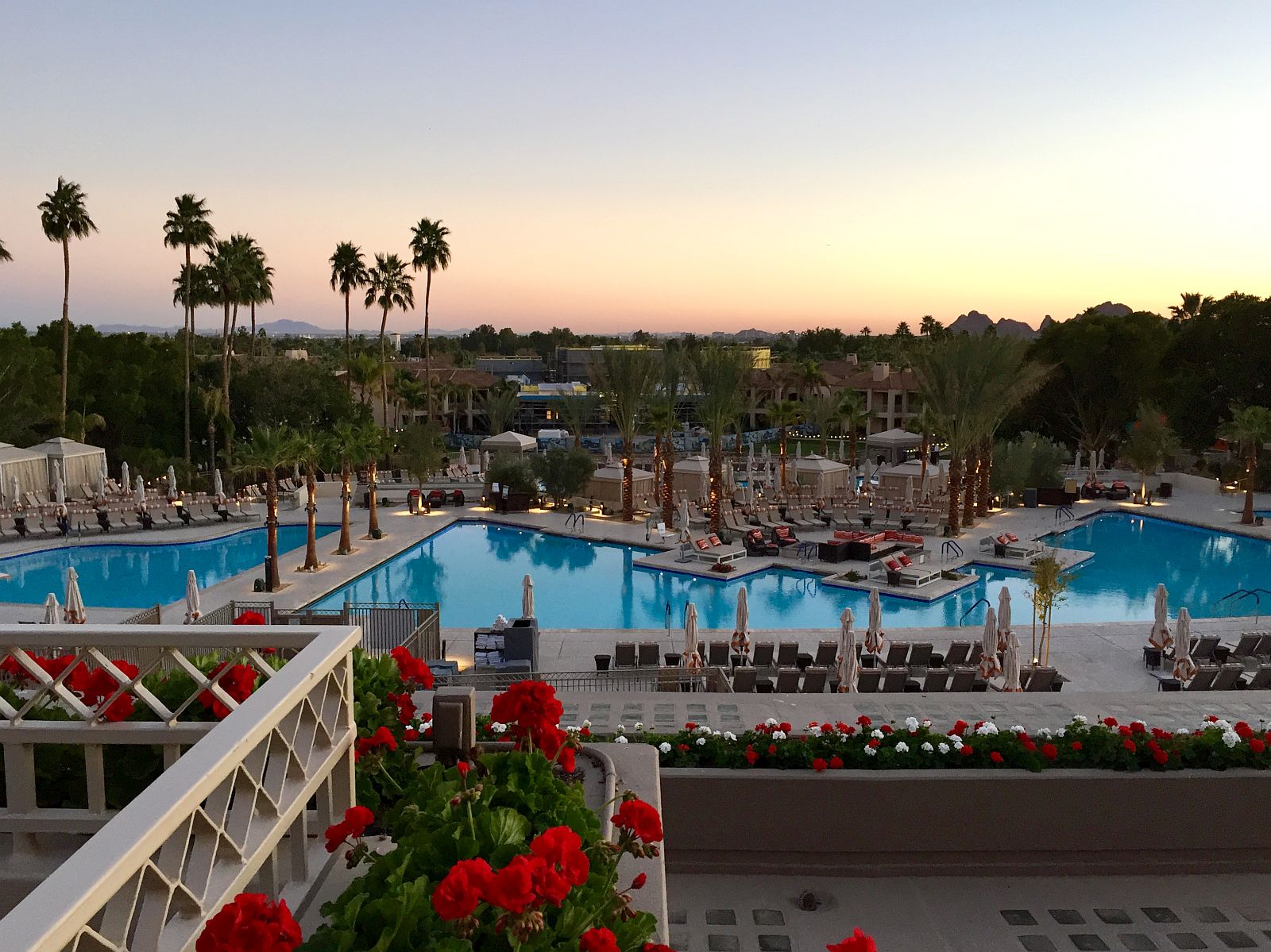
The Phoenician
The Phoenician is one of Scottsdale’s best known hotels, and there’s good news for visitors who haven’t stayed there in a while: it’s currently in the tail-end of a three-year, major makeover. Located at the foot of Camelback Mountain and only a short drive from Old Town, The Phoenician is one of the best situated resorts in Scottsdale. We made sure to get up early one morning and make the short drive to Cholla trailhead, the most popular gateway to hiking iconic Camelback Mountain.
The most noticeable change that long-time guests will notice is the lobby, which has been completely renovated, giving it a contemporary, Southwest feel featuring a color scheme reflecting the colors of the desert, and including a collection of art from local artists in the region. They’ve also given the bar, The Thirsty Camel Lounge, a makeover, including a new menu and a new location that provides panoramic views over the valley. For happy hour, my recommendation is to head to the bar around sunset and order the flavorful El Dorado, which features Herradura Reposado tequila, jalapeño, pineapple and lemon Juice, Grapefruit Zest, Agave Nectar and grapefruit bitters.

Mountain Shadows
Mountain Shadows is part of a wave of new hotels in Scottsdale making a play for the younger, hipper visitors that are frequenting the city now more than ever. Built on the site of the former Mountain Shadows — one of the area’s first major hotels, and which was a favorite destination for the Hollywood jet-set circa the 1960’s — the hotel has maintained its cool, Mid-Century vibe. The long, narrow pool offers amazing views of Camelback Mountain for sunbathers, and The Short Course, the new par-3 course, is a fun way to get in a round of golf without too much time commitment.
Thought retro in style, the rooms have a distinctly contemporary, urban feel: think exposed concrete ceilings and open bathroom layout. When you’re ready for dinner, the new Hearth ’61 features an open kitchen and a menu from Chef Charles Wiley inspired from local flavors and fresh, organic ingredients. And when you’re ready for drinks, head to the lively bar adjacent to the restaurant for live music on the weekends and plenty of people-watching as visitors stroll in for date night.
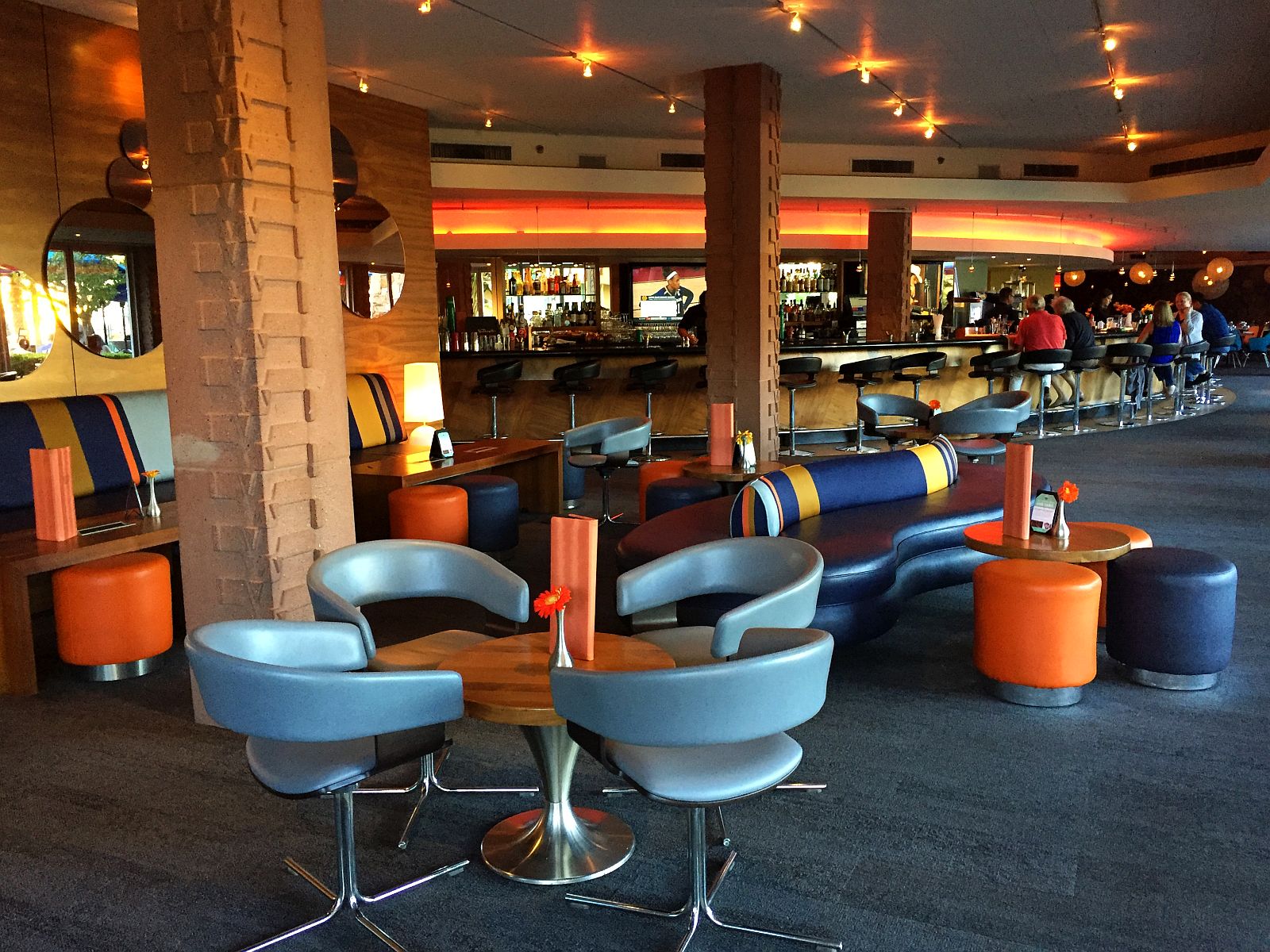
Hotel Valley Ho
Hotel Valley Ho is located just a short walk from Old Town, Scottsdale, and is one of the best-situated hotels if you are looking to explore the area by foot. It’s also one of Scottsdale’s most fun hotels. The property was originally built in the 1950’s, and was the place to visit for Hollywood stars ranging from Bing Crosby to Zsa Zsa Gabor. For those looking for some fun on the weekends, the The OH Pool hosts pool parties throughout the summer featuring a live DJ and rentable cabanas.
A few years back the hotel was expanded, most notably with the addition of the multi-story Tower, which features roomy suites and amazing views in all directions. If you’re really looking to make the most out of your stay, be sure to book one of the many suites that include a full kitchen, comfy living room with walk-out deck, and enough room to host a gathering of all of the new friends you make at the pool.
Spas

Well & Being Spa at Fairmont
The Well & Being Spa is located at the Fairmont Scottsdale Princess, one of the largest and best-known resorts in Scottsdale. The property itself is huge (it’s spread out over 65 acres), and the spa is no different. Inspired by Havasupai, a hidden oasis deep in the Grand Canyon, the spa features a gift shop, full gym, and yoga and workout studios — and that’s just the start of it. Follow the set of stairs down, and you will enter an expansive space featuring a roomy locker room, pre-massage lounge area, outdoor waterfall hot tub, and access to their exclusive rooftop pool to relax at after your treatment.
I arrived an hour before my visit in order to try out all of the options the spa offers. I started off with the Swedish dry sauna to get the sweat flowing, followed by the steam room, hot therapeutic whirlpool, a refreshing dip in the cold plunge pool, then finally the Swiss shower. I decided to give the Himalayan Salt Stone treatment a try. Featuring warm stones, the masseuse works your entire body delivering salty minerals to your body, with the goal of really working your muscles while also removing toxins.
Thoroughly relaxed and with little motivation to do much else for the rest of the day, I made my way outside and up a set of stairs to the pool where I whittled away the rest of the afternoon under the desert sun having lunch and trying out a few cocktails, including the Arizona Fire & Ice, made with vodka, lemonade, prickly pear and jalapeno.
Well & Being Spa at the Fairmont Scottsdale Princess

Sanctuary on Camelback Mountain
Sanctuary Resort Spa has been a famous destination spa resort for years due to its reputation (even Jay-Z and Beyonce stayed here during their honeymoon). If you’re not lucky enough to have booked a room here, you can still visit the spa, which has an Asian-chic vibe and a laundry list of treatment options. Bamboo shrouds its understated entrance, and the spa features a Zen meditation garden and reflection pool. Though smaller than some of the newer, bigger spas in the area, Sanctuary has a boutique feel. Before my treatment, I spent an extended visit to the eucalyptus steam room to refresh my skin after several days in the dry, desert air.
Known for their highly skilled staff, I chose a classic Swedish massage. The rooms are situated to look out over the garden, and the peaceful spa music and the aroma of the berry-infused lotion used on my skin had me working hard not to nod off and miss everything. My masseuse even paid special attention to my neck which was sore form a vacation-related neck strain from a night spent sleeping on large hotel pillows (there are worse minor injuries to endure).
Sanctuary on Camelback Mountain

We Do Men
For many men, the idea of visiting a traditional spa is out of the question. For those guys, there’s We Do Men, the boutique spa experience tailored just for men. The brainchild of Stacey Grondahl, We Do Men caters to men looking for skin treatments without all the normal fuss. The decor inside is part tattoo parlor, part cigar bar, with leather upholstery, pictures of male icons such as Johnny Cash and Frank Sinatra on the wall, and a faux-diamond encrusted skull that greets you at the entrance.
A look at the names of the treatments here will let you know you’re not in your girlfriend’s spa. The Sake Bomber, Not Another Prick, and Holy Mother Prick(er) are just a few of the options you can choose. With a rockabilly soundtrack on the stereo and a coffee and tobacco-scented candle filling the room with its scent, I had my face worked over for better part of an hour. Despite my beard (something they are very used to working with here), I had my skin treated with blue agave extract, menthol and a pair of metal balls (yes, really) to make me look glowing like I had never glowed before.
Restaurants
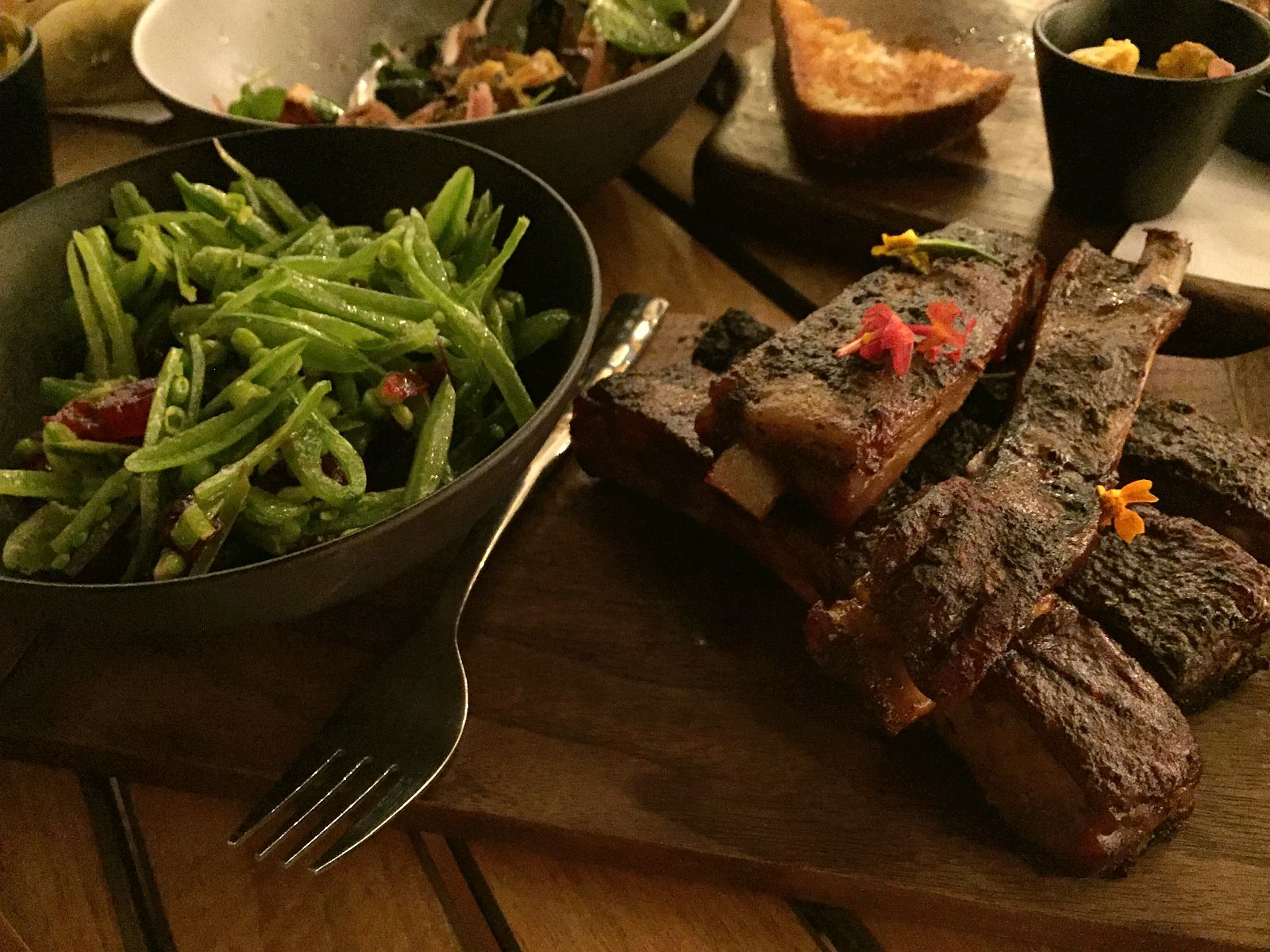
Mowry and Cotton
Newly opened at The Phoenician, Mowry and Cotton takes high-end cuisine and serves it in a comfortable, relaxed atmosphere. With its exposed wood interior, Edison bulbs and mason jar aesthetic, Mowry and Cotton is clearly taking a cue from contemporary dining trends (the bearded waiters in their jeans and cooking aprons would be just at home at many of the restaurants back home in Brooklyn). The menu is a mix of Old West favorites and newer creations, and is attracting new visitors curious to see what all the buzz is about (Chef Tandy Peterson and Mowry & Cotton were recently named one of the three best chefs and restaurants, respectively, by Phoenix Magazine).
We started with the charred brussel sprouts served with bonito and chicory kimchee, and a heaping order of the buttermil buns sprinkled with citrus sea salt butter and glazed with duck fat fig butter. On a tip from the front desk, we followed this up with an order of lamb tacos made with harissa braised lamb and seasoned with pickles and herb quark, as well an order of the smoked spare ribs served with cranberry snap pea slaw and covered in a honey chipotle barbecue sauce. With little room to spare, we finished with the peanut butter bar for dessert, a concoction of soft caramel, mousse, and chocolate croquant.
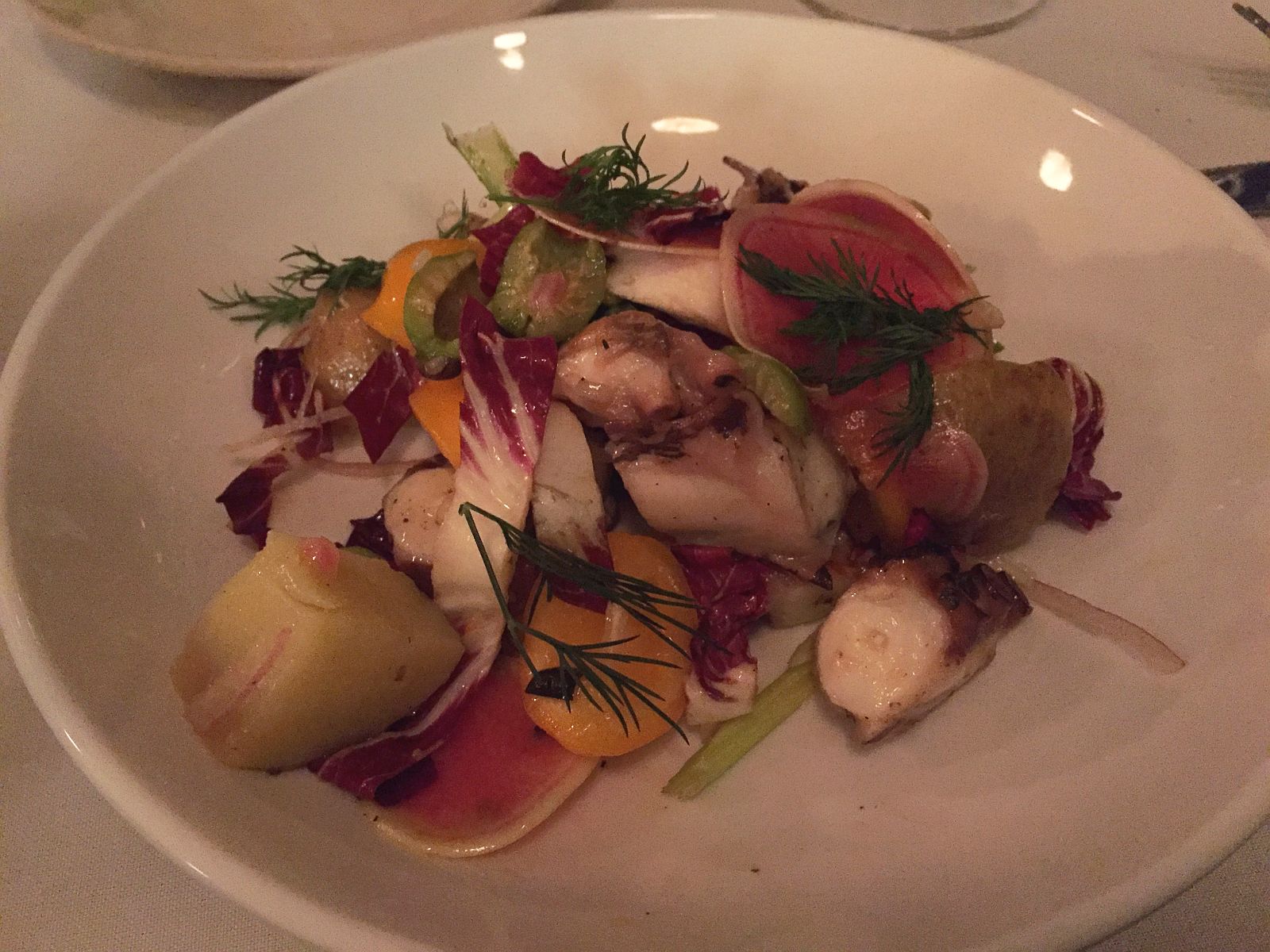
FnB
FnB is fast approaching its 10-year birthday, and this storied restaurant hasn’t let off the gas pedal since opening to acclaim. Located in Old Town, FnB (which stands for Food and Beverage) obsessively focuses on seasonal, local ingredients prepared with the type of care and and attention to detail normally found in much stuffier restaurants. Stuffy FnB is not: diners are seated close to each other in one of three small dining rooms, and decoration is kept to a minimum to avoid distracting you from your meal. The table next to ours struck up a conversation with us when they caught us gawking at one of their dishes — it’s one of those places where everyone is excited to talk to each other about their meals.
On the night we visited, we were served by part-owner Pavle Milic, credited for bringing attention to the Arizona wine scene. Back in the kitchen, co-owner Chef Charleen Badman, a James Beard award semifinalist (affectionately known as the “vegetable whisperer”), was working her magic. We began with the savory peruvian chicken spring rolls, served with pecans and aji amarillo quark, followed by a flavorful beet and chickpea salad. We then opted for the Creekstone Farms ribeye steak served with tepary beans, poblano peppers, roasted tomato and a tomatillo salsa, and a side of brussel sprouts and broccoli. After our third glass of wine and their signature butterscotch pudding served in a highball glass and topped with whipped cream, we were already planning our return visit.

La Hacienda
Located at the Fairmont Scottsdale Princess, La Hacienda is a great high-end take on the traditional Mexican restaurant (which the Greater Phoenix area has plenty of). Boasting a selection of over 200 tequilas and an eclectic take on Mexican favorites from Chef Richard Sandoval (dubbed the Father of Modern Mexican Cuisine), La Hacienda is a reliable favorite. Inside, the restaurant is inspired by traditional Spanish architecture with beehive fireplaces and exposed wood-beam ceilings, and outside you can eat al fresco beneath strings of white lights strewn across the airy patio.
I started my meal off with their signature drink, La Hacienda, made with reposada tequila, cointreau, grand marnier and sour, and an order of chips and guacamole prepared fresh at our table. For starters we had chorizo and potato empanadas covered in tomatillo salsa and crema cotija cheese, and for dinner we shared the costilla de res, braised short ribs served over ancho chile mashed potatoes, baby carrots, herb-heirloom tomato salad, and smothered in a cherry chipotle mole.

Elements
If you’ve spent any time watching the Food Network during the past decade, chances are you’re already familiar with Elements’s Head Chef, Beau MacMillan, the New England transplant who opened Sanctuary back in 2001 and quickly rose to become one of Scottsdale’s most famous chefs. Located at Sanctuary Camelback Mountain Resort, Elements boasts enviable views over Paradise Valley. MacMillan’s menu is Far East meets local Southwest flavors, and features seasonal, local produce, sustainable seafood and hormone-free meat.
If you can, call ahead and reserve a seat out on the balcony overlooking the pool. The quiet, peaceful atmosphere is perfect for devoting your attention to what really matters here: the food. With fond memories of eating them during my last visit, the first thing I ordered as soon as we sat down was their signature shishito peppers, served gooey and a bit sweet. On a recommendation from our knowledgeable waiter, we followed this up with the fiery calamari, a spicy take on the classic dish prepared with a miso scallion vinaigrette. For our dinner we shared our giant portions of chilean seabass, served with a kimchee coconut broth, and the braised short ribs accented with a tangy hoisin sauce. With barely any room left in our stomachs, we couldn’t pass up the deconstructed s’more, a fitting dessert as the air became brisk and the campfire-like heat lamps were turned up.
Elements – Sanctuary Camelback Mountain

/
 Matt Stabile is based in New York City, and is the founder and Editor-in-Chief of The Expeditioner which was founded in 2008. You can read his writings, watch his travel videos or contact him via email at any time at TheExpeditioner.com.
Matt Stabile is based in New York City, and is the founder and Editor-in-Chief of The Expeditioner which was founded in 2008. You can read his writings, watch his travel videos or contact him via email at any time at TheExpeditioner.com.
The post Scottsdale Travel Guide appeared first on The Expeditioner Travel Site.
]]>The post Into The Great, Wide Open: The Ultimate Alaskan Fishing Trip appeared first on The Expeditioner Travel Site.
]]>
Through the windshield, I watched the de Havilland’s front propellor spin furiously as our small 8-person prop plane hurtled forward through the Alaskan sky. It was a bright, clear morning, and below us I could make out the outlines of a few of the small islands that make up the Alexander Archipelago.
Looming in front of us was one of the island chain’s biggest island, Prince of Wales Island, home to a smattering of Native American villages, remote logging outposts, more black bears than there are humans, and a former salmon cannery now turned Alaska’s premier fishing resort, Waterfall Resort Alaska, my home for the next four days. Here I would be fishing, an activity I had once sworn off back in my teenage years, an era of my life when the thought of long stretches of time spent doing nothing surrounded by nature would have been considered torture. Lucky for me, my outlook on life had since changed.
“Welcome to Waterfall Resort,” a staff member said, greeting us after our plane landed and motored to the dock. “Your bags are being brought to your rooms directly. Please head to the cannery at the top of the ramp to pick up your slickers so we can get you out on the water as soon as possible!”
And with that we were ushered into a room crammed from floor to ceiling with rows of yellow slickers where we were fitted with gear that would be ours for the duration of our stay. As I stepped into a pair of galoshes and pulled on a pair of the oversized, yellow pants with over-the-shoulder suspenders, I wondered if I would evoke the image of the classic sailor that graced the front of the Gorton’s Fish Sticks boxes I used to love as a kid. As I pulled the suspenders over my head, I realized I had put the pants on backwards, resulting in the crossed suspenders nearly choking me. A staff member rushed to my aid and helped me to put on the pants properly. Needless to say, grizzled fisherman I was not.
News to me upon arriving, a good portion of Alaska — that section referred to as Southeast Alaska — is actually made up of about 1,100 islands that span a 300-mile stretch of coastline bordering British Columbia to its east, an embarrassing admission to make for someone that prides himself on his sense of direction and knowledge of world geography. Due to the island’s many freshwater lakes and streams that feed into the protected island channels — and therefore prime spawning locations — it is here where sport fishermen from around the world flock for some of the best salmon fishing in the world.

A half-hour later, myself and three other fishermen, along with our assigned fishing captain, Captain Mitch, were floating alongside the shores of Baker Island, dropping our lines into the cool Pacific water, hoping to attract the attention of a school of silver salmon grouped below us.
I learned alot about Captain Mitch over the next few days — let’s just say fishing far from any cell towers lends one to share many life stories. I learned Captain Mitch was a retired aviation mechanic who used to work at the Boeing headquarters in Seattle, that Captain Mitch, since retirement, has been asking his wife permission to lead boating expeditions here at Waterfall and that she’s said “yes” for the past 20 years, that Captain Mitch drinks black coffee in the morning, eats fried chicken for lunch, and Skypes with his wife every night before going to sleep around 8 p.m., and that Captain Mitch’s mascot is Papa Smurf, a nickname given to him due to his grey beard, less-than-wirey stature, and the fact that he’s the captain of the entire fleet. As a present, the staff gave him a small Papa Smurf doll that now dutifully hangs above the steering wheel. We were in good hands.
“Drop to 50 feet and reel up!” Captain Mitch instructed with the conviction of a man clearly experienced in minimizing the time needed to start catching fish.
I did as I was told, and just a few drops later, I felt a tug, followed by a hard pull on the end of my line as the fish worked to free himself free of my hook.
“Work the line up, lifting and reeling at the same time, then dropping your tip down back to the water!” Captain Mitch advised, clearly observing the ineptitude I was displaying after the bite.
As I reeled in, the adrenaline hit me, and I could feel the envious eyes of the others on me. Pulling the end of the line close to the beginning of the reel, an 8-pound coho salmon (more commonly referred to as a silver salmon) suddenly appeared thrashing on the water surface. Captain Mitch told me to guide it to the boat’s edge, where in one quick motion he leaned over, grabbed the line, pulled the fish into the air, and whacked it on the head with the back of his gaff, stunning it temporarily, then hooking it and pulling it into the boat. My first catch of the trip.

And with that, I began to “get it.” Simpler than any cliched Hemingway-esque metaphor between man and beast, I experienced the pure sport of fishing, and the excitement that comes with wresting a large fish from the depths of the water with only a thin pole and a bit of bait, a surprising feeling for someone that abhors the thought of hunting land animals.
Captain Mitch flung my trophy into the large cooler in the center of the deck and re-baited my line. The others had quickly gone back to dropping and reeling in their own lines in search of the next catch. We had several hours of daylight left in the day, and little time to dwell on my first catch.
Mornings start early out on the water. The next day, having woken, showered, and eaten a quick breakfast, we were leading the way out of the docks at 6:30 a.m. sharp, the Alaskan early morning sun already high above the horizon after emerging more than an hour earlier. This morning we were heading 1 ½ hours south to the open expanse at the tip of Dall Island where the nutrient-rich, cold waters of the ocean meet the warmer waters of the archipelago’s many inlets. Here we were in search of the prized halibut.
For those like myself who, prior to this trip, wouldn’t have been able to describe the difference in shape and size between a halibut and a salmon, the halibut is a flat-faced, diamond-shaped bottom feeder with a complexion matching that of army camouflage. They are also hard to find, one of the tastiest fish to eat, and notorious for putting up some of the hardest battles with fishermen in the sea.

After motoring to a spot Captain Mitch favored, we dropped our lines down 100 feet to the ocean floor and quickly located a school. Minutes later I had a bite. Rather than the side-to-side thrashing I had experienced with the salmon the day before, when the halibut bit, I felt an initial tug, then an immediate yank downward as the fish seemed to flatten out in protest, using the principles of water displacement to its advantage.
In reality, halibut just grow to be really huge. Several fisherman during my time there caught ones weighing over 100 pounds, and record-setting catches often exceed 300 pounds (the weight limit currently stands at 300 pounds, which means those truly large catches are thrown back in the water with the assurance they will end their life due to natural circumstances courtesy of the Alaska Department of Fish and Game).
My first and only halibut of the day put up a hard fight, my forearms throbbing by the time I pulled it up after 15 minutes of constant reeling and pulling. As Captain Mitch yanked it aboard, I was intrigued by its alien-like bulbous eyes situated unevenly on its head — apparently there’s not much to look at on the seafloor — and its scaly, green body, nothing like I imagined it would look like having eaten plenty of the delectable white fillets at respectable restaurants throughout my life.
Current limits set the daily haul at one halibut per fisherman per day. After we all successfully caught one each, we headed back to shallower water where we were able to whittle away the rest of the morning and early afternoon until we caught our boat maximum of 24 salmon (6 each per day), leaving plenty of time to motor back to the resort with enough daylight left in the day for me to finally explore its grounds.

Shortly after lunch, I was on my way to start exploring the resort when I was stopped by an excited member of one of the other boats.
“If you go now, you may still see the bear!” he said, pointing backward in the direction of the hill where the dining hall was located.
Not one to miss out on wildlife sightings, especially those involving animals that could potentially eat me at their whim, I hightailed it forward. Unfortunately for me — though fortunate for perhaps my physical health — said spotted black bear was nowhere to be found, replaced instead by a disinterested fawn grazing on a patch of grass.
I snapped a picture with my phone and continued on. At the top of the hill I took stock of the resort below me. Waterfall can date its history back to when the Waterfall Cannery was founded in 1911. Over the years, as it grew, the cannery added housing units for the workers (now cabins used for the guests), along with massive wooden structures to house the cannery itself. At its peak, the cannery produced 220,000 cases of silver salmon. Today, the complex has been converted into the state’s largest sport fishing resort (it’s also home to the state’s largest private boat fleet), welcoming over 2,000 guests a year.
The bulk of the 52-acre property is undeveloped forest, part of the Tongass National Forest, where the dense growth and mossy underbrush makes it hard to explore by foot. For that reason, an elevated wood bridge was built to allow visitors to explore inland to the namesake waterfall where the resort gets its name.
After a short walk along the beach, then onto said bridge for a half-hour trip inland, I finally emerged at a clearing in the forest that revealed the massive, multi-story-high waterfall. Fed by a slow-moving stream above, I lost track of time as I listened to the sound of the falling water and watched the hypnotic show the water produced as it trickled its way down.
The pool of water at the base of the waterfall is the final stop for many salmon who are born here, and who end up returning to die here after an arduous trip upstream to finally spawn at the very spot where they started their lives. Naturally, the bears know this, and on most days you can spot groups of bears and cubs as they congregate below in search of an easy meal. Today, however, there were no bears, only a sole brave photographer standing knee-deep in water, shooting the falls from below.
Returning back to camp, I headed to dinner at the dining hall. The tables are grouped by boat members and the day’s biggest catches by fish are announced at the end of the meal, with winners awarded commemorative hats (and patches for those with catches exceeding certain limits). Following dinner, as per ritual, most everyone retreats to the Lagoon Saloon, Waterfall’s sole drinking establishment where both guests and workers can congregate over local Alaskan brews and share fish stories from the day.

Late the next morning, after another successful haul of silvers that saw us creeping near our day’s limit by lunchtime, the blue sky that had blessed us since our arrival began to give way to a thin, grey overcast. Word around camp was that we had some “weather” rolling in, with rain and wind predicted to pick up considerably just in time for our departure.
“What happens if the weather is bad enough the planes can’t fly us out tomorrow?” I asked Captain Mitch.
“If they can’t fly, then we boat you out,” he replied, not looking up as he looped a fresh piece of bait onto a hook. “And if we can’t boat you out, you get to stay another day. But that’s only happened a couple times since I’ve been here, and I’ve been working here for over 20 years.” He paused, for dramatic effect. “Trust me, you’ll make your flights tomorrow.”
His response clearly indicated that the logistics surrounding the departure of close to a hundred people and their respective boxes of fish would revolve around the question of “how” rather than “if”; either we were leaving by plane or we were leaving by fishing boat flotilla, piloted by a fleet of captains who had spent their fair share amount of time navigating in disagreeable conditions.
“I’ve got one more spot I wanted to show you guys,” Captain Mitch informed us as we pulled up our lines. “Are you up for a bit of driving?”
A half hour later we were motoring out in the direction of the open ocean, the island masses spread out behind us. We veered north, skating around the pointy cape at the southernmost tip of Baker Island, then steered toward land, finally coming to a stop in a quiet cove surrounded by towering cliffs.
“Allright, I’ve gotten reports that the halibut are biting here. Let’s drop down 150 feet and see if we can catch our limit for the trip. I’ve also heard we may have other visitors around here.”
Visitors? I assumed he meant other fishermen eager to get in on our prime halibut spot. Minutes later after dropping our lines, we discovered what he meant.
Off the starboard side of the boat, halfway between our tiny vessel and the nearby coast, we heard a tremendous exhale, followed by the release of a massive spray of water blowing into the sky. Suddenly, the black head of a humpback whale breached the surface of the water, its gigantic body following behind in a tremendous arc, finishing with its fluke sweeping upwards towards the sky before its entire body dove back down below.
By this point most of us had little use for fishing rods, and we had lunged for our cameras that we were now clicking away with. For the next half hour, as we floated in place and took shot after shot, we were treated to a show as two other humpbacks joined in and fed in our little cove. Circles of bubbles would appear from below — the whales do this to cause fish to congregate for easier hunting — followed by breach after breach of the whales as they scooped up schools of tiny fish in their mouths.
After a short while, the whales began to finish hunting and swam away into the ocean. By this time the sky had turned a dark grey, the temperature had dropped precipitously and a cold rain had begun to fall. We broke out the yellow slickers that we had little use for the days before. We packed up our gear for the day, and took stock of our catch.
In total, our boat had caught over 50 silver salmon, 8 halibut, and a several pink salmons, rockfish and lingcods. Incredibly, this meant we would each be flying home with over 50 pounds of fish the next day via insulated luggage containers (each night our daily catch was cleaned, vacuum sealed and marked for eventual shipping home with us). Though unusual for mementos, I couldn’t think of anything better I would’ve wanted to take home with me to remember this ultimate fishing trip in Alaska.

/
 Matt Stabile is based in New York City, and is the founder and Editor-in-Chief of The Expeditioner which was founded in 2008. You can read his writings, watch his travel videos or contact him via email at any time at TheExpeditioner.com.
Matt Stabile is based in New York City, and is the founder and Editor-in-Chief of The Expeditioner which was founded in 2008. You can read his writings, watch his travel videos or contact him via email at any time at TheExpeditioner.com.
The post Into The Great, Wide Open: The Ultimate Alaskan Fishing Trip appeared first on The Expeditioner Travel Site.
]]>The post Wine, Sun And Seals: A Highway 1 Road Trip appeared first on The Expeditioner Travel Site.
]]>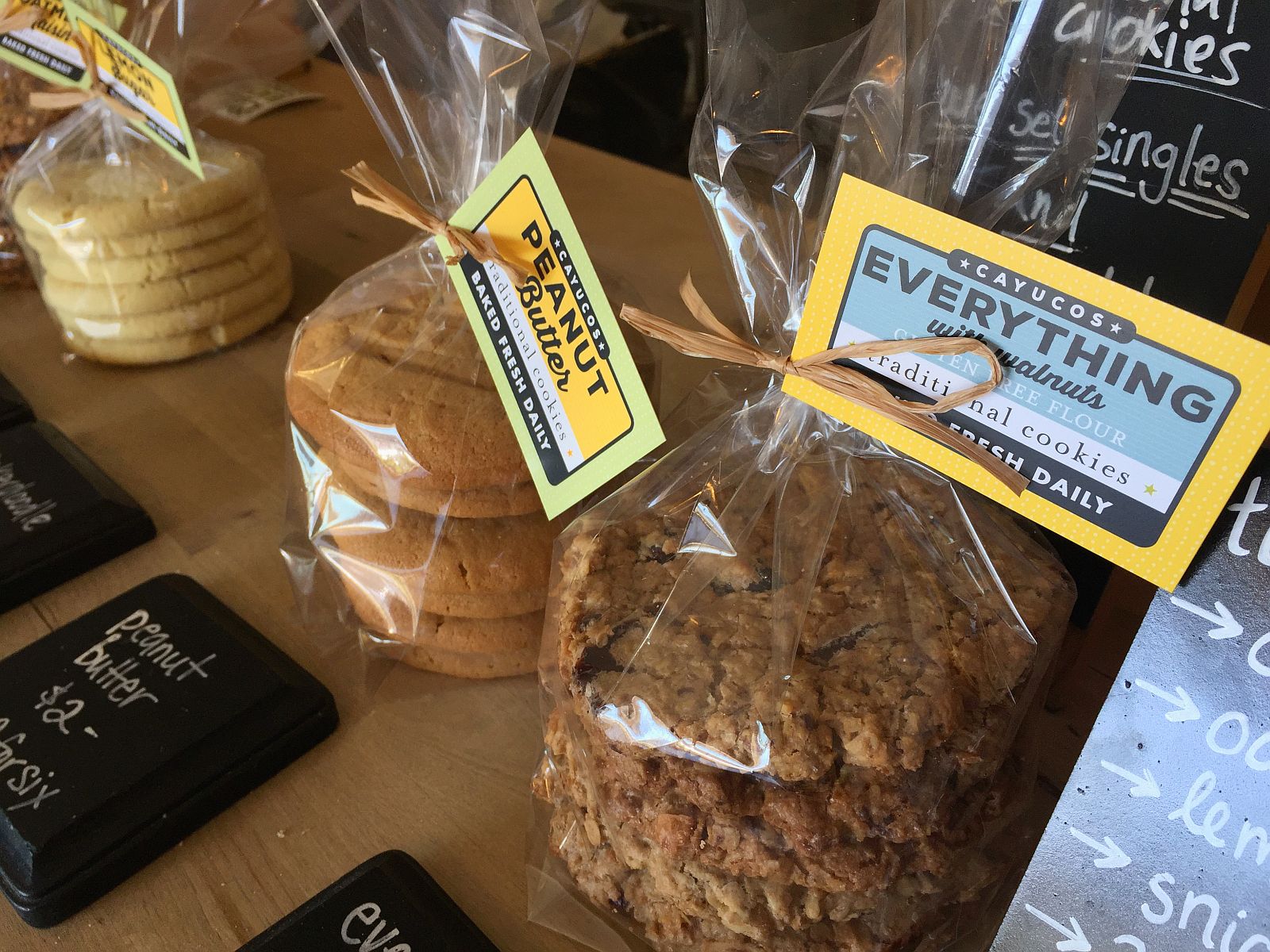
Is there any more iconic way to explore California than to travel by car along the coastline, taking in views of the Pacific as you cruise at your leisure, stopping where you want and exploring all that the state has to offer? This was our goal when we set off on the Highway 1 Discovery Route heading north in search of what makes this region so unique.
Our aim was to hop on Highway 1 after a short stay in Morro Bay and head as far north as we had time for, before circling back to go home. This stunning stretch of the highway hugs the coastline, winding its way along rocky outcrops and long stretches of unoccupied beaches. Oh to have had a surfboard with me, and more importantly, knew how to surf properly, I’m not sure we would have made it much farther.
The first town we visited was Cayucos. With its low-key vibe, small bungalows looking out over the beach and main street populated by mom-and-pop shops, the town hints at what many of these communities along the California coast looked like long before development.
Our goal for the short stop was the famous Brown Butter Cookie Company. Known all over the region (and the country), this sister-owned cookie company is a working factory with its cookie makers busy assembling the confections in the middle of the shop for all to watch who wander in. We picked up a multi-pack sampler that included bourbon, sea salt and cinnamon flavors, and jumped back in the car.
An hour later we pulled into the town of Cambria, the popular seaside village known for its great ocean views, as well as its close proximity to the area’s most famous attraction, Hearst Castle. We checked in at Blue Dolphin Inn, a newly renovated motel now made into a fashionable inn, complete with six specialty themed suites based upon locations in the world where dolphins are found. The expansive Moonstone Beach and the town’s boardwalk sit directly across the street, and if you’re okay with leaving the windows open, you can enjoy the sound of the ocean as you sleep (mixed in with the sound of occasional passing traffic).
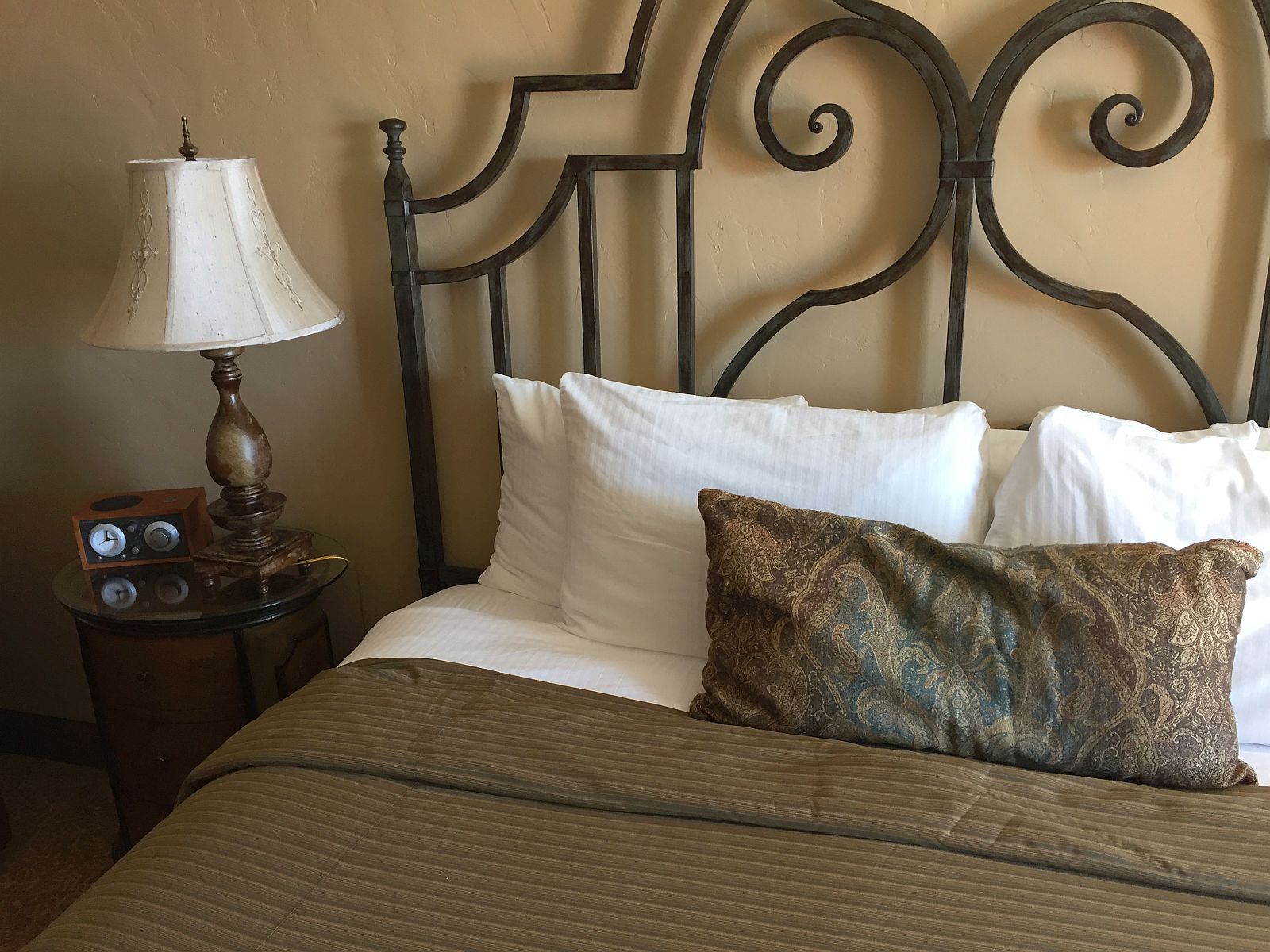
The main part of town is found inland away from the coast, home to a number of restaurants and shops for visitors. We decided on Robin’s Restaurant, a well-known eatery that’s held court for over a quarter of a century. Starting off in a health food store, Robin’s grew in popularity and owners Robin Covey and Shanny Covey soon moved into an adobe house where the restaurant is today.

Sitting outside on their canopied back deck, we ordered the Vietnamese spring rolls, followed by the prawn enchiladas and one of their signature curry dishes, Robin’s Chow, a stir fry featuring fresh vegetables. Following a tip given by Mandy, our kayak guide from the day before, we finished the night with drinks at Centrally Grown, a bar and grill that offers sweeping views of the ocean from its hilltop perch, as well as weekly live music outside.
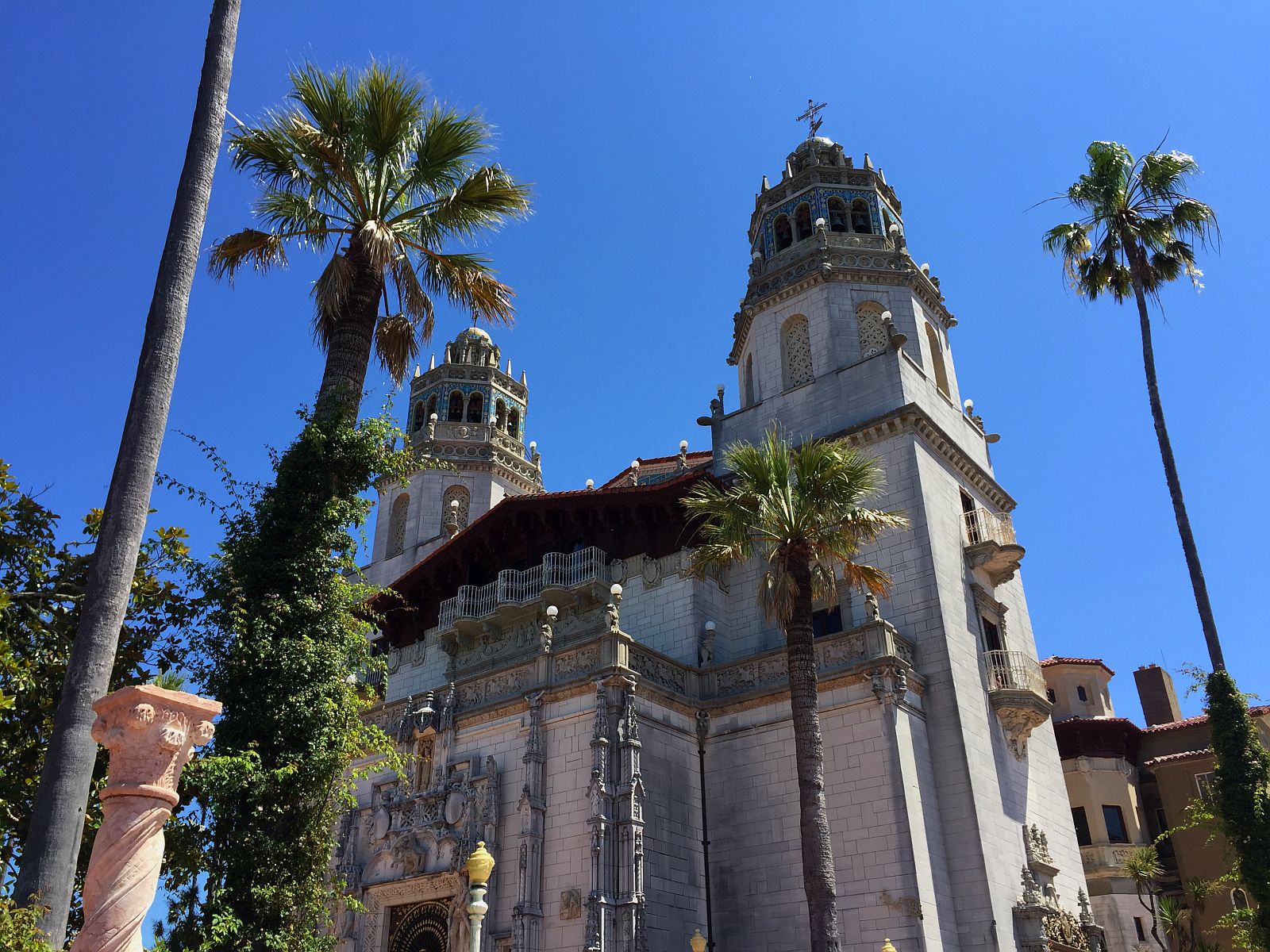
For most people, the culmination of Highway 1 lies far up on a hillside above the highway, out of sight but certainly not out of mind for anyone in the area: Hearst Castle. Located a short drive north in Sam Simeon, we found ourselves the next morning on a tour bus chugging along a windy road up a barren hill, the voice of Alex Trebek narrating the history of the late media baron’s “summer home.” Built on a 40,000-acre estate bought by William Randolph Hearst’s father in 1865 (later expanded to over 265,000 acres), the complex is comprised of the main building (Casa Grande — modeled after the church Santa María la Mayor, in Ronda, Spain) as well as three guest houses, the famous Neptune Pool and accompanying indoor Roman Pool, as well as a nearby zoo that was once home to hundreds of animals, many of which were free to roam the land. In all, Hearst Castle is made up of 58 rooms, 41 fireplaces, and requires half a million gallons of water to fill both pools.
With the sun beating down on us, the temperature inched up to over 100 degrees as we reached the top. The castle, now officially a California Historic Landmark (with private access for Hearst’s heirs), offers several tours. We opted for the La Casa Grande Rooms Tour, the guided tour of the main living room (complete with a hanging wood ceiling and Renaissance-era tapestries covering the expansive walls), as well as the Medieval-style dining room, billiard room and classic movie theater where the likes of Charlie Chaplin, Cary Grant and Joan Crawford once were entertained.
After the tour, visitors are free to roam the grounds for as long as they want. We took our time exploring the nooks and crannies around the several guest houses, as well hiding from the sun inside the lavish Roman Pool. Had the late morning’s heat not started to finally wear us down, we could have spent at least another hour exploring the meticulously maintained grounds and surrounding gardens.
Back down the hill and across the highway, we stopped in town at Sebastien’s General Store, a former general store and still home to a small post office that can date its history back to 1867. The store is now home to the Hearst Ranch Winery tasting room and a small cafe specializing in burgers made from cattle from the Hearst Ranch.
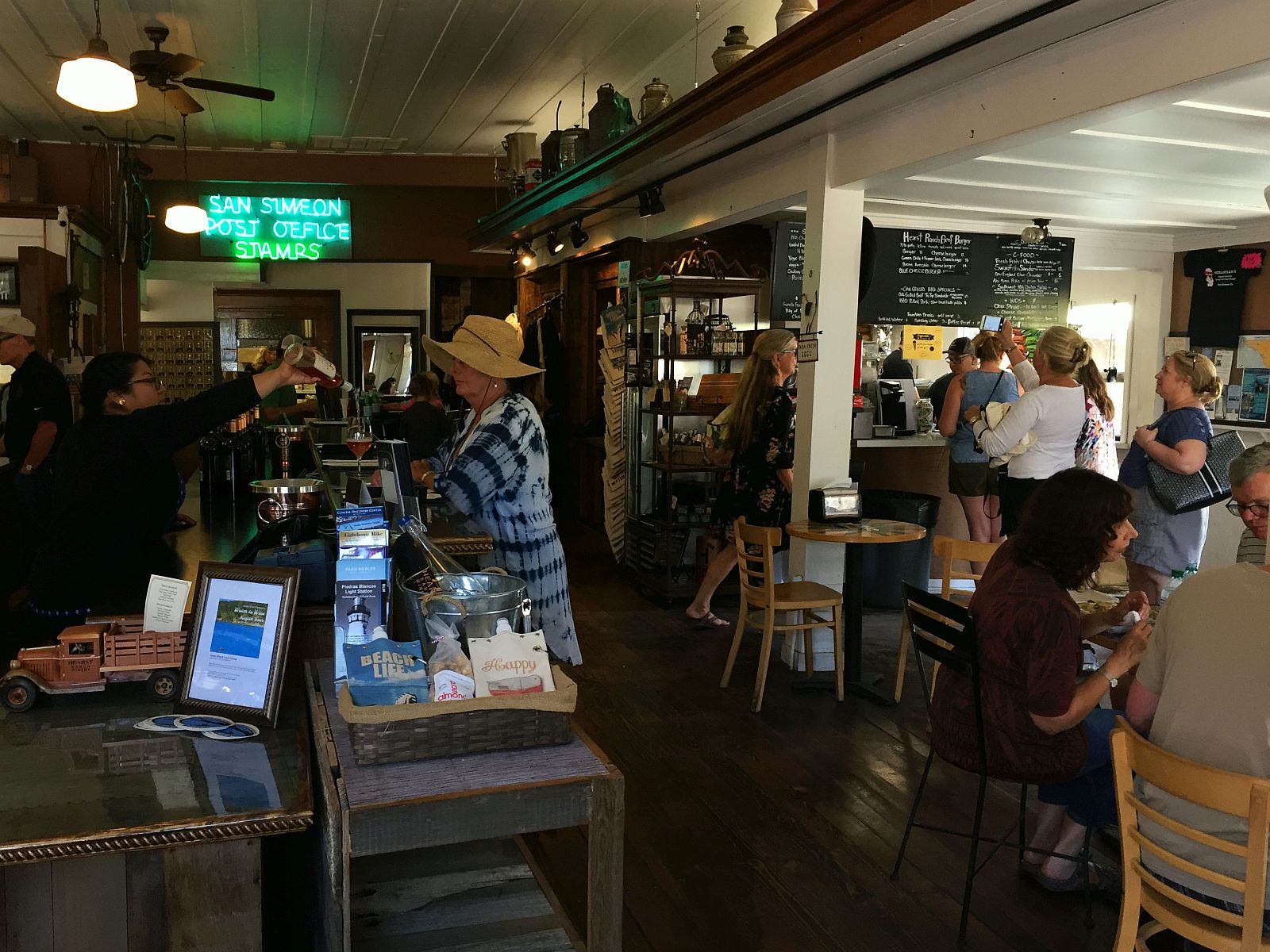
My favorite from the tasting was the gold-medal Cabernet Sauvignon (look for the black cherry, lush blackberry, and roasted coffee bean flavors), but you’d be hard-pressed to find any you didn’t like, especially paired with a grilled cheeseburger.
With the afternoon sun beating down on the coastline, it was a perfect time to check out the area’s most famous sunbathers: the northern elephant seal. A short drive north along Highway 1 from San Simeon is the Elephant Seal Rookery, home to an ever-growing colony of elephant seals who come ashore for one-month intervals, twice a year: during the winter for mating season, and then in the summer to molt and grow new fur.
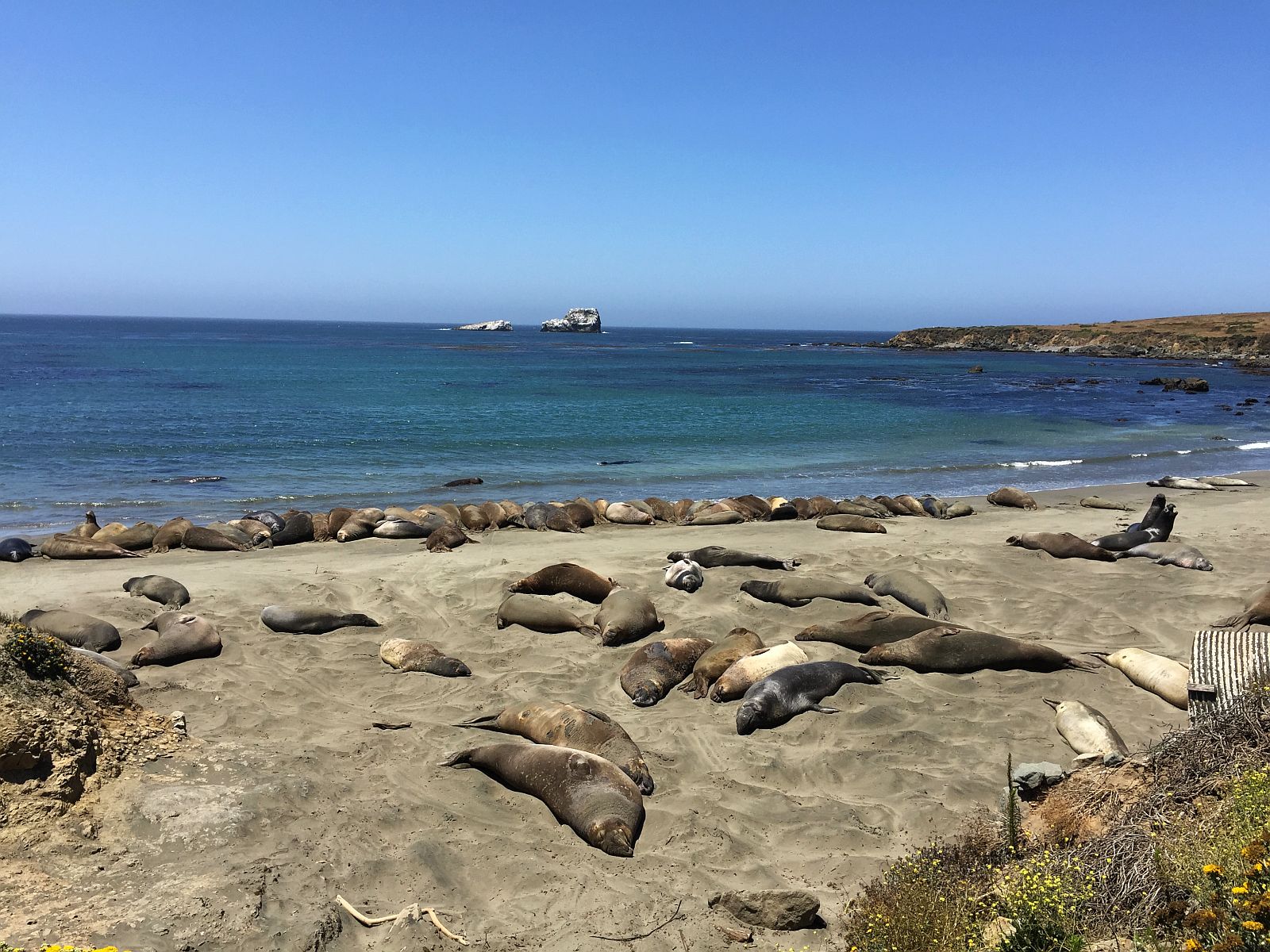
Parking our car in the small lot next to the beach, we followed the elevated viewing platform until coming upon a small section of the beach were a rotating group of 50 to 75 elephant seals were lounging about on the water’s edge, their massive bodies piled upon each other, forming a heaving, massive blob of life.
The elephant seal is the largest seal in the Northern Hemisphere and the second largest seal in the world — their lengths reaching up to 16 feet long and weighing upwards of 4,000 to 5,000 pounds. From above, we watched as the seals swam out of the water and pushed their way into the middle of already crowded groups for a spot to lounge, while others were content to slither their way further up the beach and flip cool sand onto their bodies with their short arms.
Looking north, I could see Highway 1 snaking northward along a dry valley, eventually leading to Ragged Point, through Big Sur and on to Monterey and San Francisco. But this would be as far north as we would be traveling. Tomorrow it was back south for us. Luckily, I had saved room in my luggage to take home several bottles of wine collected along they way, reminders of the road trip for another day.

/
 Matt Stabile is based in New York City, and is the founder and Editor-in-Chief of The Expeditioner which was founded in 2008. You can read his writings, watch his travel videos or contact him via email at any time at TheExpeditioner.com.
Matt Stabile is based in New York City, and is the founder and Editor-in-Chief of The Expeditioner which was founded in 2008. You can read his writings, watch his travel videos or contact him via email at any time at TheExpeditioner.com.
The post Wine, Sun And Seals: A Highway 1 Road Trip appeared first on The Expeditioner Travel Site.
]]>The post In Search Of Life In Morro Bay appeared first on The Expeditioner Travel Site.
]]>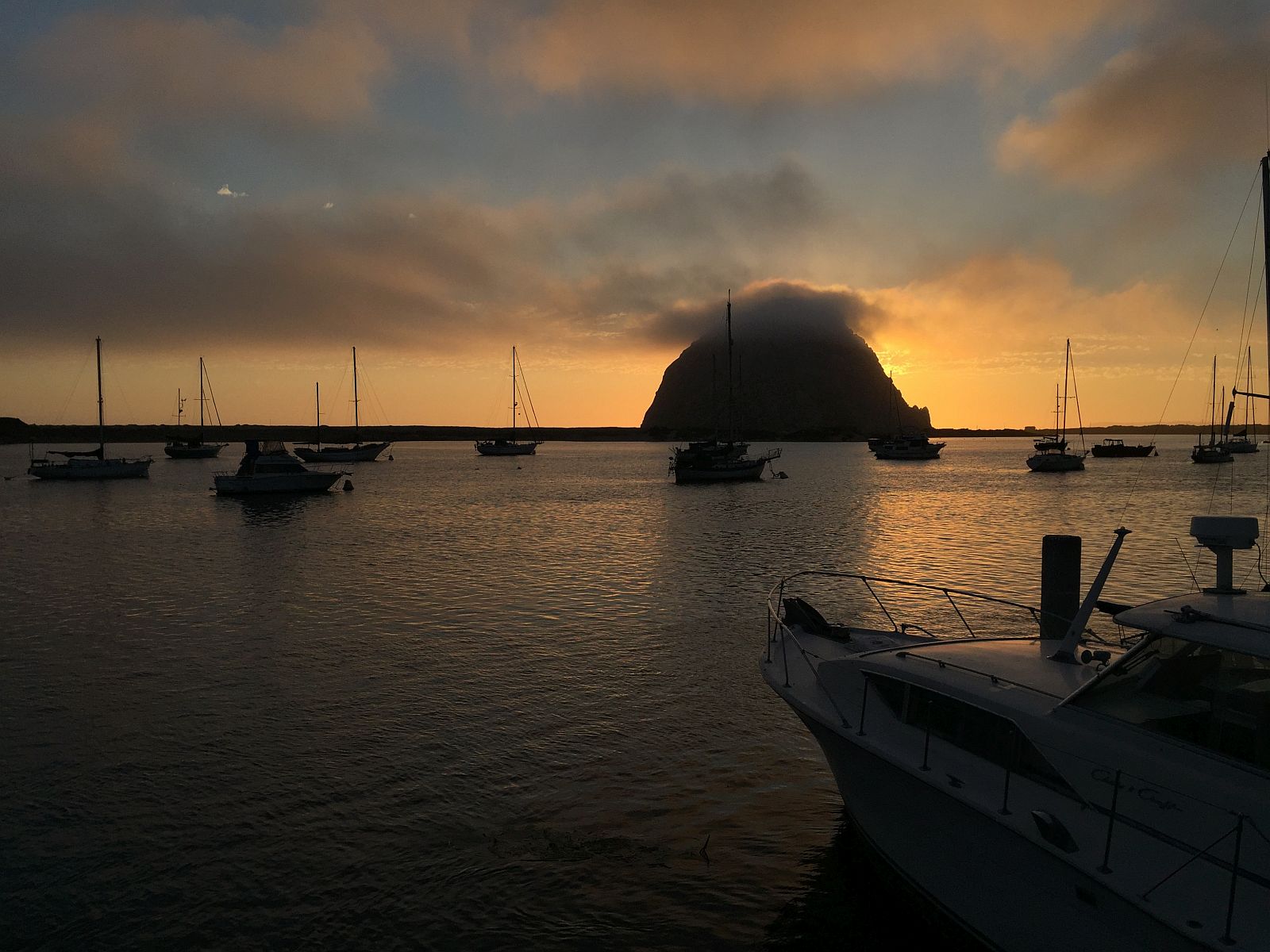
It’s hard to compete for the attention of travelers to California when your neighbor to the north is San Francisco, arguably one of the country’s most beautiful cities, and Los Angeles to the south, which, let’s face it, doesn’t have to work hard to get noticed.
It’s lucky for the Central Coast, that coastal stretch of Central California between those aforesaid cities, that it’s been blessed with enough natural beauty, sandy beaches, esteemed wineries and assorted species of wildlife that it doesn’t have to work all that hard for a place in the spotlight.
After a short stay in Los Angeles and a stop in Santa Barbara to celebrate the 4th of July, my travel partner and I got back in the car and headed north. Our first stop, Morro Bay, took about two hours to drive to, beginning with a jaunt through countless acres of farmland, where much of the country’s produce comes from, followed by a lengthy stretch where we were treated to panoramic views of long, sandy beaches with the sparkling waters of the Pacific Ocean stretching out toward the clear sky. As we approached town, iconic Morro Rock appeared on the horizon, jutting out from the ground like a giant road marker leading our way into town.
Morro Rock is actually a 581-foot high magma mixture that is the remnant of ancient volcanic activity, one of 13 along the coastline in this area. Stretching out below it is the town’s namesake bay, Morro Bay, a 4-mile-long bay home to an eclectic mix of wildlife including over 200 species of birds such as the great blue heron, the great and snowy egret and red-tailed hawks, as well as many water mammals such as harbor seals, sea lions and California sea otters.
On our first morning out, in order to get a better, more intimate view of the wildlife, we decided to don life preservers and take a guided kayak tour of the bay via Central Coast Outdoors. Founded by former tour guides, Central Coast employ some of the most knowledgeable guides in the area. Leading us out that morning was our guide, Mandy, an ex-competitive kayaker who was thankfully long on patience (her first task that morning was dealing with New Yorkers getting into kayaks for the first time in a long while).
Our first stop in the water was a long inlet through the marshland where we encountered about two dozen sea lions lazily laying on the shore’s edge, sunning themselves under the morning sun. Careful not to get too close as to disturb them, the occasional sea lion would lift his head and reveal his long whiskers as we passed by, checking out the new aquatic visitors. On our way back out into the bay, a youngster dove in as we passed and followed along at a distance, playfully watching as we rowed away.
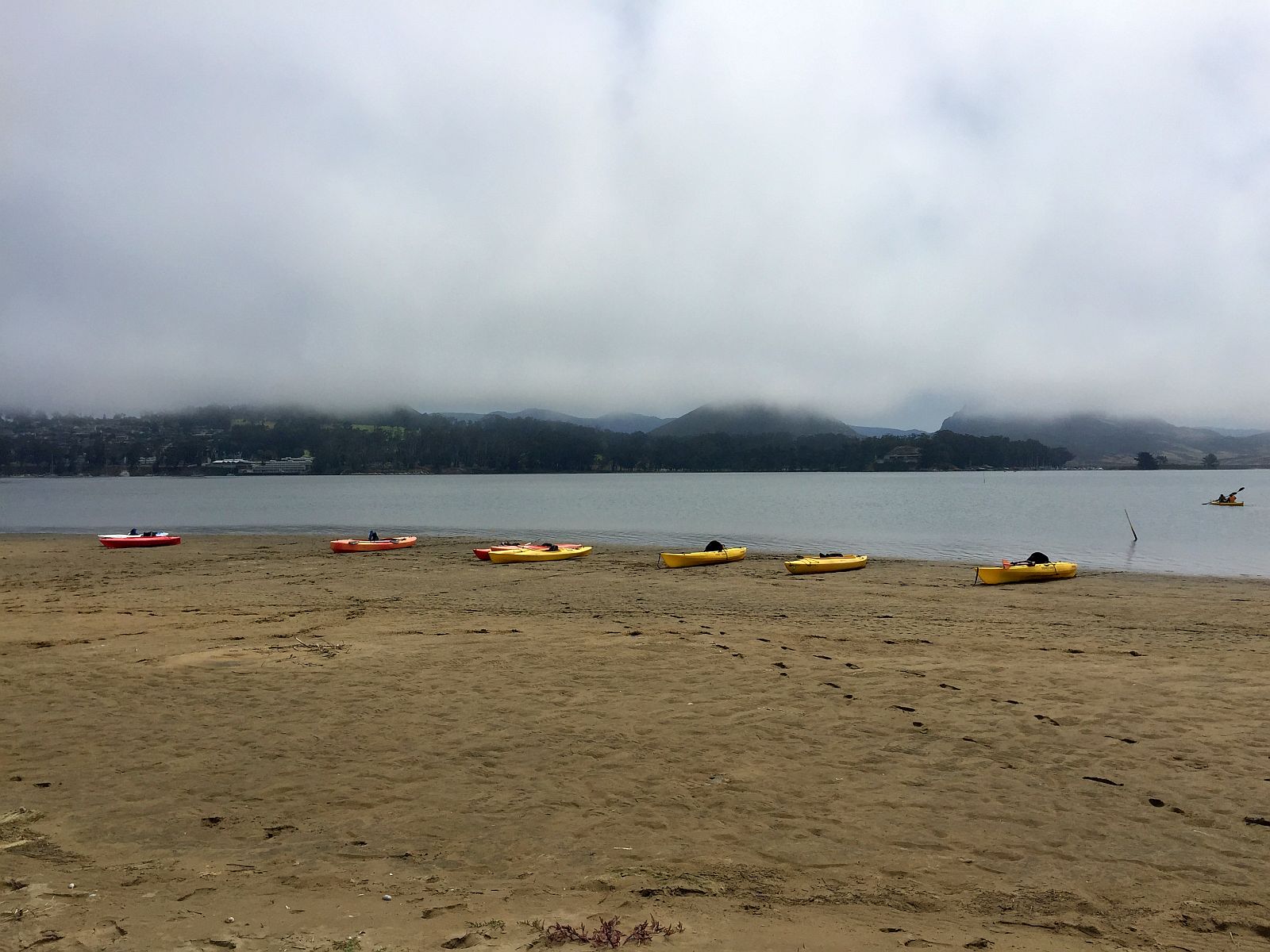
After kayaking out to a moored barge — now a newly working oyster farm where we watched the fisherman haul in their take — we made our way to the far edge of the bay and grounded our kayaks along the sandy beach on the spit of land that separates the bay from the ocean. While lunch was being unpacked, we hiked across the tall sand dunes for views of the ocean where the waves pounded the beach with Morro Rock towering in the distance.
After a well-earned lunch of freshly made quinoa salad, turkey and tomato sandwiches, walnut apple salad, and of course a couple glasses of local wine, we hopped into the kayaks and rowed back across the bay.
As we approached the water’s edge, we began to hear the low din of hundreds of birds calling out. Here on a small stretch of protected land, the former owners of a nearby mansion had planted a grove of eucalyptus trees, which is now the Heron and Cormorant Rookery, a nesting ground for hundreds of great blue herons and great and snowy egrets.
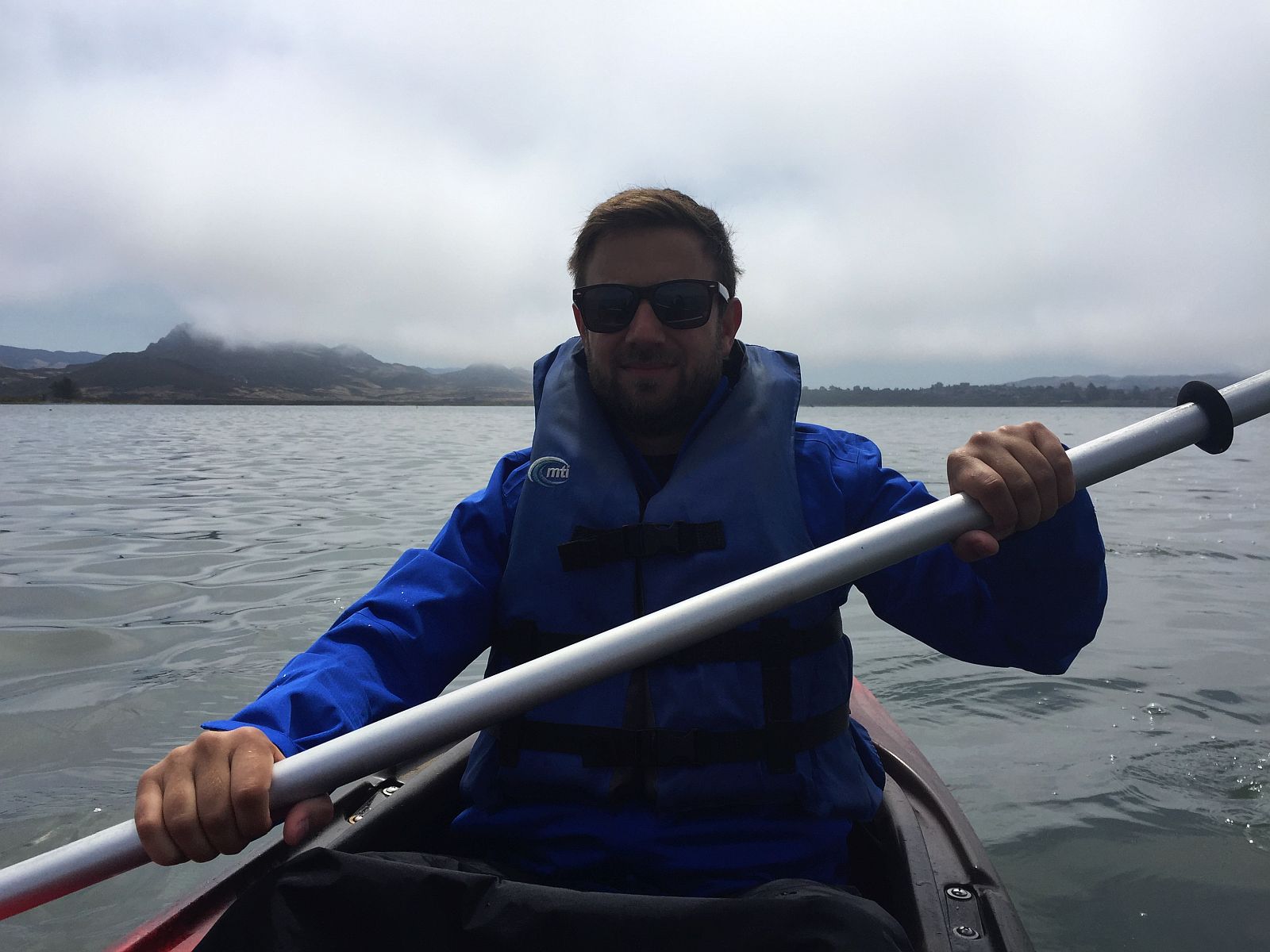
Paddling up to the point where we were nearly underneath some of the nests, we could make out the chicks calling out to their parents who were busy scrambling around the treeline with bits of food hanging from their mouths, as well as the occasional toddler who was brave enough to walk to the ends of the branch, but wasn’t quite ready to make the leap, its wings flapping in the wind to gather strength for their eventual departure.
Having worked up an appetite from the day’s activities, we cleaned up back at our hotel, the 456 Embarcadero Inn & Suites, a newly renovated, family-owned hotel that transformed itself from a mid-century seaside motel to a slick, boutique inn with sweeping views of the bay and a great location in the center of town.
The main street that runs along the waterfront, Embarcadero, is home to a variety of traditional seaside shops including candy stores, knick-knack shops, and even a small aquarium home to an open-air sea lion habitat. This being Central Coast wine country, before dinner we stopped off at Chateau Margene, one of several tasting rooms in town. The vineyard itself is in nearby Creston, and we had a full tasting of their signature Bordeaux-style wines (Cabernet Sauvignons, Cabernet Franc and their Meritage blends).
For dinner we decided on The Galley Seafood Grill & Bar, one of the town’s oldest and most beloved restaurants, featuring a revolving selection of freshly caught seafood. We started with an order of oysters — farmed locally as a result of the bay’s recent efforts to rehabilitate the once ailing industry — along with the crab cakes made with the local Dungeness crab, followed by seared ahi tuna and Pacific swordfish.
As we walked back home along the waterfront, we looked out across the bay. Morro Rock was enveloped in an orange haze, the sun having recently set behind it, and a flotilla of boats bobbed in the water as if setting their bows in the direction of the best view: a fitting view of the bay where so much life here calls home.

/
 Matt Stabile is based in New York City, and is the founder and Editor-in-Chief of The Expeditioner which was founded in 2008. You can read his writings, watch his travel videos or contact him via email at any time at TheExpeditioner.com.
Matt Stabile is based in New York City, and is the founder and Editor-in-Chief of The Expeditioner which was founded in 2008. You can read his writings, watch his travel videos or contact him via email at any time at TheExpeditioner.com.
The post In Search Of Life In Morro Bay appeared first on The Expeditioner Travel Site.
]]>The post Conquering Devil’s Tower appeared first on The Expeditioner Travel Site.
]]>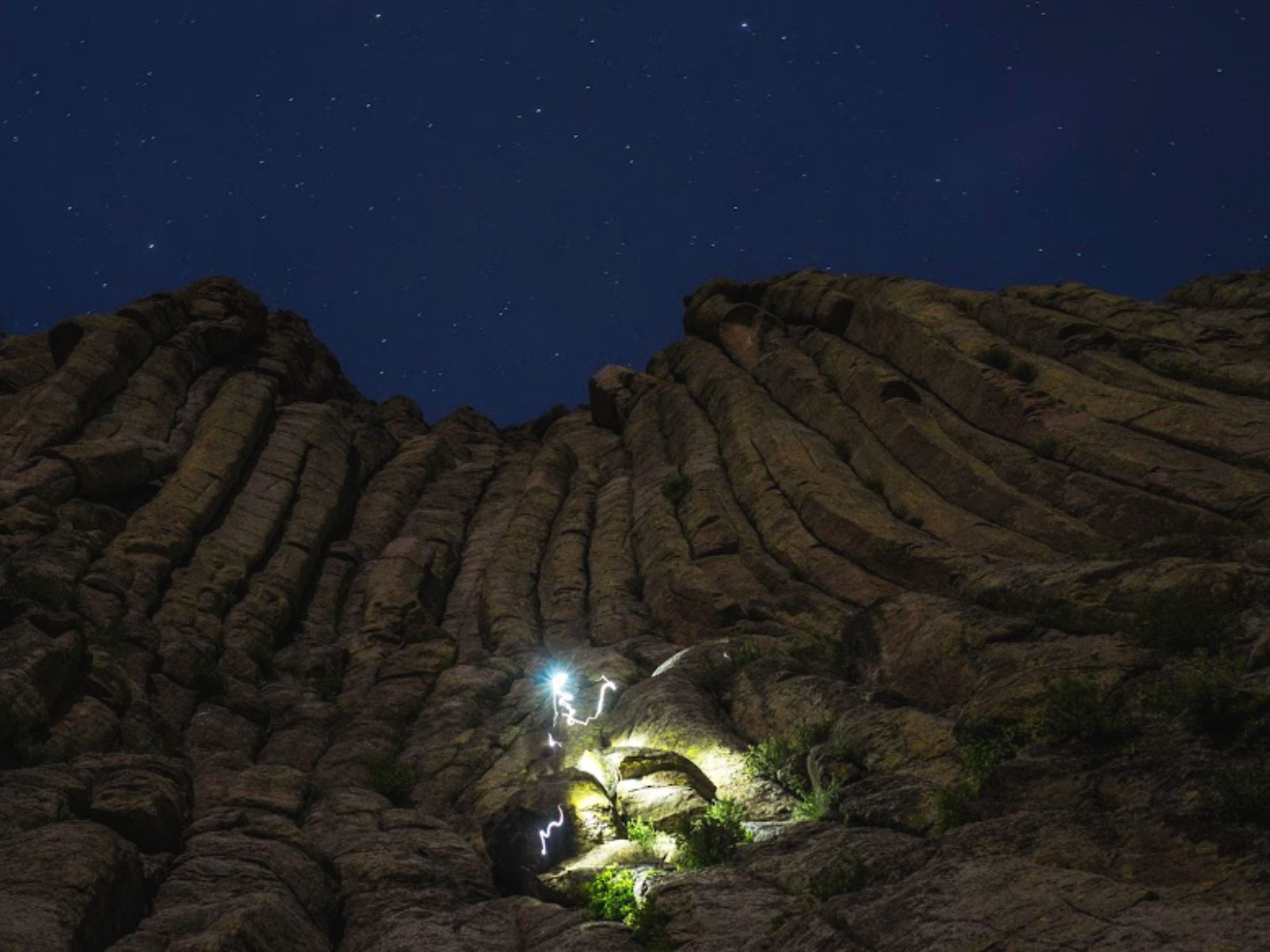
I was taught how to trad climb by a guy who said it was like learning how to drive stick: once you start, you’ll never go back to automatic.
He taught me in Red River Gorge, a climber-famous area in Kentucky, on a 5.7 grade climb called Octopus Tag. All of it — the friction of the sandstone, the huge flakes and the chimney I could nestle in to — were much more forgiving than the off-width, granite cracks I found myself on while climbing Devil’s Tower.
It was around 9:30 p.m. at the end of a long day in May, and our motley crew of six 20-something college students were exactly one mile away from the tower. At least, we were according to our out-of-service phones.
The plan was to “take the tower.” With an almost respectable amount of climbing experience under our belt, our main goal was to just try and not fall while leading. We approached the tower with the assumption that we would be climbing six or so pitches of a 5.7, mostly off-width trad route called Durrance. Our worst fear was falling, popping out a gear placement and then falling completely off the tower.
Of course, that sounds more like a nightmare than a legitimate worry now that we are back on the ground.
When you look at Devil’s Tower from the park visitor center, it looks like 600 feet of massive columns squished together and, by some miracle, still standing. As we approached the tower in the dark, however, all that we could make out was a huge, ominous formation and two small but distinct lights meandering around the top. We scrambled out of a packed Honda CR-V, weighed down by four ripe-smelling climbers and pounds of gear to make out the lights as headlamps. They were climbers, not yet finished with their route from the day.
That night, we got into a spat. Half of the group wanted to explore other areas with the prospect of bad weather in the morning. The other half thought that if we woke up early enough, we could beat the rain. We went to bed undecided and woke up to a clear, slightly windy day, knowing that was our chance. We packed up and were at the base of our climb in an hour.
After missing a turnoff in the trail, we were left to scramble up to the first pitch, adding an extra 50 feet of climbing to our day. My climbing partner, Connor “Marty” Martin, had taken the first lead. We were the last of our three pairs to ascend. When he scrambled out of sight, I stood belaying from the ledge at the base of the tower, alone except for the wind and the sights of the others climbing high above me.
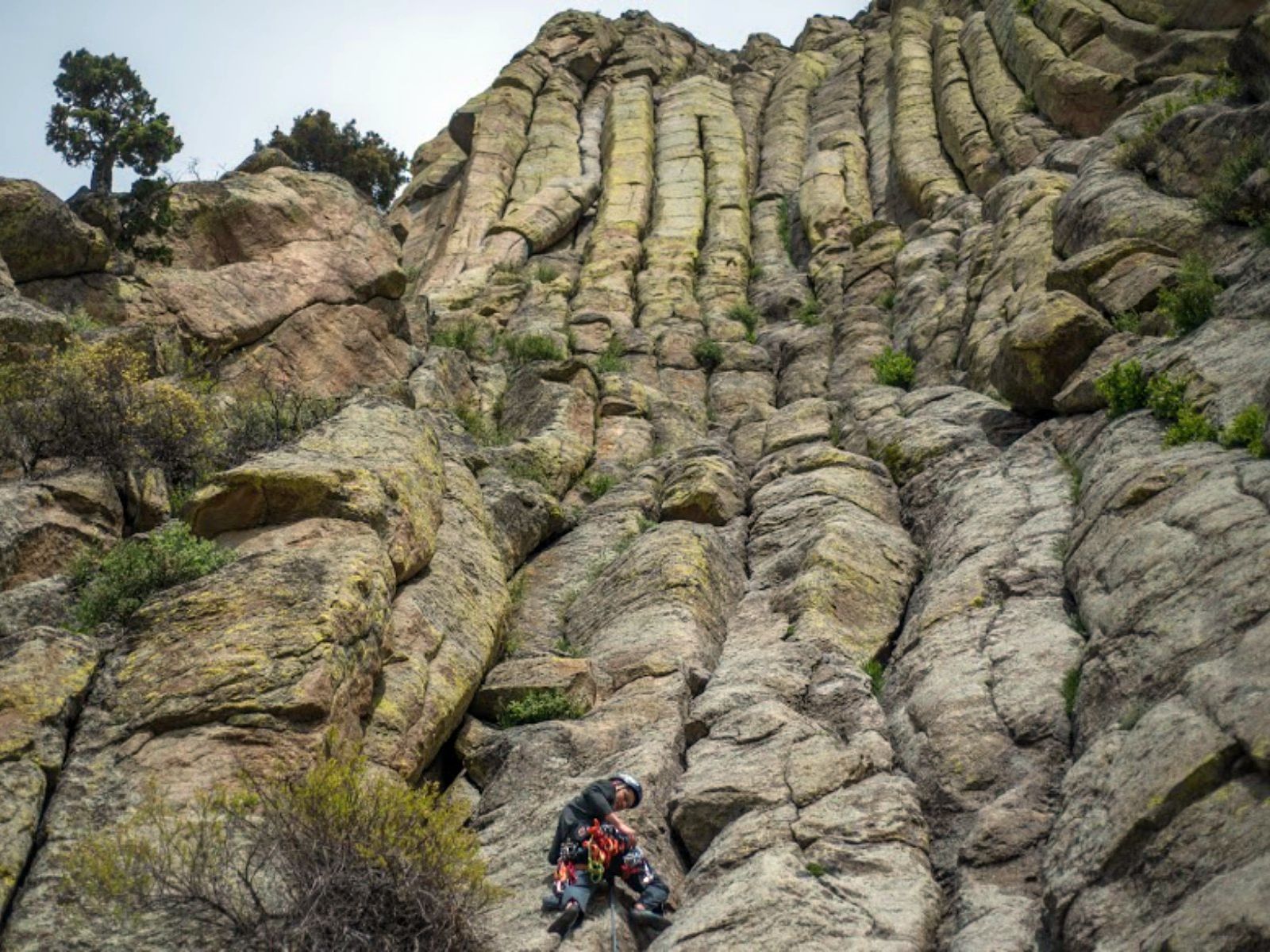
When it was my turn to climb, I somewhat gracefully cleaned Marty’s gear while making my way up the route. We met at the next belay ledge: an awkward slope accompanied by a leaning tree he had set an anchor on.
My first pitch to lead looked terrifying. The 70-foot climb is called Leaning Column, aptly named for the tilted pillar that had fallen over far enough to create a wedge of space between its bottom and the column underneath, leading to a chimney of space behind it. Climbers reach this point about mid-route.
I started off strong, humming nonsensical tunes to keep myself calm. When I got to the base of the leaning pillar, I could not figure out the move to get up and around it. My head was frantic, overwhelmed by the fear of falling combined with the knowledge that I was about to be hundreds of feet off of the ground. The pie-shaped wedge underneath the pillar only seemed big enough to uncomfortably wiggle through. I jammed into a nearby crack and decided to trust the questionable placement I had just made in order to go up and around to the chimney.
That’s when my feet cut out.
I swore at the top of my lungs as my feet slipped, my hand still jammed in the crack and holding, then, my entire weight. Slightly panicked, I hoisted my foot up to the next reasonable hold in the crack, reached up with my non-jammed hand and beach whaled my body underneath the leaning pillar.
I laid there for a minute, breathing hard and laughing from fear until I heard a call from the belay ledge above me.
“Clara, I don’t think that’s how you’re supposed to climb the route,” Nolan, who was in the second pair of our climbing group, mocked from above.
I chuckled a little to myself, still flat on my stomach underneath the pillar. After yelling down to Marty, I placed another piece of gear for some peace of mind, shook out my throbbing hand and continued on with the climb.
Marty and I made our way up and over the last light scramble, 600 feet above the ground, my chest felt like it was swelling and I thought back to more than five years before, when Devil’s Tower was a distant, unachievable dream. We had done it.
One thing to note: reaching the top of the tower meant accomplishing a dream that I had consistently thought about for nearly six years. Sometimes there are those that think you will never be fulfilled. That after you accomplish one thing, it will not feel as good as you think and you will move on to something else. At the top of the tower, trying to soak in everything about the rolling grassland around me, I only felt peace and pride.
Climbing seven total pitches took us nearly nine hours. With our late start to the day, we finally started to set up a rappel line as the sun set around us. As we descended from the tower, the stars came out and we turned our headlamps on, ready to reach the ground and crawl into bed.

[Photos by Nolan Bollier]
/
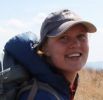 Duluth resident Clara Hatcher is completing her Bachelor’s degree in journalism at Marquette University in Milwaukee. Her love of the outdoors began in Northern Minnesota’s Boundary Waters and flourished with environmental conservation work in AmeriCorps NCCC.
Duluth resident Clara Hatcher is completing her Bachelor’s degree in journalism at Marquette University in Milwaukee. Her love of the outdoors began in Northern Minnesota’s Boundary Waters and flourished with environmental conservation work in AmeriCorps NCCC.
The post Conquering Devil’s Tower appeared first on The Expeditioner Travel Site.
]]>The post Spreading Joy At Mardi Gras appeared first on The Expeditioner Travel Site.
]]>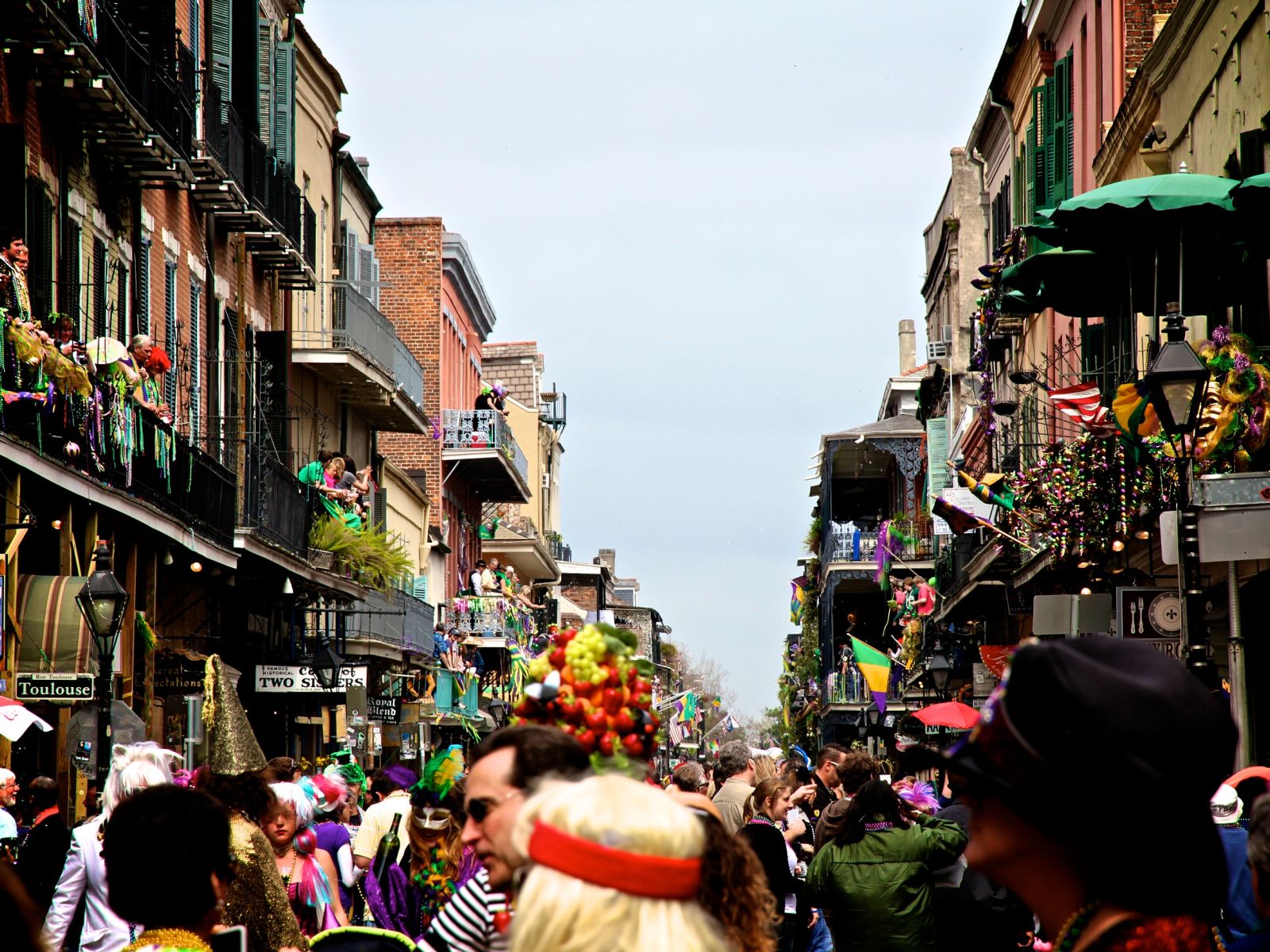
When my friend Kendra asked me to ride krewe with her on a Mardi Gras float I was unsure. We sat at the dining room table of my Seattle apartment one chilly fall night, cradling our wine glasses, polishing off a second bottle of red.
“What about the crowds?” I asked. I hated crowds and had always sworn off Mardi Gras because of them.
“You’re above the crowds on the float,” she assured me.
Kendra, a New Orleans native, rode Krewe of Tucks the year before Hurricane Katrina. Now, 10 years later, she wanted to ride again. Krewes are social clubs that organize Mardi Gras parades, their origins lie in New Orleans secret societies and early city politics. Some are huge: Endymion and Bacchus are festivals unto themselves. Others are niche, like Krewe of Barkus, which is for dogs. Krewe of Tucks, formed by Loyola graduates in the late ’60s, is known for its irreverence, sense of humor and toilet-themed throws. To ride you have to be invited, or ask to be invited, by the krewe.
“How much does it cost?” I asked.
“You pay to ride and then you buy your own beads,” she explained. “You could easily end up spending a thousand bucks or more on beads.” I reached for another bottle of wine. “You don’t want to be cheap with beads,” she advised. “If the crowds don’t like what you throw they’ll throw them back at you. And if you run out before the end it’s embarrassing. It happened to me.” I poured more wine.
“Look,” she said, standing up, grabbing an imaginary string of pearls and throwing them to an invisible parade goer, “think of it as spreading joy.”
I told her I would sleep on it and the next week I mailed in my deposit check. When, I wondered, would I get another chance to throw a thousand of dollars worth of costume jewelry to perfect strangers?
Carnival is a celebration of spring dating back to the Greeks. The Romans turned it into a Bacchanalian orgy. In Renaissance Europe it was a time of aristocratic banquets, masked balls and parades. For Catholics all over the world it is the last blowout before Lent. In New Orleans it is high camp: 12 days of parties and parades culminate into Mardi Gras celebrations where people dress up in costume, wear masks, get drunk and dance in the street.
It is a shared experience of excess that transcends racial and economic boundaries, flipping everyday problems the bird by saying: life can’t be that bad if I am having this much fun. Even the modest Mardi Gras celebration that New Orleans put on six months after Katrina, before hotels had re-opened, before there was even garbage service, boldly showed the world that the Crescent City had survived its near-death experience and was ready to ride again.
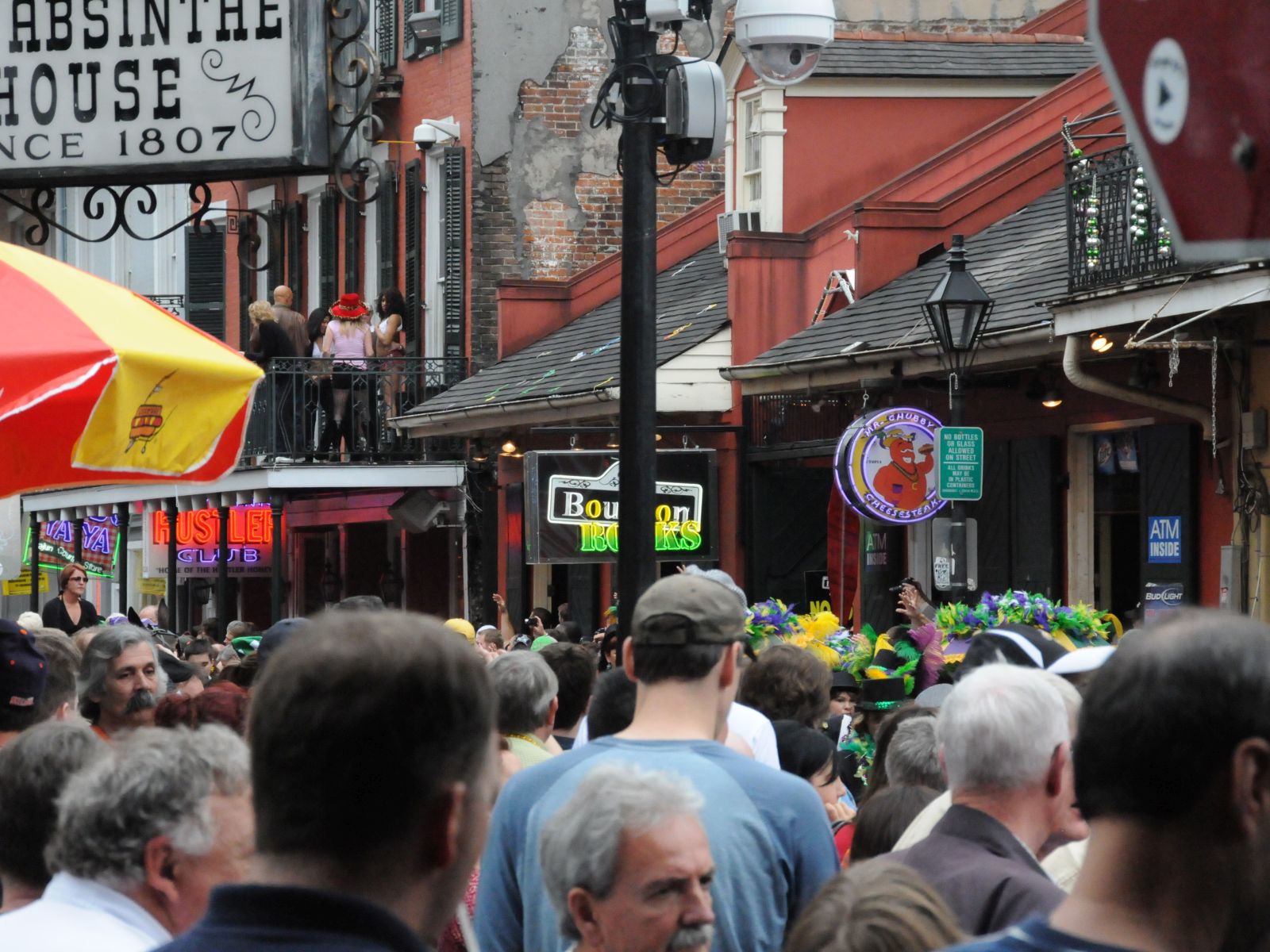
We arrived at the parade starting point on Napoleon Avenue, in New Orleans’s Uptown neighborhood. The mid-morning March sun was already hot, hiding behind a haze of humidity. Brightly colored floats lined the street. A high school marching band practiced hip-shaking New Orleans brass band classics. The Laissez Boys to our right, with their wheeled armchairs, prepared for the parade, bloody marys in hand.
The float was a replica of a casino, and our throwing spot was directly above the “shot wheel” painted on the side. I was already sweating under my purple, gold and green Mardi Gras vest as we began hanging our beads on metal hooks, getting them ready for easy throwing. We had ordered most of our beads online and had them shipped to us. We had bags and bags of them. Some made of large “pearls,” others small, and some made of the tiniest “pearls” of three or more colors braided into a twist.
The day before we had stopped at Mardi Gras Imports to pick up specialty throws for people we really liked: strings of rubber ducks, stuffed snakes and spears. We also had the much sought-after Tucks-branded throws: sunglasses with toilet seats for frames, plungers and toilet brushes. At noon we began to roll. “Rock the Casbah” blasted out of the speakers above us.
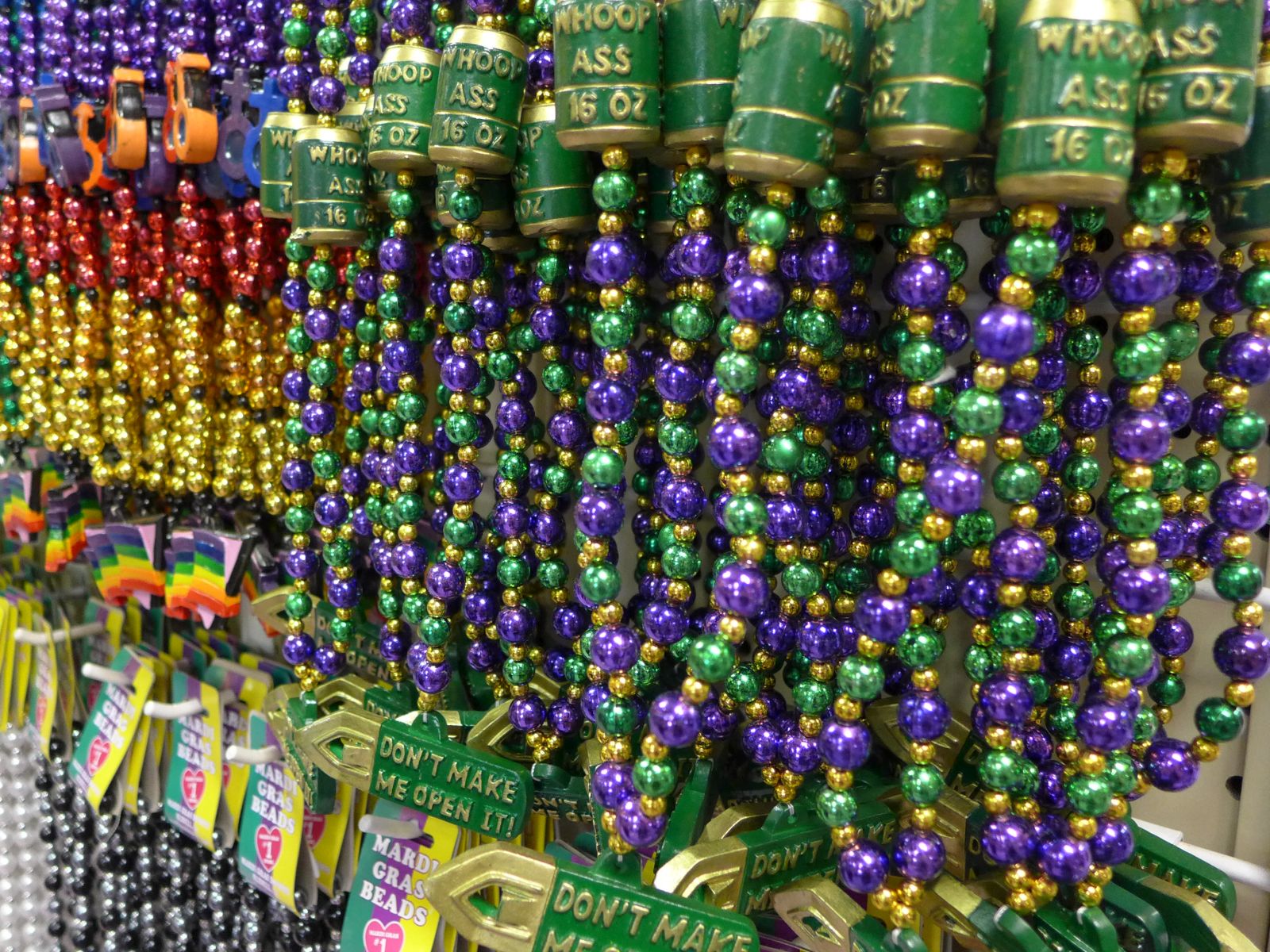
Who should I throw to? Everyone yelled for beads but I wanted to be more discriminate in my throwing so I wouldn’t run out. At first I only threw to children. Their eyes would light up when they caught a toss. One man pointed to his child sitting on his shoulders, so I threw her a string of gold beads. Then she handed the beads to her dad. Obviously parents were pimping out their children to get more for themselves. I stopped throwing to children and started throwing to people who didn’t have many beads. I saw a woman sitting on the ground who seemed to have no beads at all and I threw her a strand of silver globes. She smiled and immediately squirreled them away into the bag of beads at her feet.
Eventually I gave up on a strategy and began throwing to anyone who looked nice, friendly or interesting. Someone I would want to hang out with at home. One woman looked dejected, her friends were having fun than she was. I made eye contact and tossed her a double-twist. Her eyes lit up and she gave me a big smile. An electric instant between two strangers! Like I’d given her the best surprise gift ever.
Fling, fling, fling!
The float turned onto St. Charles Avenue and headed downtown. Purple and gold beads hung in tree branches from previous Mardi Gras parades. We passed grand Garden District balconies filled with bead-adorned revelers holding champagne flutes and screaming, “Throw me some beads!” People knew what they wanted and would ask for it. One reveler locked eyes with me and pointed to the string of rubber duckies he wanted. What could I do but oblige?
We continued moving towards downtown, crossing streets named for the Greek Muses: Terpischore, Thalia, Erato, Clio. The crowds grew bigger after every intersection.
The crowds always wanted more: more doubloons, more double twists. “You got any plungers left?”
When the crowd got too demanding I would sit down, hidden from the crowd by the wall of the float, take a breather and a few gulps wine from my sippy cup.
As we neared downtown I realized I’d been throwing beads too sparingly, I’d been too picky. By Lee Circle, the halfway point, I still had bags and bags of throws left. I began throwing by the fistful.
Fling, fling, fling!
Entering the downtown business district the crowds were thicker and barricades appeared. I could no longer make eye contact; I had lost my human connection, but I had way too many beads left. I threw like my life depended on it, like I was on the sinking Titanic and jettisoning ballast would help me to survive.
We turned onto Canal Street, with its colonnade of Royal Palms. At Chartres Street, the entrance to the French Quarter, the ride was over. I was hot, comfortably drunk and disoriented as I left the float. I still had three large bags of leftover beads.
Not knowing what to do with them I walked down to the sidewalk and set them on the pavement. People would love them, I thought. But nobody noticed. People walked around them. They were just like the other beads, broken from throwing, strewn all over the sidewalk that nobody would pick up. Without the human connection on the other end, without a person spreading joy from the top of the float, they were just beads. Plastic. Joyless. Made in China.

[Mardi Gras 2011 by Brad Coy/Flickr; Mardi Gras by Larry Johnson/Flickr; Mardi Gras Beads by Author]
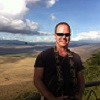 A notebook, a camera, and a penchant for exploration have been in Mark’s knapsack from a young age. A business consultant in Seattle, Mark travels as much as he can get away with and writes about it on his blog, WilderShores.net.
A notebook, a camera, and a penchant for exploration have been in Mark’s knapsack from a young age. A business consultant in Seattle, Mark travels as much as he can get away with and writes about it on his blog, WilderShores.net.
The post Spreading Joy At Mardi Gras appeared first on The Expeditioner Travel Site.
]]>The post Catching My Breath On Mount Si appeared first on The Expeditioner Travel Site.
]]>
I could feel the sweat beading at my temples, threatening to drip into my eye and deliver the dreaded “sunblock burn.” But before I had a chance to wipe the sweat away, it slid down into the groove beneath my jaw line, then traversed my collarbone before disappearing into the depths of my sports bra. My calves were already throbbing after just two miles of continual upward momentum. This is not what I signed up for, I thought. I’d wanted to do an easy hike, I told my best friend, David, as we sipped beer on his porch a few nights before. “Nothing too demanding.”
But two miles into an eight-mile trek in western Washington’s Cascade Range, I realized what I was really in for. Mount Si, they lied about you. But I’m coming up. This is my day.
And it was my day. That cloudy Saturday morning marked my first hike of the season. More importantly, it was my first hike as a free woman after spending the last six years in the U.S. Army.
Needless to say, I didn’t expect this hike to be so grueling, especially since the Mount Si trail is considered a novice-level trail by most. But as I quickly found out, Mount Si’s difficulty doesn’t lie in its length or trail condition, it’s the continual upward push. Four miles of slow, steady climbing to make it to the top of that mountain. And if you’re considering climbing the Haystack, a vertical, ominous rock face that some consider the true summit, you’ll need to add at least another quarter mile of climbing beyond the end of the trail.
Once I reached the top, I didn’t even have the energy to pretend I had any intention to climb the Haystack. No, I was right where I wanted to be: taking in the view from above the cloud line. And I’ll admit, at two, even three miles in, I didn’t recognize the beauty of Mount Si’s challenge.

But when I finally stepped through the thinning treeline at the end of the trail, where boulders littered the mountaintop like giants, it finally hit me: I’d started a brand new chapter of my life, and I did it by completing an incredibly challenging hike.
And better than anything else was the slow realization that no one pushed me onward except myself. It was just little old me, convincing myself to stay on the trail. Recognizing that I had the discipline and endurance to work though so much physical discomfort, that I could convince myself it would be worth it, was extremely rewarding.
I stood at the top of Mount Si for close to an hour, letting my thoughts linger on the personal gratification as I snapped photos, ate lunch and took in the view of the town below. I could even make out Seattle in the distance, teeming with life while I enjoyed the silence and rare sunshine of a Washington summer day.
It was hard to believe that only a few days before I was standing in formation with hundreds of other Soldiers, toiling away in a familiar, if uncomfortable, uniform. I remembered the promise I’d made to myself about a month ago, when I decided to allow myself six months of hiking, traveling and some soul searching after leaving the service; I wanted to take a sort of extended vacation before switching careers and chaining myself down to another job.
And here I was on day one of my vacation, soaked with sweat and so thirsty for water that I didn’t even consider popping open the celebratory beer I’d stuffed in my pack. Perhaps I needed to redefine “vacation” to include more leisurely activities. I put a pin in the thought and decided to revisit it over milk and cheerios some other day because right then, I realized, I was content with my decisions. I was blissfully free.
And as I headed back down the trail later that afternoon, zigzagging along the switchbacks, I thought about all the good omens the hike presented for my upcoming adventures: the spotty but light rain that muffled the sounds of the town below, the surprise difficulty of the hike, my determination to make it to the top and the beauty of fallen, old growth trees covered in bright, velvety moss.
I decided Climbing Mount Si was probably the perfect way to start all over. It was a much needed opportunity for me to “catch my breath” in life while leaning against the trees, even if only for a moment.

/
 Christina Butcher is a professional Linguist by day and a writer and book reviewer under the cover of night. Currently, Christina lives with her husband in Tacoma, Washington, where she hikes and reads in her free time. Christina also volunteers with a local literary organization, Creative Colloquy, where she produces a literary-themed podcast titled “Literally Tacoma.” For more of Christina’s work, visit her blog at Writebrave.org.
Christina Butcher is a professional Linguist by day and a writer and book reviewer under the cover of night. Currently, Christina lives with her husband in Tacoma, Washington, where she hikes and reads in her free time. Christina also volunteers with a local literary organization, Creative Colloquy, where she produces a literary-themed podcast titled “Literally Tacoma.” For more of Christina’s work, visit her blog at Writebrave.org.
The post Catching My Breath On Mount Si appeared first on The Expeditioner Travel Site.
]]>The post Wild Kauai: Surfing With A Hawaiian Legend appeared first on The Expeditioner Travel Site.
]]>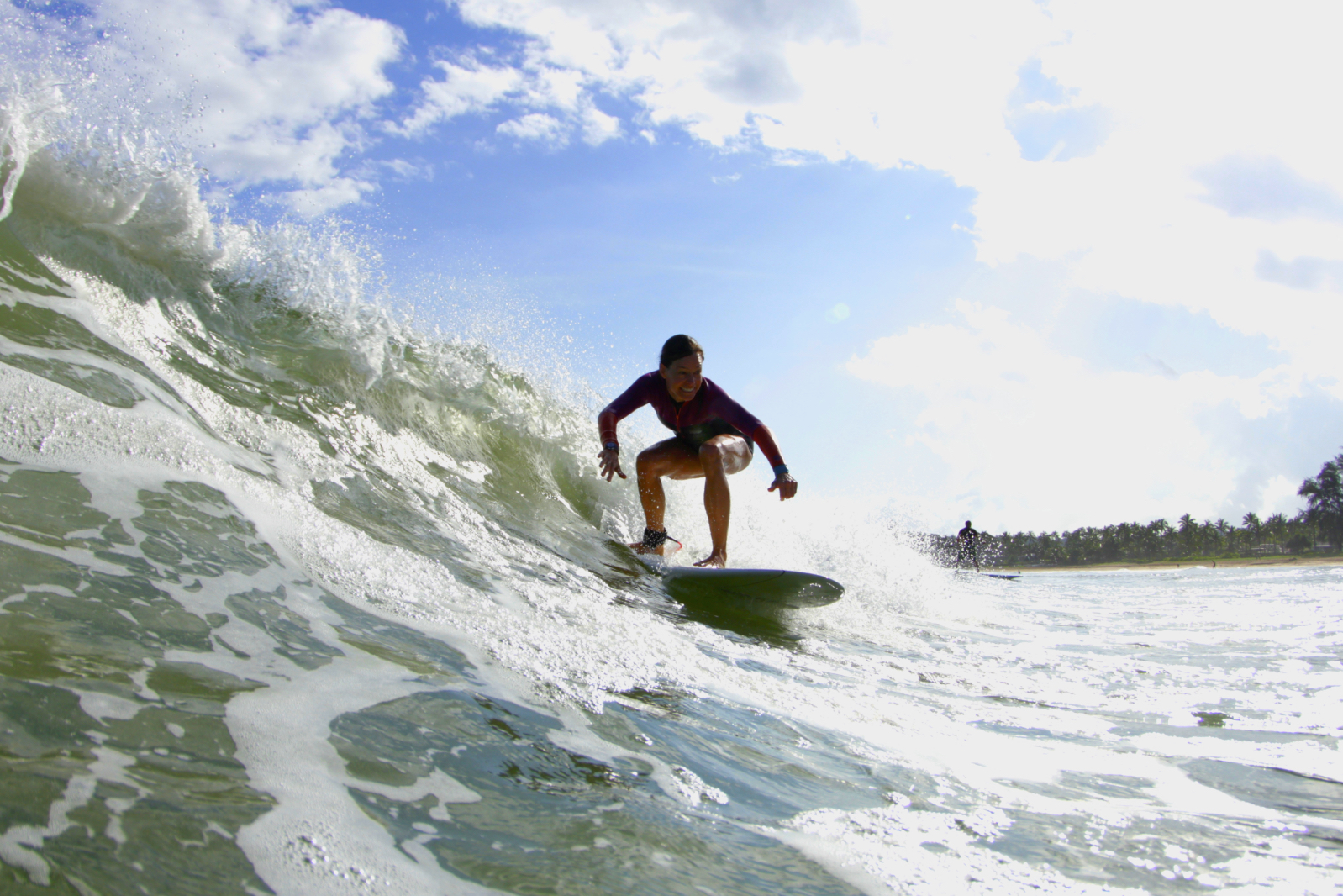
I looked through the sliding glass doors of our beachside rental, past the palm trees and rain-soaked grass, and out to the water. The early light showed Hanalei Bay to be a windswept jumble with not one surfer out on dawn patrol.
At 6:30 a.m. my friend Sarah bounded in. “The guys just texted. Kilauea gas station at 7:15,” she said. I hoped conditions would be better over there.
I was halfway through an eight-day stay in Kauai with three girlfriends, enjoying curling, consistent waves every day. Despite the aching arms typical of other surf trips, that April visit was proving to be more than a wave-catching vacation. I was riding swells with Hawaiians who embodied not just the local surf scene, but the untamed spirit of Kauai itself.
Titus Kinimaka pioneered big wave surfing and has ridden some of the biggest rollers ever seen. With his flowing hair and intense black eyes, Titus looks like the man of the sea that he is, with an instinct for the ocean. Titus always had a plan to find the best waves, and the rest of his crew — Titus’s nephew Kaimi Kaneholani, fellow big wave surfer Clay Wolcott, and Kauai-born photographer Ry Cowan — never questioned it.
Titus commands respect all over the Hawaiian Islands. With Titus in our midst, we were able to surf at Anahola, a surf spot on a long, undeveloped beach accessed through “The Rez,” the homestead set aside for native Hawaiians, where non-locals are unwelcome. Although Titus’s presence meant I could paddle out unperturbed, I still had to cede most waves to the experts there.
While the Anahola day had been sun-drenched and hot, this morning started out gray and wet. I roused my friend Suzie and San Francisco neighbor Caitlin while Sarah started a pot of coffee. We pulled on bikinis and board shorts, gulped down our muddy caffeine and climbed into the dowdy beige minivan I’d rented to hold our many surfboards. I drove us eastward on Highway 56, away from the popular bohemian town of Hanalei on Kauai’s northern coast and to the tiny village of Kilaueu in the northeast.
The drive was just 10 miles, but it was well past 7:30 a.m. when we reached Titus and Kaimi seated in Titus’s weathered white pick-up truck. They looked like they’d been waiting hours. After a lifetime of wave riding, Titus still rises at 4:00 a.m., too excited about getting into the water to sleep any longer. Before daybreak he meditates and completes hundreds of push-ups and sit-ups, staying mentally and physically tough enough to tow into and ride 100-foot waves whenever he can find them.
We followed Titus’s pick-up down a winding, slippery road to a clearing above Rock Quarry Beach where Clay and Ry awaited, sheltered from the wet weather in their own pick-ups. I sensed their exasperated amusement at our lateness. The beach was a deep, wooded cove, protected from the gale that was blowing out the surf elsewhere on the north coast. With the board under my arms, I felt the mud squish between my toes as I picked my way through the needled ironwood pines towards the beach.
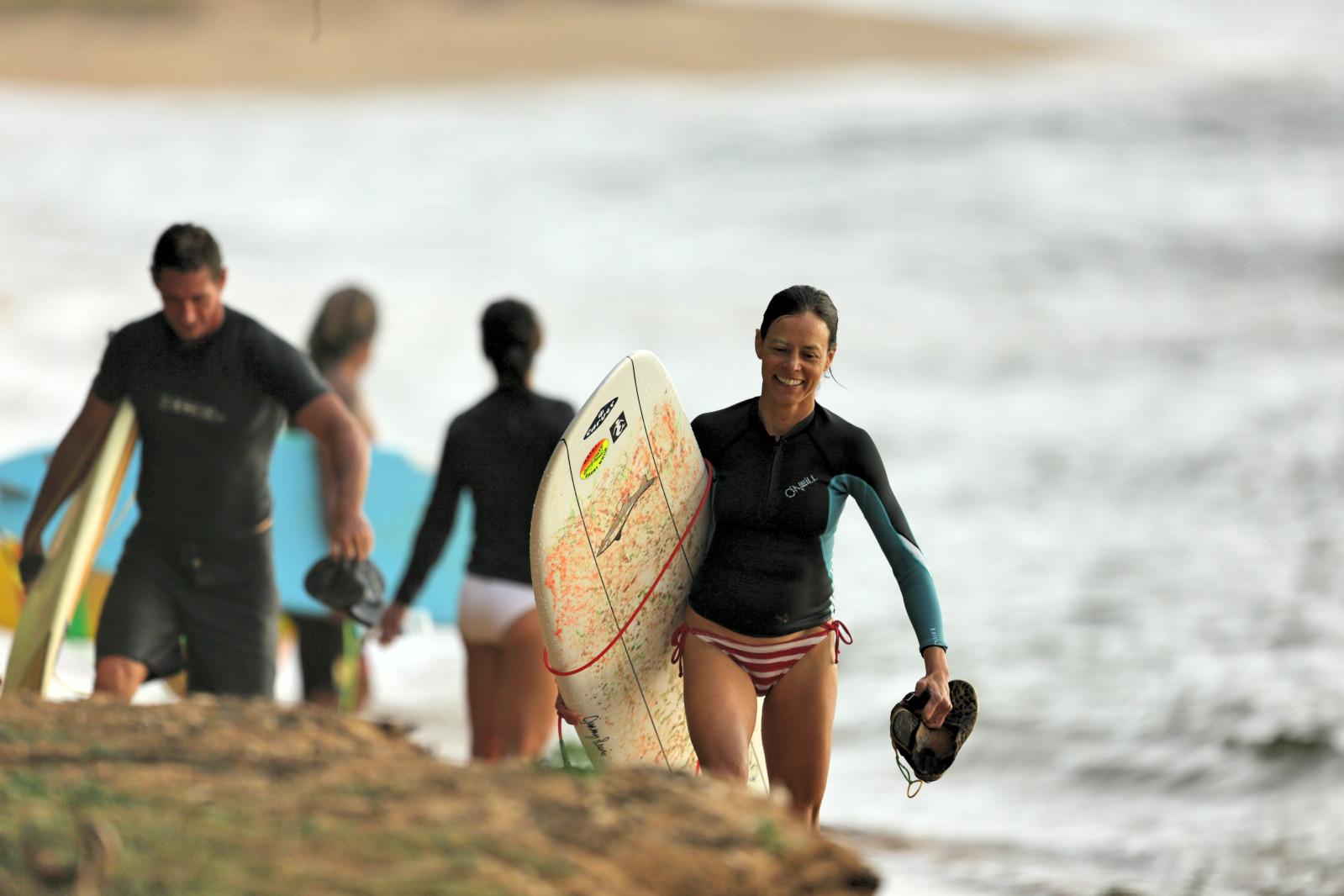
I paddled ahead of everyone out towards a speedy breaker that fell out from under me. As I was trying to master this tricky wave, the drizzle became a downpour, pock-marking the water with increasing ferocity until the water dimples merged into a whole. The ocean became an undulating inky mass that mesmerized me. When at last I looked up, I saw that my friends were back on land, driven shoreward by the grim conditions. We’d missed the early morning window to surf here. Kaimi was on his board nearby; the guys never left us alone in sketchy swells.
Reluctantly, I followed Kaimi back to shore. There, Titus announced we would travel to the west side. From where we’d started that would be over 70 miles, three-quarters of the way around Kauai. If the island were a clock face, it would be like driving from high noon to 9 o’clock. The final quarter of coastline, from 9 to midnight, has no roads at all; it’s dedicated instead to wilderness reserves and the otherworldly Na Pali cliffs that have featured in many films, most recently Jurassic World.
We headed next to Titus’s home in the Anahola homestead to pare down to just one surfboard-laden pick-up truck and the minivan. Painted to match the aquamarine sea, his house had a corrugated metal roof and was raised above the ground. In the enclosed entry porch, trophies smothered a large, wooden table; they were framed by two of Titus’s many coveted “Eddies,” metal and wood surfboards awarded to participants of the exclusive Eddie Aikau Big Wave Invitational. Beyond the porch, the ample, sparely furnished living room held further evidence of Titus’s stature in a wall-sized portrait of him with a tattooed shoulder, burly bicep and menacing gaze.
Suzie, a professional ski guide for high-profile clients, is not one to be intimidated, and she ribbed Titus from our first surf together. She continued at our next stop, Duke’s, a beachside restaurant on Kauai’s sunny south coast named after Duke Kahanamaku, an Olympic champion swimmer who introduced surfing to the world outside Hawaii. We were whisked to a prominent table where Suzie promptly ordered the most awkward drinks on the menu: piña coladas in hollowed out pineapples with extra mini-umbrellas. Her bid to embarrass Titus failed, as he seemed to enjoy tackling his silly fruit cocktail brimming with colored paper parasols.
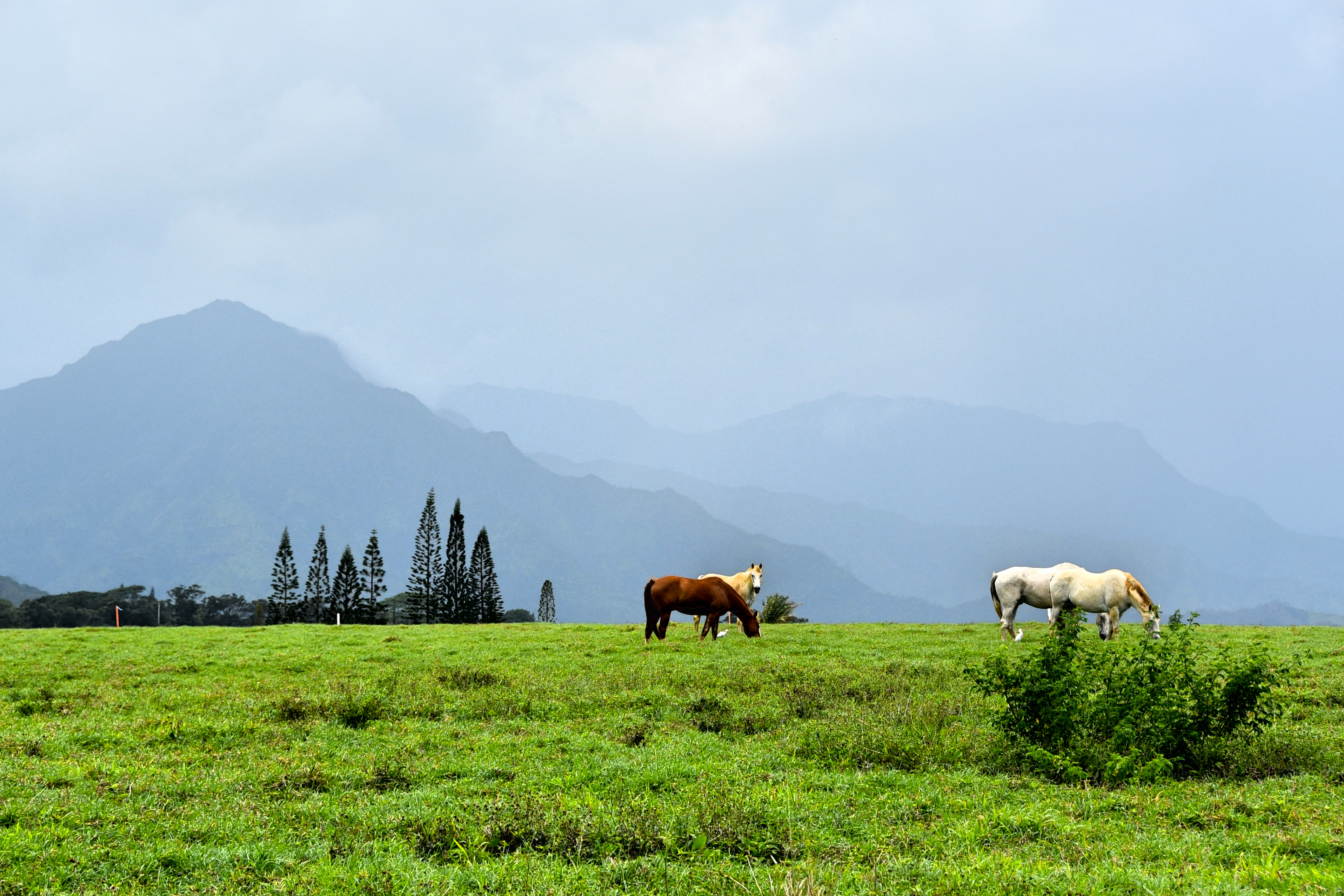
Fortified with a lunch and woozy from a pineapple-full of libation, I passed the wheel to Kaimi who drove us westward before ascending nearly 3,500 feet. With Clay and Ry following in the pick-up, we tumbled out an hour later into the parking lot of the Waimea Canyon Lookout. There, Kaimi walked to the lone concession stand where a salesman stepped out from behind a snack table. The two men approached each other and stopped a few inches apart. They put their foreheads together, noses touching, and inhaled deeply.
The salesman was another of Titus’s many nephews, born from among Titus’s 15 siblings whom I’d met all over the island. Titus greeted this nephew in the same way as had Kaimi: with touching foreheads and closed eyes. They were acknowledging one other in a manner much weightier than our mainland kisses and backslaps.
Throughout the week I’d experienced more than world-class surfing. I’d glimpsed this singular island way of life in the Hawaiian pidgin banter that Kaimi shared with his fellow surfers at Anahola; in the Hawaiian surfer who fetched us fresh coconuts after we surfed his home break or surf spot; in the hours that young Ry and his willowy girlfriend Avery Rowan whiled away sharing beers with us.
Just the previous evening, the guys and their partners had come over for a barbecue with Titus, a soulful singer, strumming a few chords on his guitar. Titus’s wife, Robin, told me then of her eldest daughter, Maluhia, a champion surfer and college freshman, and Maluhia’s efforts to reconcile how her competitive Stanford classmates treat others with the way people interact back home. I was beginning to appreciate Robin’s words. In Kauai’s small, supportive community, relationships aren’t stepping stones to something else.
There’s also danger in Kauai’s wildness, which I admired from the overlook of Waimea Canyon, a ten-mile-long, 3,000-foot-deep red earth gorge cleaved through the emerald plateau. Known as the Garden Isle, Kauai is the least populated of the major Hawaiian isles, with more than half of its 562 square miles covered by forests and nearly all of it green. From the canyon we drove higher to Koke’e State Park to view the Na Pali cliffs. Although the sky above was clear, from our 3,600-foot-high vista point, when I looked down I only saw cottony clouds. The Na Pali bluffs came to life instead in my imagination as Clay shared grizzly tales of hikers dying there.
Throughout the week Clay, a former lifeguard, had recounted his mostly successful rescues of drowning swimmers. Titus, in turn, had described the capture of the shark that bit off famed surfer Bethany Hamilton’s arm, and his own well-documented surf injury. During a big wave competition, a mammoth wave had slammed atop him, shattering his femur. Fellow surfers had risked their own lives to save Titus, holding him for 45 minutes on a swell-battered reef until a helicopter finally arrived.
Clay and Titus still take the ultimate risk every time a jet ski tows them into monster wave. Photographs of them slicing across the watery goliaths unnerved me. Contemplating the dangers lurking in this breathtaking isle, I felt how immediate their reality is. Life for them occurs in the present.
And my own present called for more surfing, even as the sun was dipping lower. We drove back to sea level, stopping at the unassuming Ishihara Market in Waimea town for fresh tuna and salmon poke — Hawaiian ceviche. It was late afternoon when we parked near Pakalas, a murky break by a fish-filled river mouth. Showers trickled through the thicket of trees as we passed curious bulls brought there decades ago to scare away trespassing surfers. I was aware that Pakalas is notorious for shark sightings, but I didn’t mention it to my girlfriends.
Surfing with Titus, Clay and Kaimi, I had an admittedly willful sense of security; they were always watching out for us. Ry was onshore, covering his camera and telephoto lens with an umbrella. No one else was in sight. I paddled out for long minutes to where the endless waves were breaking, cleanly and potently. After a false start, I caught the next wave, popped up and glided leftwards down the line or across the wave face, cutting back to stay near the crest. Under a pewter sky, the whipping rain was obscuring my vision, but I carved the wave up and down, on and on, until there was no wave left to ride.
As I paddled back out towards my fellow surfers, elation gripped me. The darkest and possibly most dangerous day in the ocean was also the most exhilarating. Back at the roadside, after the rain ebbed and dusk arrived, it seemed none of us could let the day end, popping open beers by the minivan. As we tailgated, pick-up drivers heading home shouted greetings at Titus. Eventually we trekked the 70 miles back to our rented cottage where I collapsed into bed and awoke again at dawn the next day.
On the last night in Kauai, we shared small plates and sipped margaritas at Hanalei’s trendy Bar Acuda. Outside after dinner, Suzie asked Titus about the way he’d greeted his nephew at Waimea Canyon. Titus explained that honi is a respectful salutation to exchange one another’s ha, or life energy. Titus and I put our foreheads together, noses touching, then closed our eyes and inhaled at the same time.
But Titus, Kaimi, Clay and Ry had been sharing their energy all week long. They had shown me Kauai’s elusive essence, and I carried it home in my lungs and in my heart.

Titus Kinimaka runs the Hawaiian School of Surfing in Hanalei, Kauai
Photographs by Ry Cowan and Noelle Salmi
*
/
 Noelle Salmi has lived on five continents, and surfed on four of them. She is the author of several Frommer’s guidebooks, and her writing has appeared in the San Francisco Chronicle, Jornal do Brasil, Bay Area Parent, Indagare Magazine, Tablet Magazine, and other online and print publications. For more visit NoelleSalmi.com.
Noelle Salmi has lived on five continents, and surfed on four of them. She is the author of several Frommer’s guidebooks, and her writing has appeared in the San Francisco Chronicle, Jornal do Brasil, Bay Area Parent, Indagare Magazine, Tablet Magazine, and other online and print publications. For more visit NoelleSalmi.com.
The post Wild Kauai: Surfing With A Hawaiian Legend appeared first on The Expeditioner Travel Site.
]]>The post Top 10 Free Things To Do In New York City This Summer appeared first on The Expeditioner Travel Site.
]]>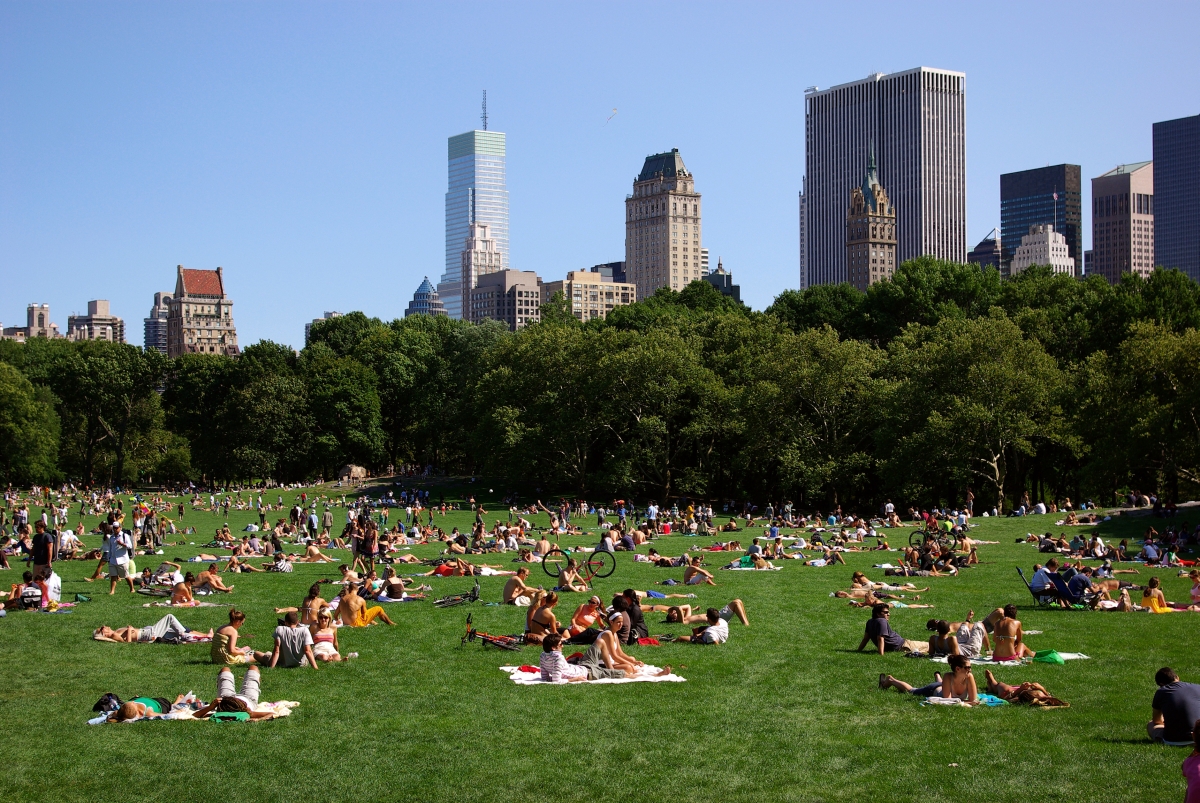
Free things to do in New York City in the summer? I know it sounds like an oxymoron. Let’s face it, the words “free” and “New York City” are rarely used in the same sentence, but visitors to the city are often surprised both at how expensive it can be ($400 for a hotel room?) as well as the number of free things there are to do and see around New York, especially during the summer when the sun comes out and the city’s urban dwellers are itching to escape from their cubicles and cramped apartments and get outside as often possible.
For those looking to save money and experience some of the best of what New York City has to offer, here are 10 free things to do in New York City this summer.
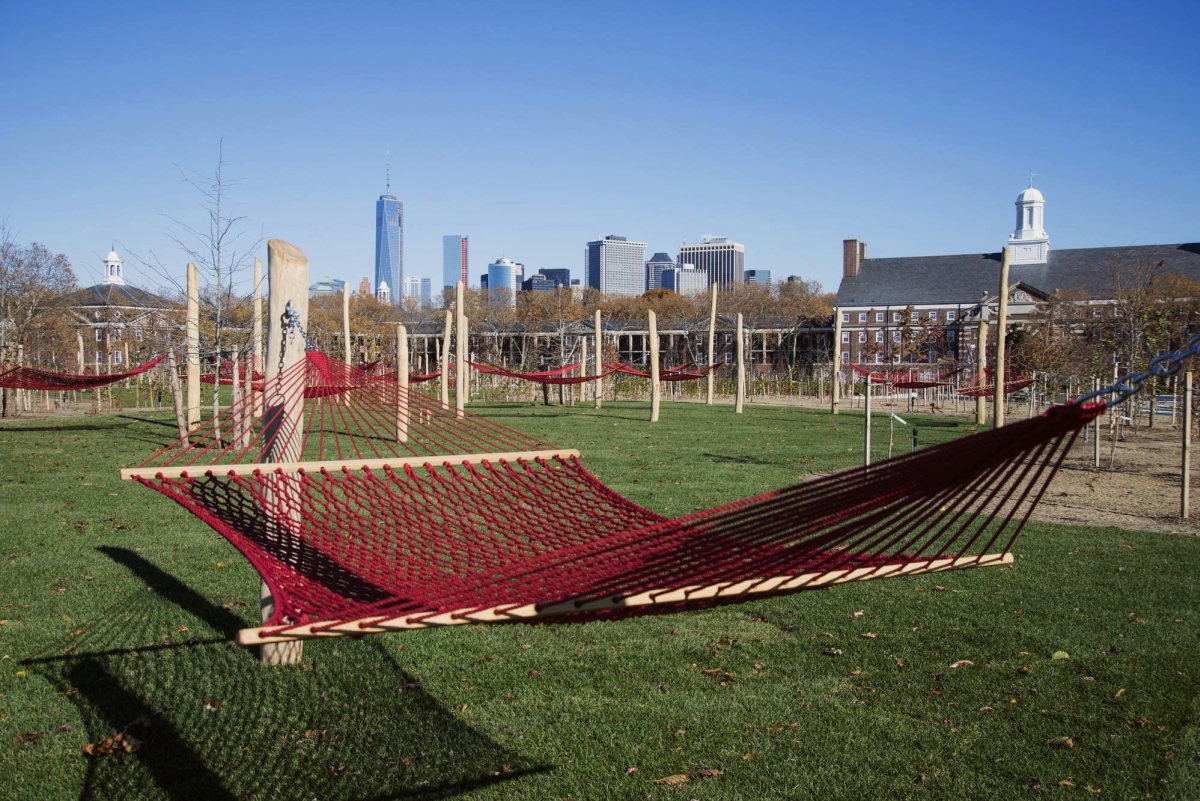
1) Explore Governors Island
Originally developed as a military base, in recent years Governors Island has been an unpopulated 172-acre island sitting enticingly close to the tip of Manhattan (and even closer to Brooklyn). Then, in 2003, the island was sold to New York City from the federal government, and the island was opened up for free to the public for access to its amazing views and open parkland.
The island itself is made up of bike lanes, parks, the remains of the military base and even the homes that the military families lived in, which are all ripe for exploration. You can rent bikes at a kiosk just down the hill from the ferry dock, and the rest of the island is easily accessible by foot. Head to Picnic Point at the far tip of the island for views of the harbor and open space to have lunch or throw a Frisbee around.
Visitor to the island this summer will get to be the first to experience a newly opened 30-acre park that that has been years in the making (New York magazine called it a “jewel”). The new park features a section full of hammocks called Hammock Grove, a new playground featuring a wooden climbing gym, and a green plaza full of food vendors, public art and communal sitting space called Liggett Terrace
Throughout the summer there are numerous free events that take place on the island, including:
• River to River festival featuring numerous free art shows throughout the summer;
• The Fourth Annual New York City Poetry Festival;
• The NYC Volkswagen Traffic Jam, a spectator-judged vintage Volkswagen car show and picnic featuring Volkswagens from the 1950’s – 1970’s;
• The New York City Unicycle Festival.
*
• For a full list of all the activities going on at Governors Island this summer, check out the Governors Island Calendar of Events
• For more information, visit the Governors Island Home Page
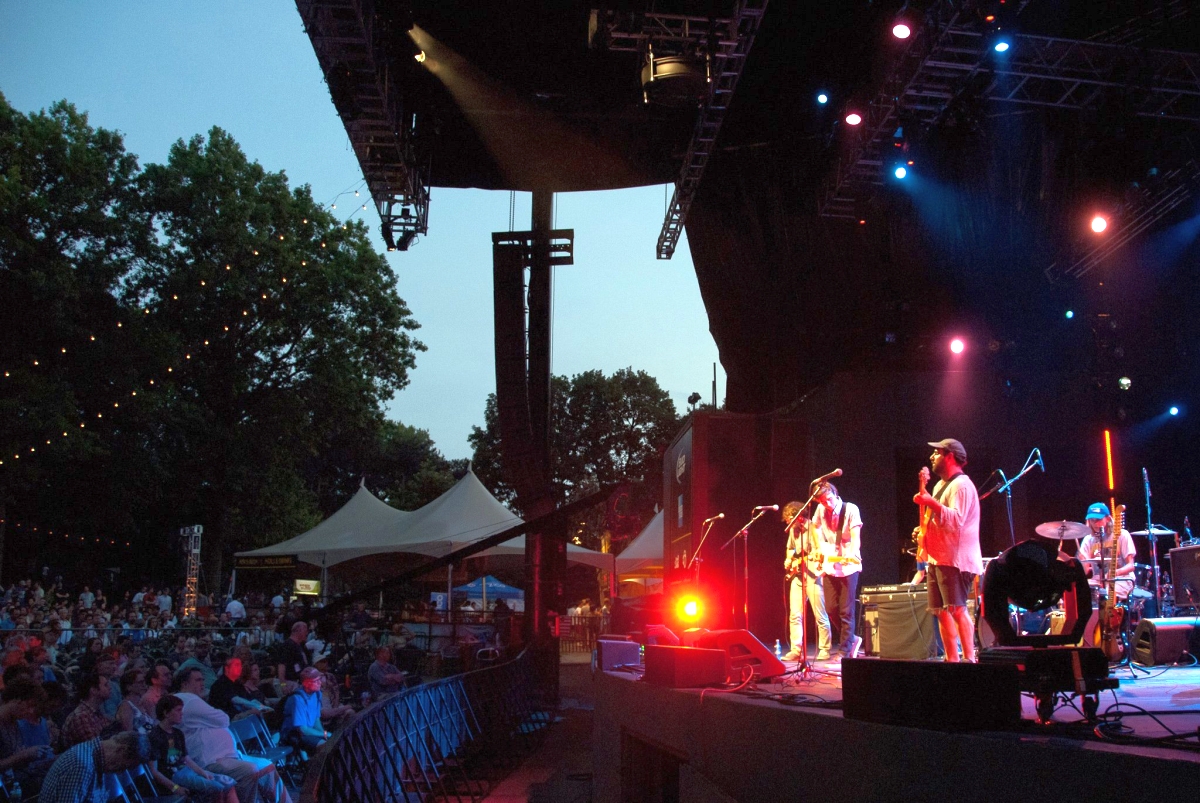
2) See Free Music Outside
Music lovers in New York know that one of the best times in the city to see live music (oftentimes free) is during the summer when the many ongoing music festivals around the city gear up, offering everything from indie rock, classical, jazz and world music on a daily basis. Here are a few of the biggest and best of the lineups.
The 4th Annual Village Voice 4Knots Music Festival
Once again taking place at New York’s legendary South Street Seaport, The Village Voice’s 4Knots Music Festival will be back for its fourth year on July 12, 2014. Continuing the Voice’s 14-year history with live music festivals, 4Knots will be showcasing renowned and emerging artists on today’s breaking music scene. Most exciting of all was the announcement that Dinosaur Jr. will becheadlining this show, along with Mac Demarco, Those Darlings, Speedy Ortiz, Rad Key and many others. And best of all, like every other year, the show is free to all.
• For more information, visit the 4th Annual Village Voice 4Knots Music Festival official site.
Central Park SummerStage
This year’s SuumerStage shows, which takes place at the famed Summer Stage in Central Park, are as eclectic as ever, featuring free performances by everyone from:
• Andrew Bird (July 8);
• Amanda Palmer (July 21);
• Dr. John (August 2); and
• Blood Orange (August 16).
For a full list of all the shows, visit the Central Park Summerstage Full Calendar
Prospect Park Bandshell Celebrate Brooklyn Series
Of course, one of the best music festivals in the city is in Brooklyn — Prospect Park’s Bandshell to be exact. I’ve been going to concerts here every summer since I moved here, and they easily have one of the best lineups in the city, and this year is no exception. This summer you can see the following for free:
• The Dum Dum Girls/Hospitality/Teen (June 21);
• Bebel Gilberto (July 17); and
• St. Vincent (August 9).
For a full list of all the shows, visit the Prospect Park Celebrate Brooklyn Full Calendar
Best of the Rest of the Festival
• Northside Music Festival: (June 12 – 14, Williamsburg, Brooklyn, featuring free shows from CHVRCHES and Thee Oh Sees)
• River Rocks (Pier 84, July 10, 24, and August 7, featuring free shows by Wild Beasts, Teenage Fanclub and Temples)
• Bryant Park After Work (Bryant Park)
• Broadway in Bryant Park (Bryant Park)
• Live on Pier 26 (Pier 26)
• Seaport Music Festival (South Street Seaport)
For a full list of all shows taking place this summer, check out The Village Voice’s The Ultimate List of Free Summer Concerts in NYC, 2014.
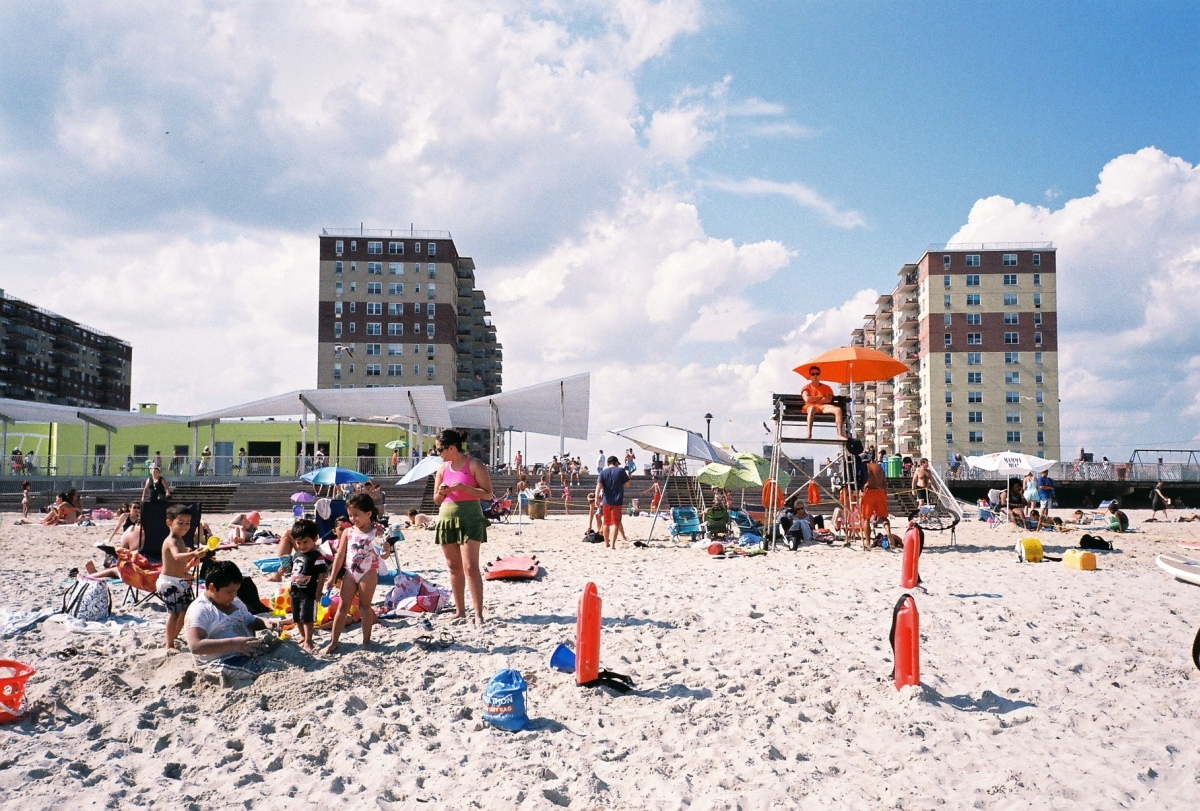
3) Hit the Beach
Rockaway Beach, Fort Tilden and Coney Island
Visitors to New York are often surprised by the fact that New York City actually has beaches that are both clean and fun to visit, all within a close distance. Rockaway Beach, Fort Tilden and Coney Island are all less than an hour away, and are all accessible by subway and bus.
Rockaway Beach has become a favorite getaway in recent years due to the growth of the many restaurants and bars that have opened up nearby recently. However, recent damage by Hurricane Sandy has meant that portions of the boardwalk and beach are not yet ready for visitors, though most of it is accessible and even open for surfing.
Nearby Fort Tilden beach, which has recently come into favor by the local hipster and gay communities due to its slightly more remote location, is back open after being shut down from Sandy.
Finally, Coney Island has been welcoming beachgoers for generations, and this summer the nearby park is welcoming several new attractions, including the refurbished Cyclone and the newly constructed Thunderbolt roller coasters.
• Rockaway Beach Information and Directions
• Coney Island Information and Directions
Long Island
Though a little more difficult to get to, the Long Island Rail Road serves many of the island’s favorite beaches, including Jones Beach, Long Beach, Robert Moses and Fire Island.
Even better, due to increasing demand, the LIRR now offers non-stop service to one of New York City’s favorite Long Island getaways: Montauk (the Cannonball Express). Sitting at the tip of the island, the train will take riders there in a little over three hours via service from Penn Station.
• LIRR Montauk Cannonball Express
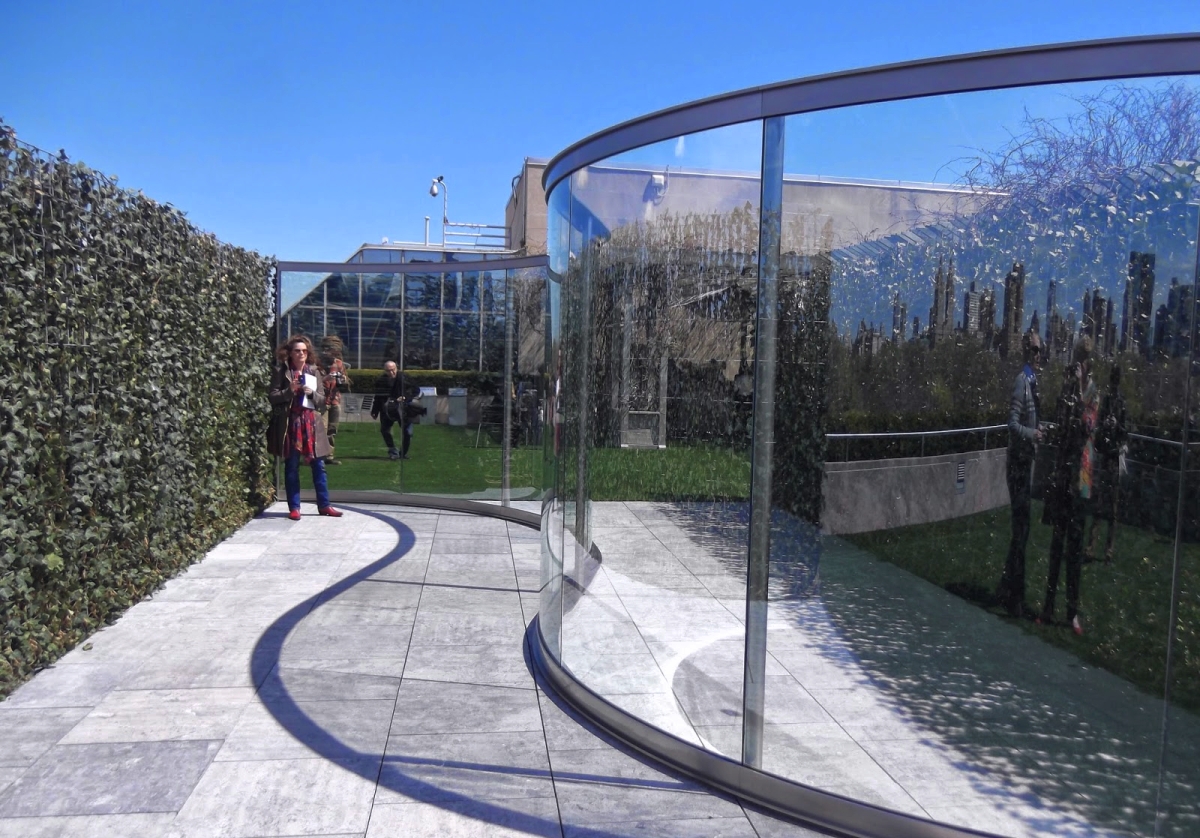
4) Visit the Metropolitan Museum of Art’s Roof Exhibit
Artist Dan Graham created this site-specific commission for the Met’s Roof Garden, which is comprised of curves of steel and two-way mirrored glass set between ivy hedgerows. Though difficult to explain, the exhibit has been described as “part garden maze, part modernist skyscraper facade.”
The exhibit itself is free with admission to the museum, and despite suggested prices, if you’re really in a bind, you can pay whatever you want (including nothing) to enter the museum (though, be prepared for a scowl from the staff if you only pony up spare change from your pocket).
• For more information, visit the Met’s Roof Garden Exhibit site.
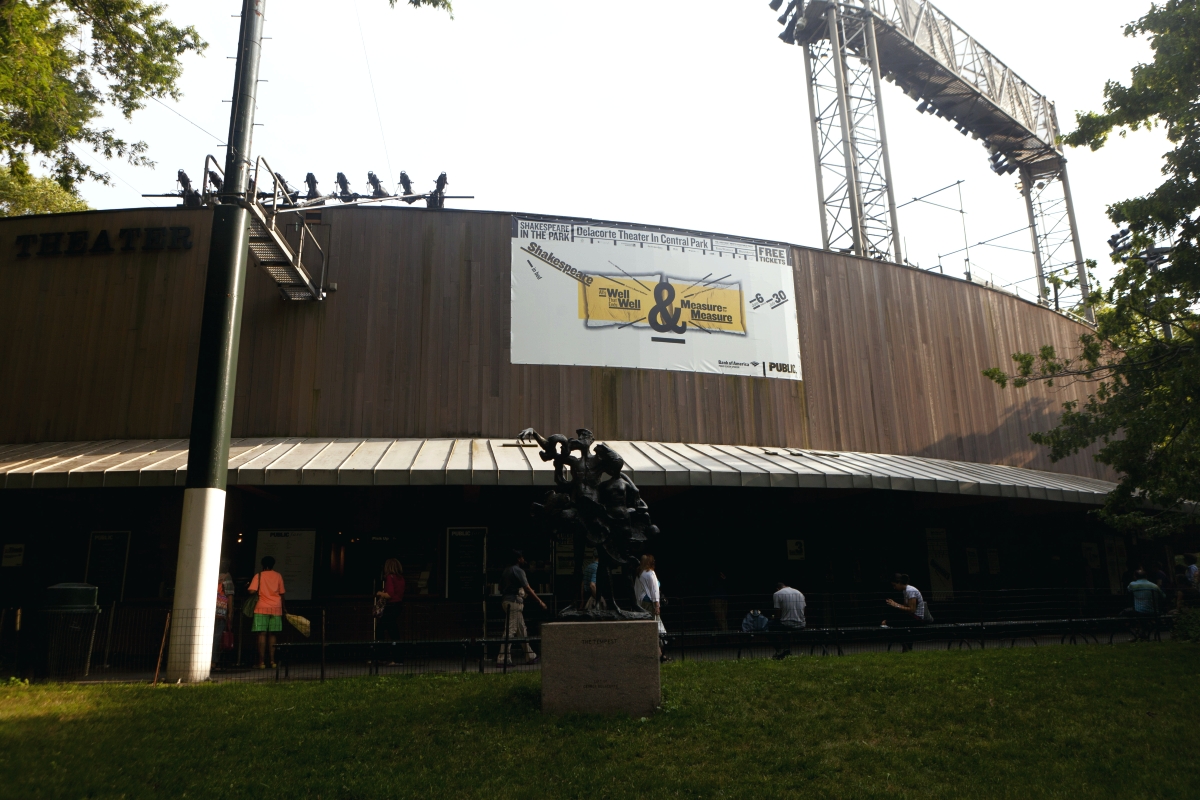
5) Shakespeare In The Park
Okay, this one’s not exactly a revelation. Shakespeare in the Park has been attracting massive crowds for over half a century (5 million people over 50 years to be exact), and a look at the number of people who still line up every day for tickets is proof it’s as popular as ever. This year, the two productions being staged are Much Ado about Nothing (June 3 – July 6) and King Lear starring John Lithgow (July 22 – August 17).
You could line up like everyone else at the theater in the morning in the center of Central Park, hoping to snag a couple of tickets as they’re given away at 12 p.m. But, for those in the know, the days of waiting on line are a distant memory. Now, you can simply get in line virtually by signing up online on the day of the show. If you’re picked, you’ll get an e-mail alerting you about your free pair of tickets. If not picked, just try again the next day.
• Shakespeare in the Park Home Page
• To learn how to sign up for ticket virtually, visit the Shakespeare in the Park Virtual Ticketing
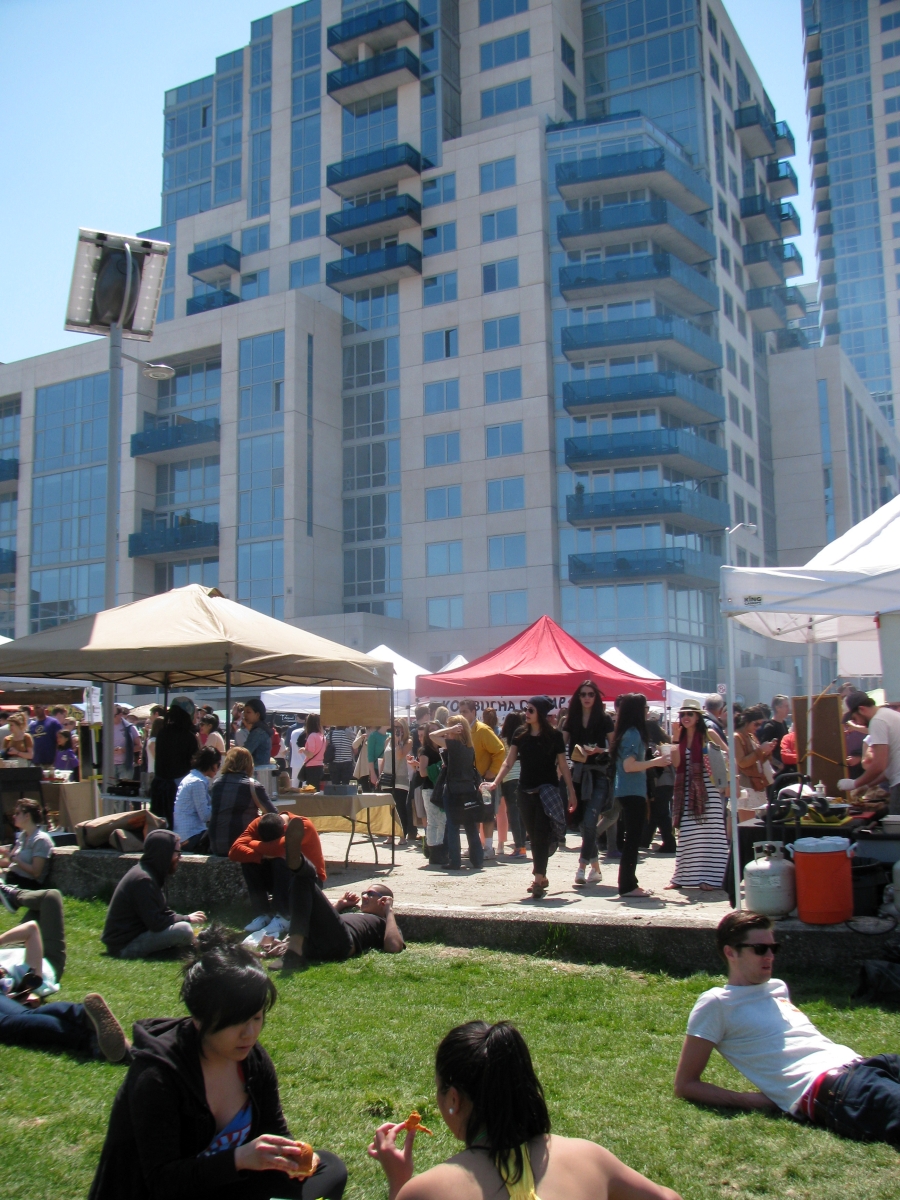
6) Shop and Eat at the Brooklyn Flea and Smorgasburg
Where else are you going to find vintage sweaters, living room furniture made from reclaimed factory walls, and artisanal hot dogs all in one spot? Brooklyn, of course. The Brooklyn Flea, which is the actual flea market, now operates in two different locations, including its original Fort Greene location on Saturdays and Williamsburg on Sundays. Smorgasburg, the food-centric outdoor market, can be found in Williamsburg on Saturdays and Brooklyn Bridge Park on Sundays, and each features 100 local and regional vendors.
• To learn more about the Brooklyn Flea and Smorgasburg, please visit the official Brooklyn Flea site.
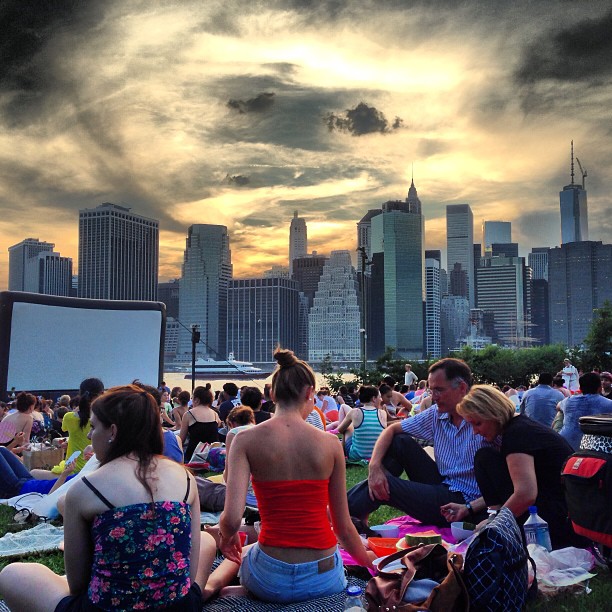
7) Watch Free Movies Outside
Not only is New York home to the locations for many movie and television shoots, but it’s also home to an active outdoor movie-watching culture. Come summer, parks, piers and rooftops set up outdoor projectors and show movies around the city, a nice change from watching Netflix from your 300-square-foot studio apartment.
The most popular of these screenings occurs in Bryant Park, which this year will be showing Saturday Night Fever, Blazing Saddles, National Lampoon’s Vacation and The Karate Kid.
In Williamsburg, you can find plenty of ironic ’80s and ’90s nostalgia with showings of Back to the Future, Heathers (greetings and salutations TheExpeditioner readers) and The Big Lebowski.
Finally, for one of the more scenic views while you watch a movie (see above), head to Brooklyn Bridge Park, where this summer they will be showing Ghostbusters, Groundhog Day and The Wizard of Oz.
• For a complete rundown of every movie playing for free outside this summer, check out this comprehensive list.
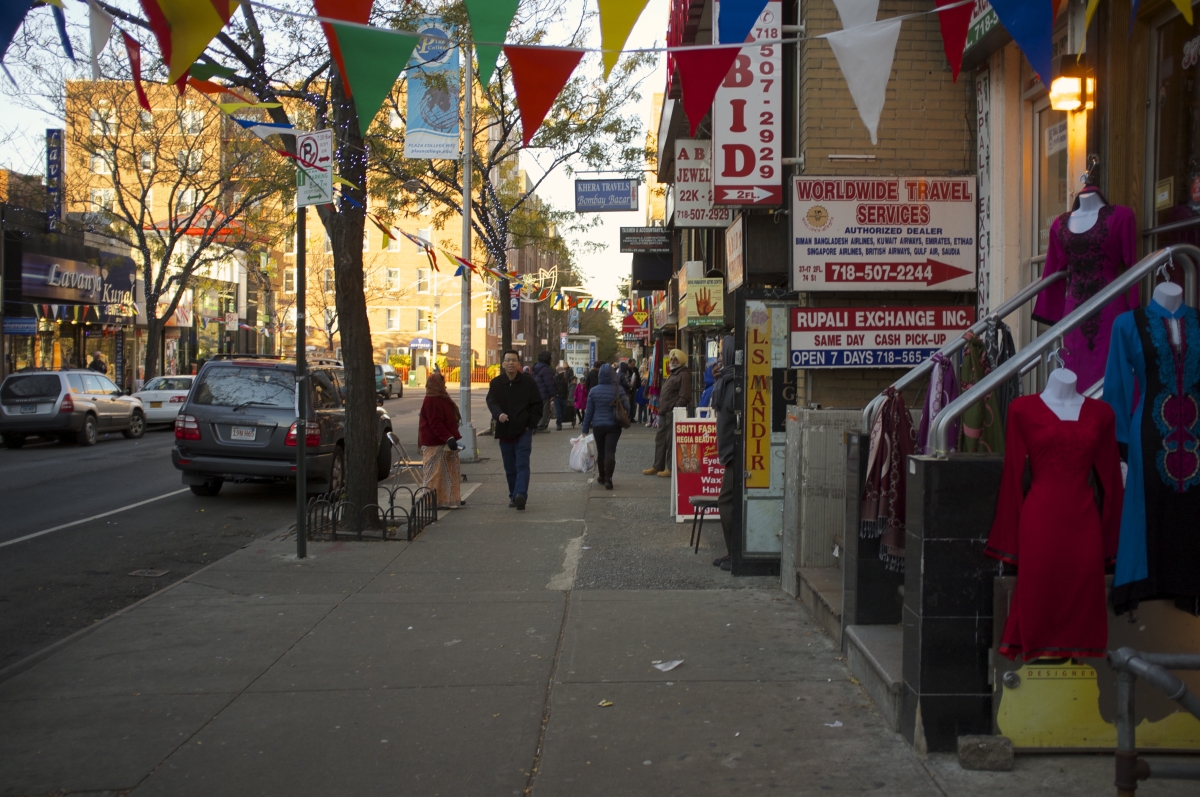
8) See the World in Jackson Heights
Just a short ride on the subway (7 Train) from Manhattan is Jackson Heights, Queens, one of the most diverse neighborhoods in the city (if not the country) with over 65% of the population made up of immigrants, and an estimated 138 languages spoken here. Most notable is Little Colombia and Little India, where immigrants have opened restaurants and bakeries featuring the best of their country’s delicacies. Among other countries (and restaurants) represented here include those from South America, South Asia, and East Asia. In other words: basically everywhere.
To explore, head down the main thoroughfare of 37th Avenue from 72nd Street to Junction Boulevard and find yourself in what seems like another country. And the best part? You’ll have visited a part of New York few other travelers — and even New Yorkers — have ever been. Yes, off-the-beaten-path travel is possible in one of the world’s most heavily visited cities.
Come hungry, and check out some of the best restaurants and bakeries in the neighborhood, such as:
• Phayul (Tibetan food, 37-65 74th Street (37th Road), second floor);
• Pio Pio (Peruvian, 84-02 Northern Blvd., between 84th & 85th streets); and
• Rajbhog Sweets (Indian sweets, 7227 37th Ave, Jackson Heights, NY 11372).
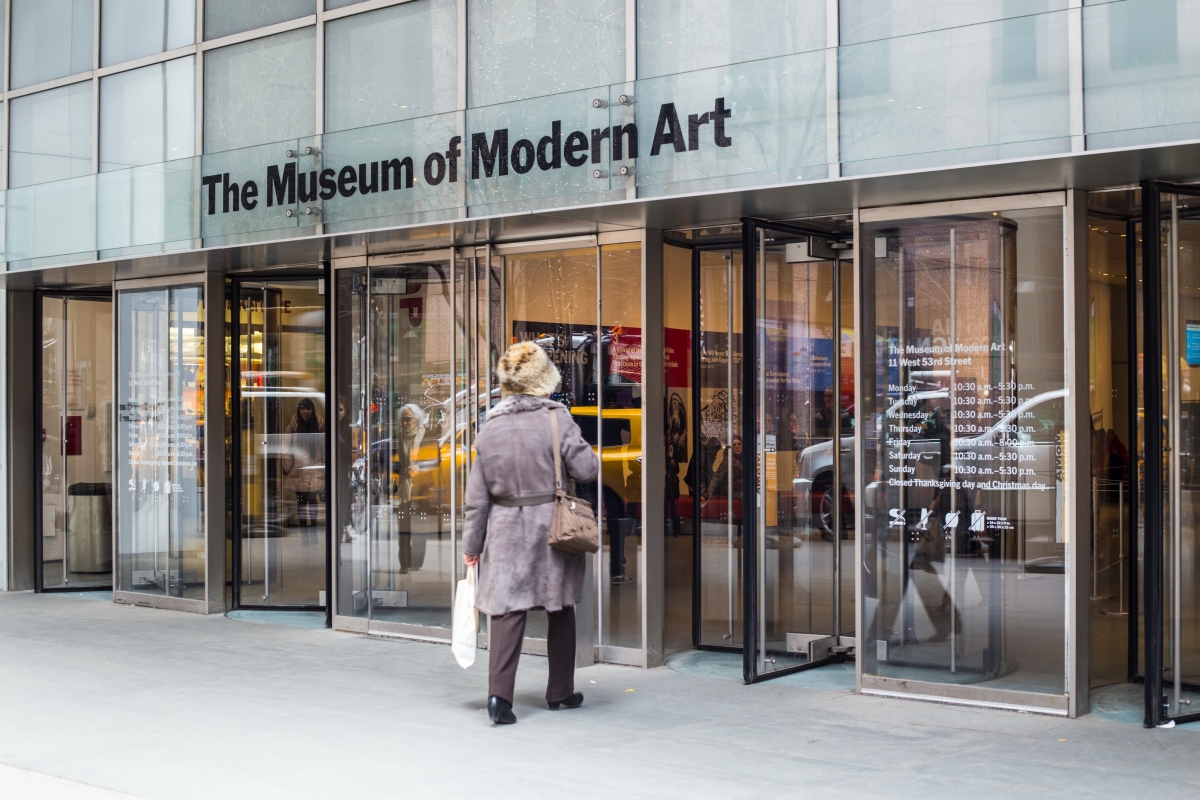
9) Friday Means Free Museums in New York
While Friday afternoons for most New Yorkers means happy hour, it also marks the time when some of city’s biggest and best museums throw open their doors and let visitors in for free, including otherwise pricey museums such as the Museum of Modern Art (normally $25!) and the International Center for Photography (normally $14).
Here’s a full list of museums that offer free admissions on Fridays:
• Museum of Modern Art (4 — 8 p.m.)
• Whitney Museum of American Art (pay what you will, 6 — 9 p.m.)
• Morgan Library and Museum (7 — 9 p.m.)
• The New-York Historical Society (pay what you will, 6 — 8 p.m.)
• New York Aquarium (pay what you will after 3 p.m.)
• International Center of Photography (pay what you will after 5 p.m.)
• Museum of the Moving Image (4 — 8 p.m.)
• Japan Society (6 — 9 p.m.)
• New York Hall of Science (2 — 5 p.m., September through June)
• Rubin Museum of Art (6 — 10 p.m.)
• Asia Society (September through June, 6 — 9 p.m.)
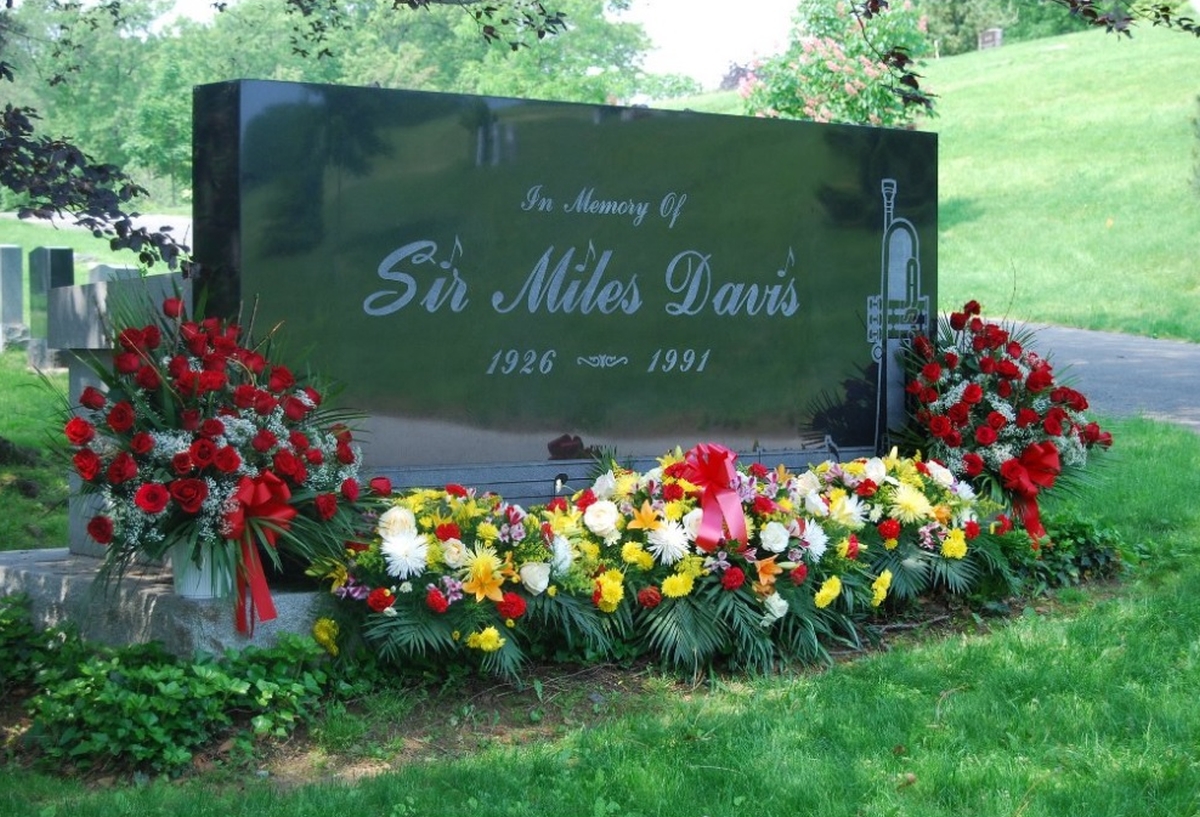
10) Visit Famous Graves
Okay, stay with me here. Where do travelers flock in Paris? Père Lachaise Cemetery to see Jim Morrison’s grave. How about Buenos Aires? Recoleta Cemetery for Eva Peron. Well, New York has its share of famous graves, most of which go unvisited by travelers (even though the price to do so is free).
Woodlawn Cemetery in the Bronx is famous for the great jazz legends buried there. In fact, so many are there, the cemetery has its own “jazz corner,” where such greats such as Coleman Hawkins, Duke Ellington, Lionel Hampton, Miles Davis and Max Roach are found.
Over in Queens is Saint John’s Cemetery, home to the city’s most notorious mafioso, including John Gotti, Lucky Luciano, Joe Colombo, Carlo Gambino and Vito Genovese.
And perhaps most famous, Green-Wood Cemetery in Greenwood Heights, Brooklyn, is the city’s most scenic final resting place. Here you can find the graves of Jean-Michel Basquiat, Henry Ward Beecher, Leonard Bernstein, William “Bill The Butcher” Poole (of Gangs of New York fame), and William Marcy “Boss” Tweed.
• Woodlawn offers guided tours, and directions and information can be found on their site.
• You’re on your own at Saint John’s, but plot locations can be found here.
• The Green-Wood Cemetery site can be found here.
*
Other Helpful Links to Help You Find Free Things to Do In New York City
Time Out New York’s Guide to Free Things To Do
*
[New York City skyline from the Sheep Meadow in Central Park via Shutterstock; Governors Island by Timothy Schenck Photography courtesy of The Trust for Governors Island; Real Estate performs at Prospect Park Bandshell by John Dalton/Flickr; Rockaway Beach by traxus440/Flickr; The Roof Garden Exhibition by Clare Henry; Shakespeare in the Park by Dan Nguyen/Flickr; Brooklyn Flea by Chris Oakley/Flickr; Jackson Heights by Aleksandr Zykov/Flickr; MOMA via/Shutterstock]

/
 Matt Stabile is the founder and Editor-in-Chief of TheExpeditioner.com. You can read his writings, watch his travel videos, purchase the book he co-edited or contact him via email at any time at TheExpeditioner.com.
Matt Stabile is the founder and Editor-in-Chief of TheExpeditioner.com. You can read his writings, watch his travel videos, purchase the book he co-edited or contact him via email at any time at TheExpeditioner.com.
The post Top 10 Free Things To Do In New York City This Summer appeared first on The Expeditioner Travel Site.
]]>The post I Took A Day Trip To Niagara Falls From New York City: This Is What It Was Like appeared first on The Expeditioner Travel Site.
]]>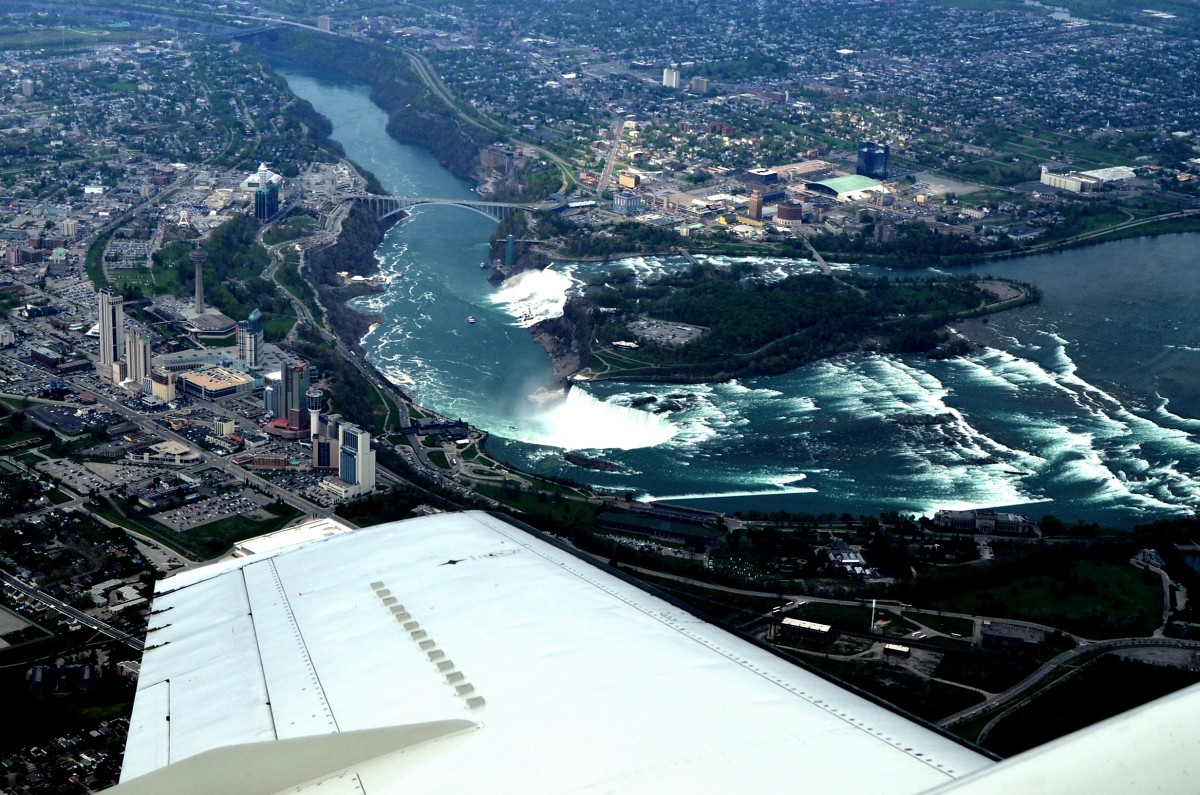
“Hey Matt, any interest in taking a day trip to Niagara Falls on Sunday?”
It was an innocuous enough question to receive by email, especially for someone that runs a travel blog, but I had to wonder: Did the sender realize I lived in New York City which, at last check, was not normally considered a convenient starting point for a day trip to the largest waterfall in North America (Google Maps pegs the drive to Niagara Falls from New York City at 411 miles and nearly 7 hours by car)?
But, alas, this was no usual day trip, this was the inauguration of a new trip organized by Viator, the travel tour and experience booking site called, aptly enough, Niagara Falls Day Trip from New York by Private Plane.
“Sure,” I replied, “What time do we leave?” Very, very early, it turned out.
*
My day began in Brooklyn at 5:45 a.m., a time too often reserved for heading to bed for me, not for waking up. However, on that particular morning, I took a quick shower and hopped in a cab to our meeting point at the Sheraton Tribeca in Lower Manhattan where a chartered bus was scheduled to pick me up at 6:30 a.m.
After buying a much-needed coffee at the deli next door to the hotel, (which, I might add, was miraculously open at that hour; I’m not sure if they were still operational from the night before or were just opening for the day), I hopped in the bus and we drove through the empty Sunday morning streets of Manhattan (if you want to see the “City That Never Sleeps” asleep, take a drive down Canal Street at 6:45 a.m. on a Sunday morning). We then drove an hour west to Republic Airport, the small, regional airport located in East Farmingdale, Long Island.
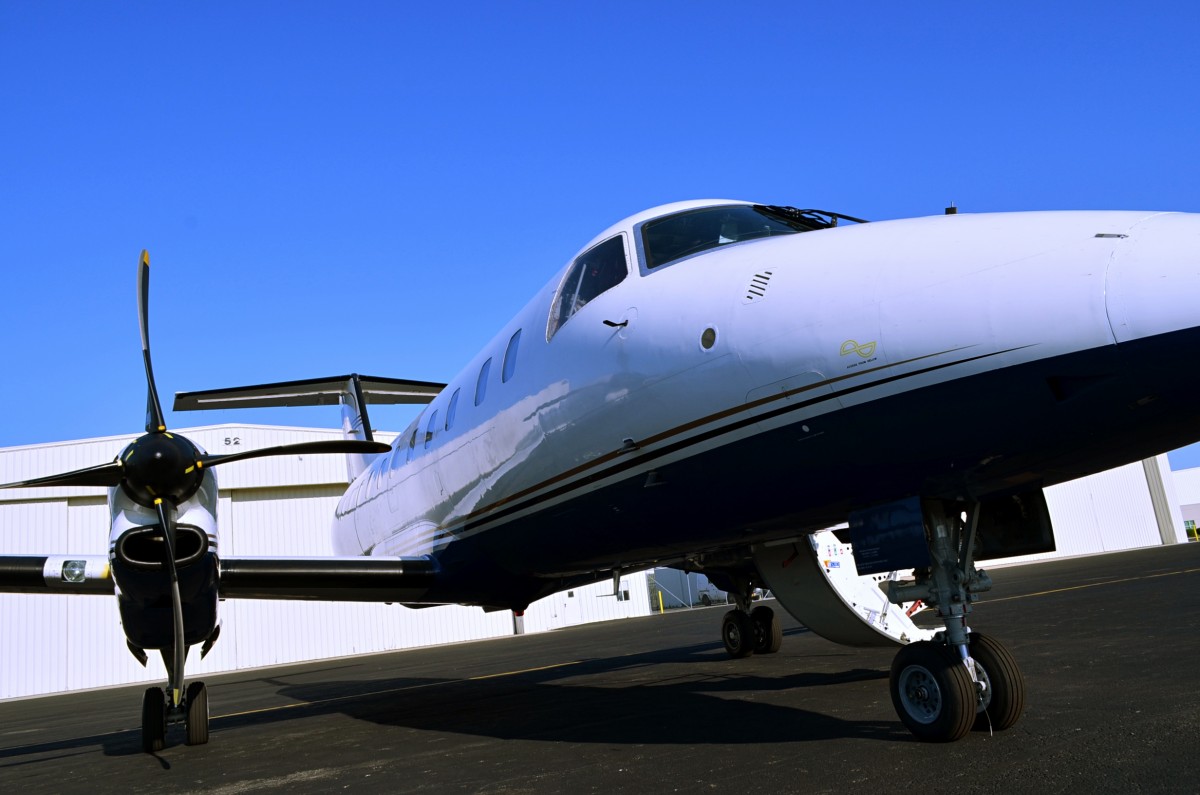
Of course, when traveling in style, i.e, chartered plane, there’s a little timesaver involved called “skipping TSA.” When we arrived, our bus drove through the airport parking lot and straight onto the tarmac, directly next to a waiting plane, an Embraear 120, a Brazilian manufactured, 30-seat twin-turboprop commuter airline whose length measures a manageable 66 feet, and which maxes out at a cruising speed of 378 m.p.h.
Just minutes later we were strapped in and making our way down the runway for takeoff, a surreal experience for anyone used to lining up and waiting on the seemingly always crowded runways at nearby LaGuardia and JFK Airports.
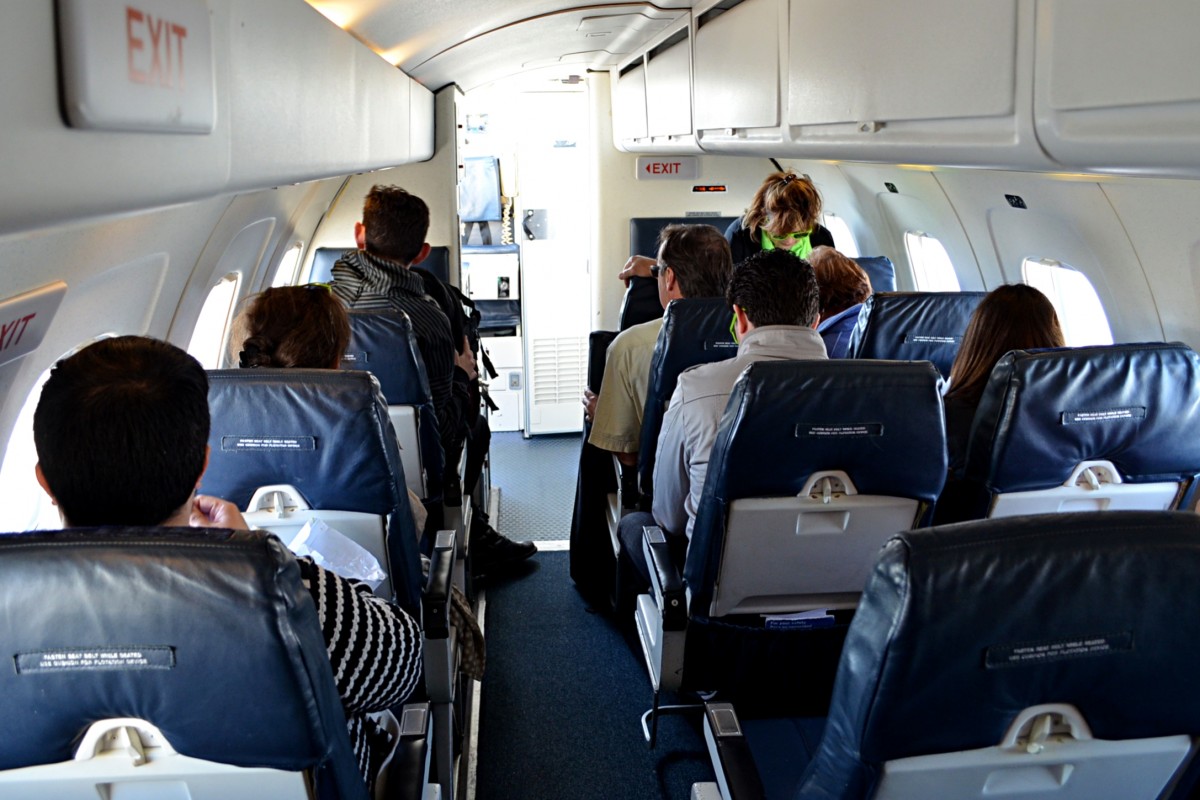
Once airborne, the flight itself was a svelte 1 hour 10 minute-long jaunt northwest over the length of New York. On board was a chipper flight attendant who served us drinks to accompany the bagged breakfasts consisting of a croissant sandwich, fruit cup and yogurt that were waiting for us on our seats.
As everyone around me quickly passed out and napped the entirety of the flight, I worked my way through an issue of Time Out and then only through the introduction to the newest issue of Vanity Fair before the pilot announced that we were beginning our descent, a record accomplishment of futility in reading for any trip — a sure sign of briskness.
While on board, I was informed by Viator they had put this trip together due to growing consumer demand from travelers looking for unique one-of-a-kind day trip experiences from New York. Utilizing private coach buses and local regional airports, the trip focuses on convenience and efficiency to maximize time spent at the falls. It also focuses on people who have lots of cash-money on hand. The trip isn’t cheap — $579 — but isn’t all that expensive given the amount travelers experience for that price.
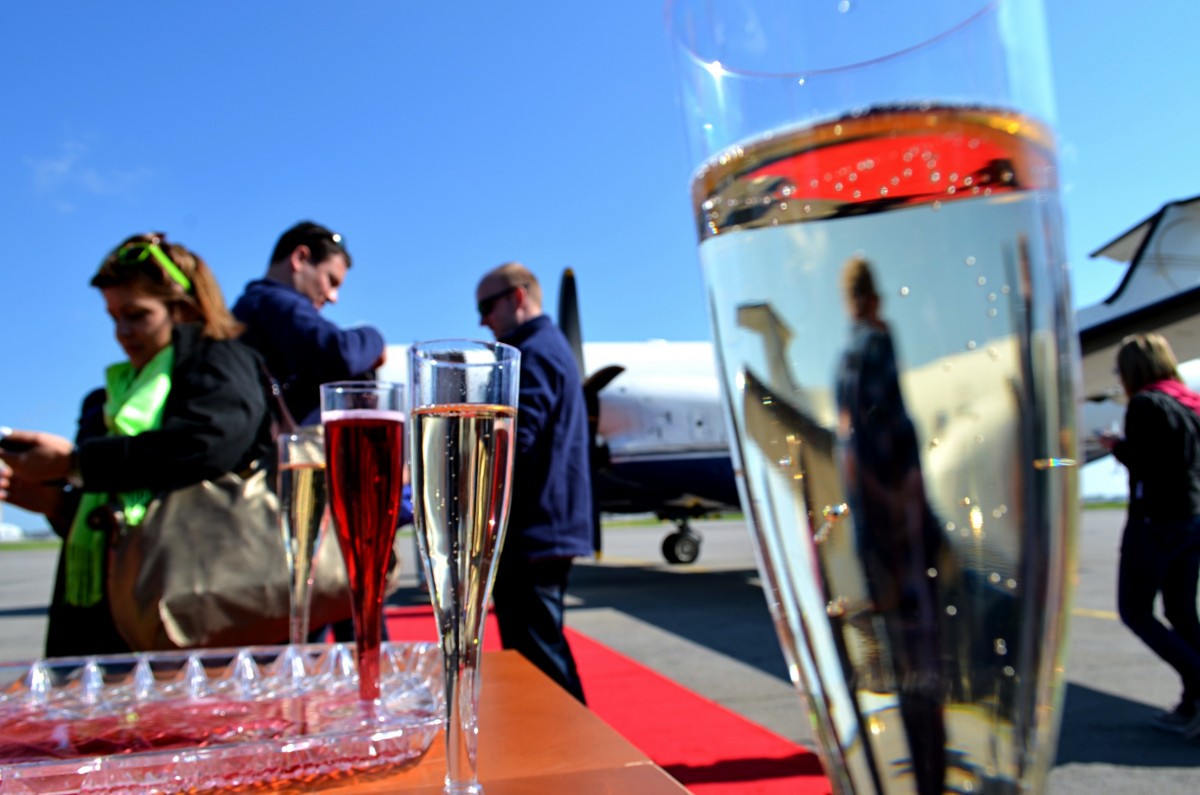
By 9:52 a.m. (according to my Twitter feed), we had landed and made our way down the red carpet that had been laid out for us, leading to a table topped with champagne flutes, always a welcoming sight upon arriving at any airport. I’ve been told the red carpet and booze will not be a normal occurrence for day trippers, but I’m sure arrangements could be made in advance for special occasions or potential visiting dignitaries.
Of course, FAA regulations would likely bar such activities at Buffalo Niagara International Airport, which was located 18 miles to the southwest from where we had landed. But, lucky for us, we had landed at Niagara Falls International Airport, located 18 miles closer to the falls, and more importantly, on the opposite side of Buffalo, meaning we were just a short 12-minute ride to our destination. Yes, it doesn’t get much easier than that.
For the same price, travelers can choose to visit either the American or Canadian side of the falls. For those unaware of the layout of the area, Niagara Falls themselves are actually a series of three waterfalls — Horseshoe Falls, the American Falls and the Bridal Veil Falls — which are collectively located about halfway up the isthmus where the Niagara River flows northward, connecting Lake Erie in the south to Lake Ontario in the north.
Where the falls are located, the river has abruptly turned north after having made an abrupt right angle turn to the west. The larger falls closer to Canada that create the “elbow” in this turn is Horseshoe Falls and is in Canada — the American Falls and Bridal Veil Falls are just to the north straddling the American side of the river, and are thus considered U.S. territory.
What this means for visitors is that if you want see the falls from the Canadian side, bring your passport: the bus drops off those who want to stay in America at the entranceway to Niagara Falls State Park (American’s oldest state park in fact), and those that want to make their way to the more built-up, casino-and-high-rise-hotel-laden side of the attraction, can stay on the bus and make their way over Rainbow Bridge (so named for the nearby rainbows that are prone to crop up due the mist kicked up by the falls) to Canada.
After a quick stop-off at customs on the Canadian side, we were dropped off at Table Rock Welcome Center, located at the edge of Horseshoe Falls. We were then led into the welcome center where we were handed lanyards with “Adventure Passes” attached (they sell for $50), which allow you entrance to, most importantly, the river cruise run by Hornblower Niagara Cruises, the behind-the-falls hike known as Journey Behind the Falls, and White Water Walk, a boardwalk that runs along the base of the falls.
By this point it was 11:00 a.m., and our group was told that our bus was scheduled to head back at 2 p.m., leaving us a few hours to explore. With waterproof GoPro, DSLR and videographer in tow (you know, normal travel entourage), our group of three travel bloggers headed straight to the river cruise, located 10 minutes away down a scenic path that overlooks the falls and the river they feed hundreds of feet below.
As my article researcher (otherwise referred to as “Mother”) later informed me, 2014 is the first year there are two difference companies offering river cruises at the falls. Since the mid-1800’s, the famed Maid of the Mist tour boats have led poncho-clad visitors from both the American and Canadian side of the falls to the falls. After losing their contract in 2013, Hornblower Niagara Cruises now has exclusive rights to launch their two 700-person catamarans from the Canadian side.
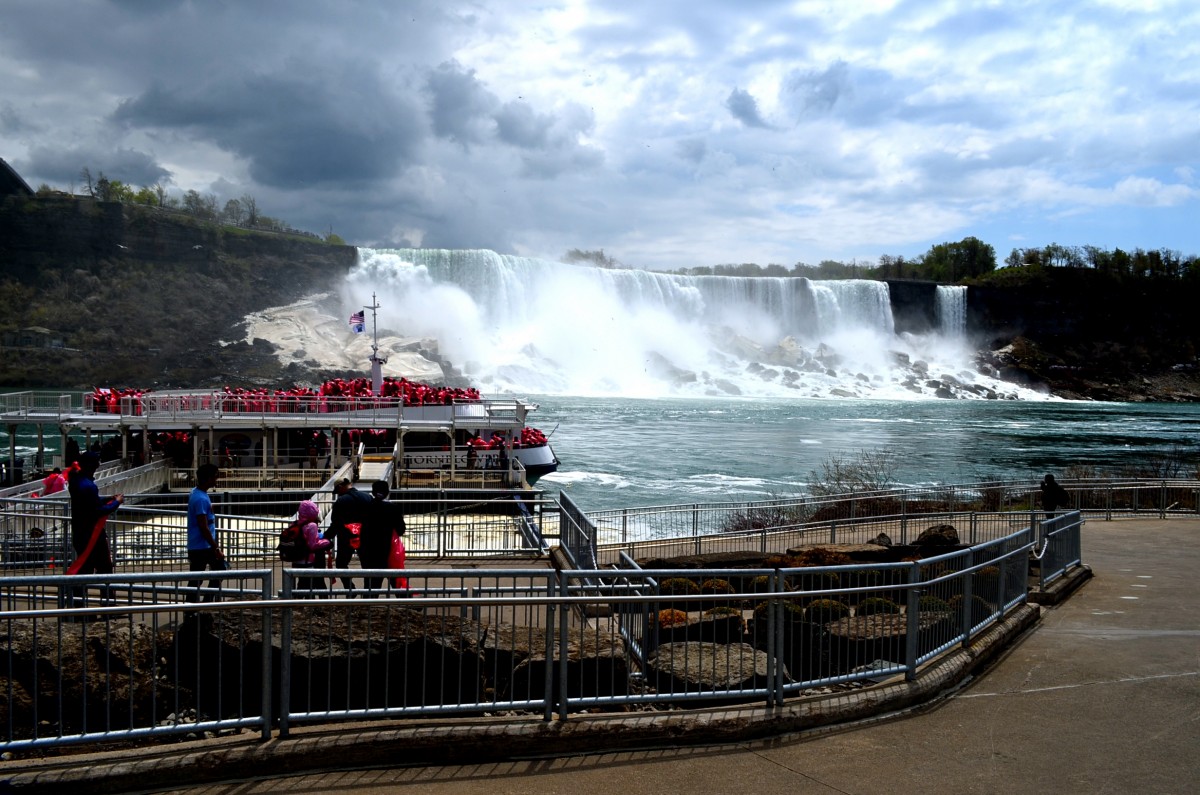
After making our way down a long walkway to the boats, we were handed red ponchos (Maid of the Mist uses blue ponchos, and I’m sure the two dueling colors are some sort of Star Wars reference), and joined a couple hundred visitors on the boat, most of whom had rushed to the upper deck of the boat. After kicking off from the shore, the boat quickly made its way past the two falls on the American side, then charged headfirst toward the center of the Horseshoe Falls, which then caused a flurry of extremely wet and harried people to rethink their vantage point and quickly make their way back to the deck below.
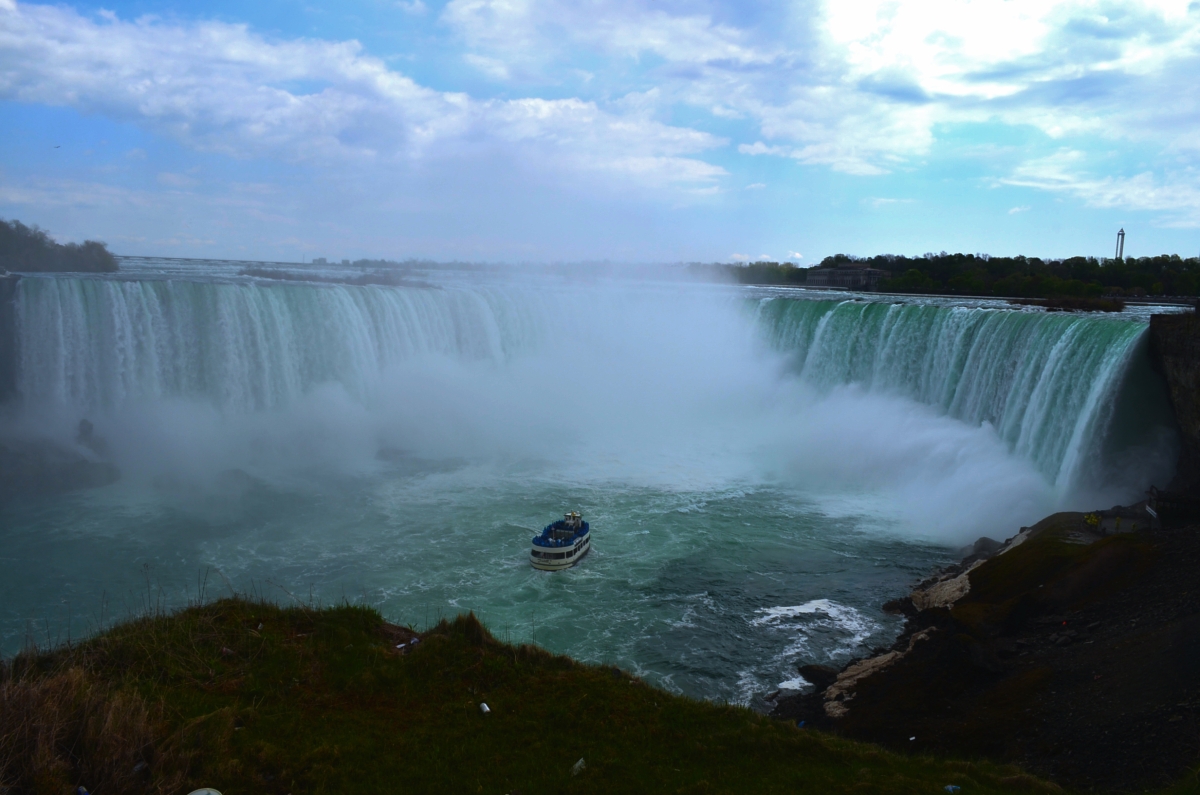
The fact is, Horseshoe Falls, measuring 188 feet high and appropriately shaped like a horseshoe, expels a lot of water. Actually, Horseshoe Falls account for 90% of all the water that flows over the falls from the the Niagara River — an estimated 6 million cubic feet of water per minute — so that produces mist. Actually, that creates a lot of mist, hence the extremely wet humans rushing to make their way to dryer conditions after what seemed like a large portion of that 6 million cubic feet of water in mist form had been directed at our boat from a gust of wind.
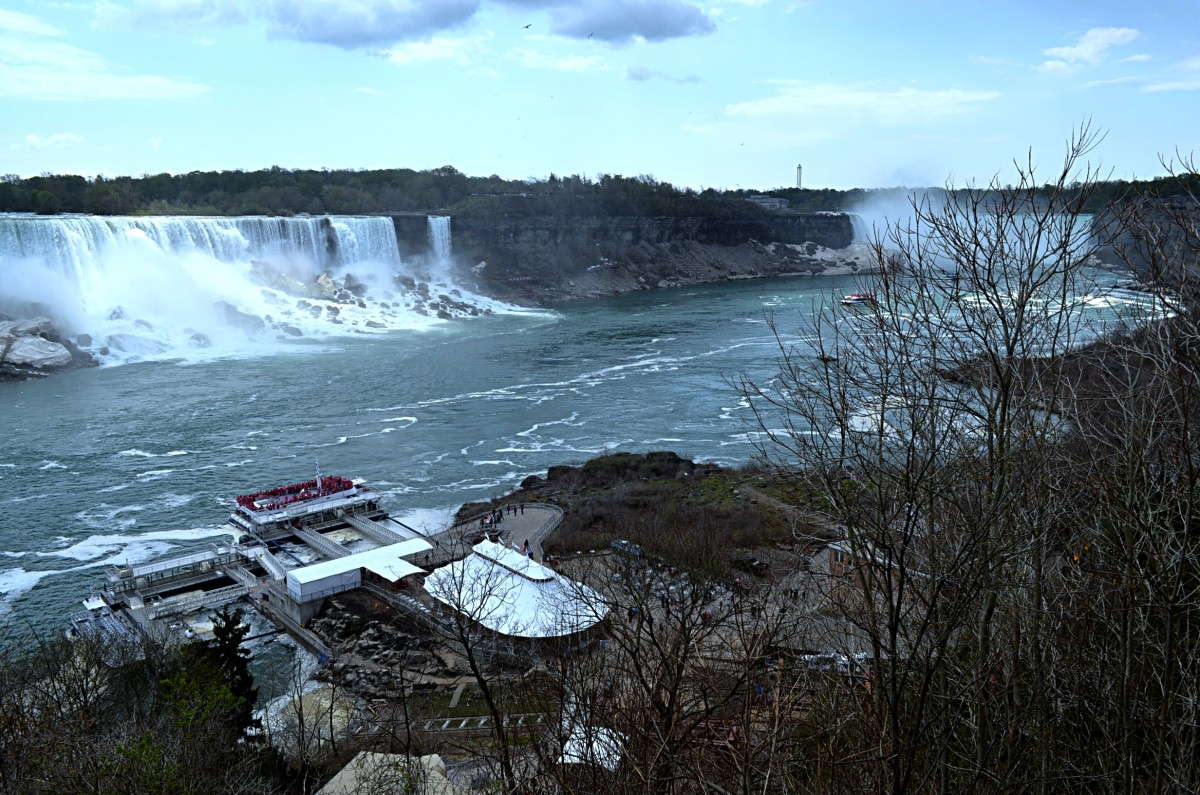
The cruise itself was short, about 20 minutes, and before long we were docking back on the mainland and drying out our jackets on the benches along the riverside. After checking to make sure my various electronic devices were still working (miraculously, and with help of the ponchos and a messenger bag, they were), we headed up the walkway and back toward the welcome center.
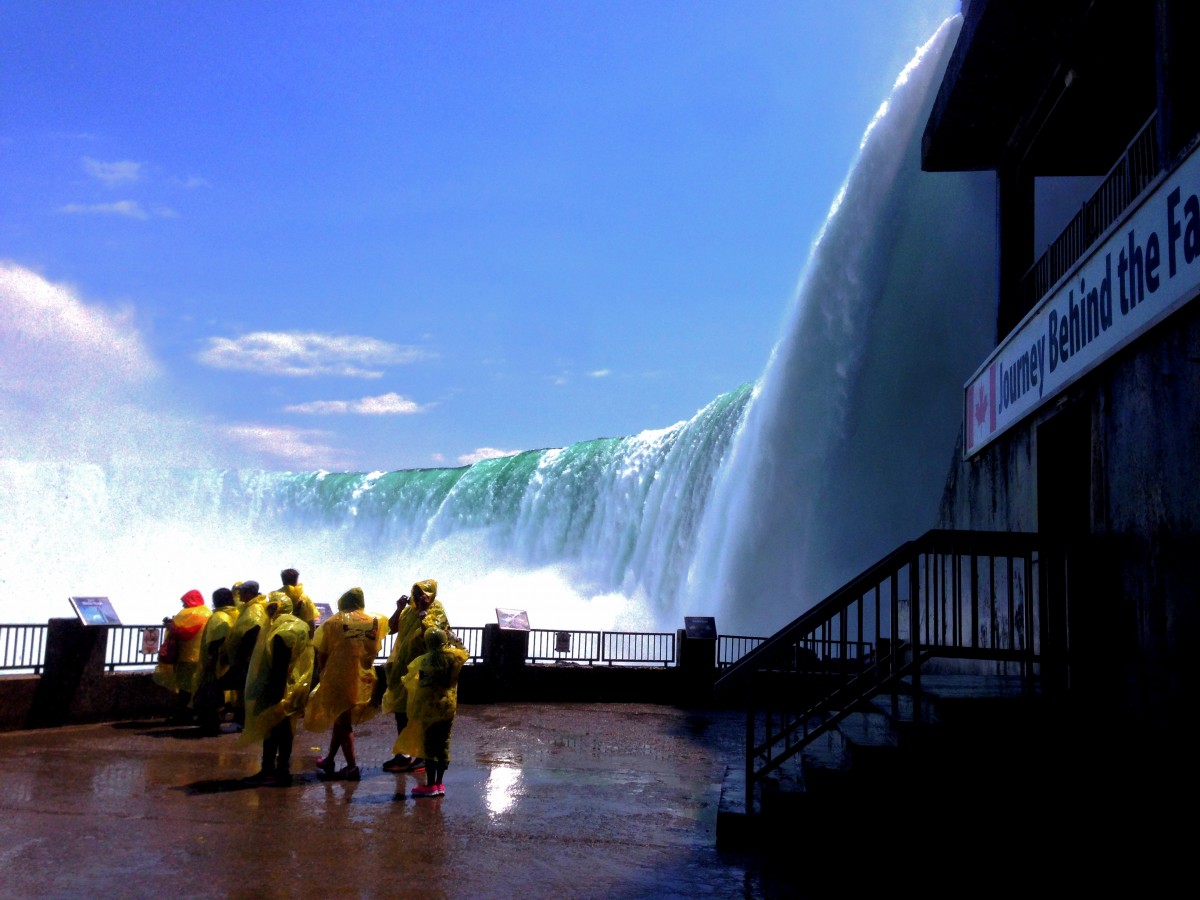
Given our delays taking pictures, Instagramming, sending out tweets, taking video and posting our pictures to Facebook (this is what happens when you travel with bloggers), our time was already running short.
With about an hour left, I ditched my dawdling companions and took an elevator 150 feet down from the welcome center to the Journey Behind the Falls, the tunnel complex located about as close to the base of the falls as you’d want to get, which allows you access to an outside promenade at the base of the falls, as well as to a tunnel with two offshoots that allow you to walk up to a vantage point located just behind the actual falls. If you’ve ever wondered what 739,700 gallons of water falling at nearly 20 m.p.h. looks and sounds like close up, the answer is that it’s both awe-inspiring and somewhat frightening.
With time running out, I met the rest of the group at the waiting bus and got going back to our return flight home. Our delay at the border getting back to the U.S. was considerably longer that heading into Canada, but anyone who’s traveled internationally would not be surprised by this in the least (you’re also at the whim of how many, and where the people are from, in the buses that happen to be in front of you in line).
Once back on U.S. soil, we picked up the rest of the group at the park entrance, snaked our way past an inordinate number of Indian restaurants in town, and were back aboard our plane on the tarmac minutes later, ready to whisk us back to the city.
By 7 p.m. I was at home uploading pictures to Facebook and fielding questions from friends about when I had traveled to Canada. This morning, I replied, just a quick day trip out of the city.

/
 Matt Stabile is the founder and Editor-in-Chief of TheExpeditioner.com. You can read his writings, watch his travel videos, purchase the book he co-edited or contact him via email at any time at TheExpeditioner.com.
Matt Stabile is the founder and Editor-in-Chief of TheExpeditioner.com. You can read his writings, watch his travel videos, purchase the book he co-edited or contact him via email at any time at TheExpeditioner.com.
The post I Took A Day Trip To Niagara Falls From New York City: This Is What It Was Like appeared first on The Expeditioner Travel Site.
]]>The post You’ll Never Look At San Francisco The Same After Watching This appeared first on The Expeditioner Travel Site.
]]>Having recently returned home from San Francisco, a city I hadn’t seen in about 10 years, I’m still trying to get over just how damn scenic that city is. It’s hard to compare any major city in the world in terms of pure spectacle one sees in almost every direction they look there (such as looking toward the Golden Gate Bridge during sunset, the Golden Gate Bridge as you pass under it by boat or the famed “Painted Ladies” with downtown in the background).
The above video was recently forwarded to me from someone who knew I was heading to the city soon. Shot by photographer Simon Christen, this time-lapse video focuses on the famous fog that rolls in from the Pacific Ocean and over and through the bay due to various unique meteorological conditions present in and around the city far too complicated far me to explain here.
Though hard to understand, try to be content with simply watching the amazing show Mother Nature puts on for San Franciscans all year long.
[Adrift by Simon Christen via/Vimeo; News tip by my mother]
By Matt Stabile

ABOUT THE AUTHOR
 Matt Stabile is the founder and Editor-in-Chief of TheExpeditioner.com. You can read his writings, watch his travel videos, purchase the book he co-edited or contact him via email at any time at TheExpeditioner.com. (@TheExpeditioner)
Matt Stabile is the founder and Editor-in-Chief of TheExpeditioner.com. You can read his writings, watch his travel videos, purchase the book he co-edited or contact him via email at any time at TheExpeditioner.com. (@TheExpeditioner)
The post You’ll Never Look At San Francisco The Same After Watching This appeared first on The Expeditioner Travel Site.
]]>The post Niagara Falls Began To Freeze This Week, And This Is What It Looked Like appeared first on The Expeditioner Travel Site.
]]>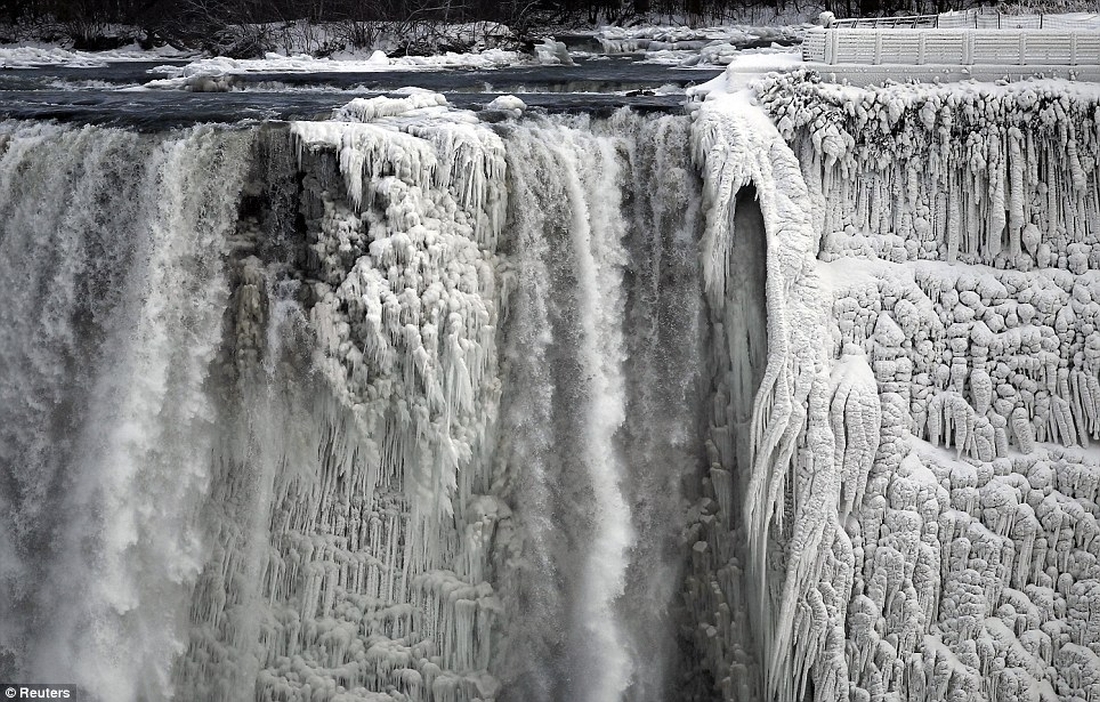
Count one more victim of the cold brought by the recent polar vortex in North America. As temperatures dipped down to -20 Fahrenheit, the water around Niagara Falls begin to freeze, creating some spectacular images for those brave enough to head outside in the cold to witness the event (such as the one above).
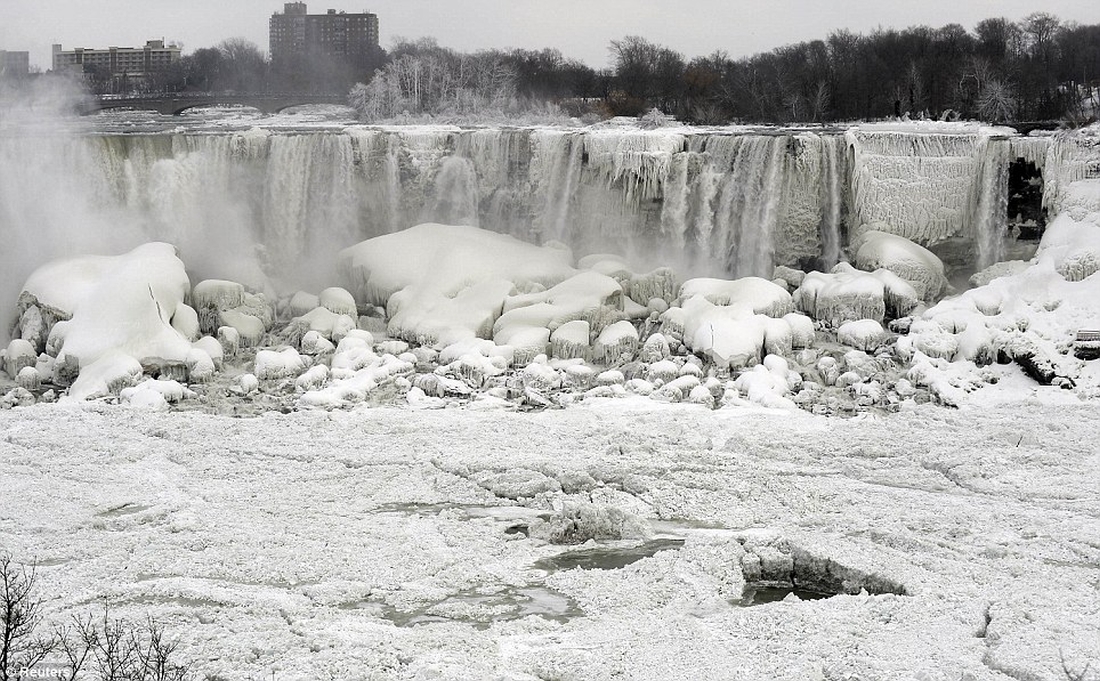
It should be noted, freezing is not actually that uncommon in and around the falls (this is upstate New York/Ontario we’re talking about), although it usually occurs a little more gradually than what occurred this week (temperatures dropped 47 degrees in less than 24 hours from January 6 to January 7).
It should also be noted that the falls don’t actually totally freeze over — we’re talking about 150,000 gallons of water per second flowing 176 feet down — however, once, back on March 29, 1848, it was recorded that an ice jam upriver from the falls caused a blockage, resulting in the falls drying up for a few hours until the block of ice dislodged and allowed water to flow back downstream (a few intrepid individuals even ran out to the edge of the falls to grab rocks as a souvenir).
[Spectacular photographs show the moment Niagara Falls FROZE in polar vortex via UK Mail]
By Matt Stabile

ABOUT THE AUTHOR
 Matt Stabile is the founder and Editor-in-Chief of TheExpeditioner.com. You can read his writings, watch his travel videos, purchase the book he co-edited or contact him via email at any time at TheExpeditioner.com. (@TheExpeditioner)
Matt Stabile is the founder and Editor-in-Chief of TheExpeditioner.com. You can read his writings, watch his travel videos, purchase the book he co-edited or contact him via email at any time at TheExpeditioner.com. (@TheExpeditioner)
The post Niagara Falls Began To Freeze This Week, And This Is What It Looked Like appeared first on The Expeditioner Travel Site.
]]>The post New Year’s Eve + Timelapse Video + Times Square = The Best Travel Video Of 2014 So Far appeared first on The Expeditioner Travel Site.
]]>Where were you on New Year’s Eve? I’m going to guess you probably weren’t hanging around the tops of a couple New York city skyscrapers in Times Square with enough expensive camera equipment in tow to finance the purchase of a small home in Boca Raton.
Lucky for you, The Timelapse Group was, and they captured the images to create this stunning New Year’s Eve timelapse video of Times Square from early in the day before most of the crowds showed up, to the time the ball dropped at midnight.
In case you were wondering, according to their Vimeo page, the video was produced using more than 18,000 still frames, shot over the course of 12 hours from two hotel rooftop locations.
*
For more great travel videos like these, visit our Travel Video group at Vimeo.
By Matt Stabile

ABOUT THE AUTHOR
 Matt Stabile is the founder and Editor-in-Chief of TheExpeditioner.com. You can read his writings, watch his travel videos, purchase the book he co-edited or contact him via email at any time at TheExpeditioner.com. (@TheExpeditioner)
Matt Stabile is the founder and Editor-in-Chief of TheExpeditioner.com. You can read his writings, watch his travel videos, purchase the book he co-edited or contact him via email at any time at TheExpeditioner.com. (@TheExpeditioner)
The post New Year’s Eve + Timelapse Video + Times Square = The Best Travel Video Of 2014 So Far appeared first on The Expeditioner Travel Site.
]]>The post Turning Points: A Dispatch From The End Of The Country appeared first on The Expeditioner Travel Site.
]]>
In the days preceding winter solstice, the sky enshrouding Barrow, Alaska, is a hue somewhere between mineral pitch and squid ink. And the skyline stays that way for all of a handful of minutes when it winnows a degree or two lighter, the barest luminescence along the horizon, like the last gasps of cathode ray behind a dead television screen. At high noon, your skin tone is cobalt, and the flat soil and the frozen Arctic Sea surrounding you resembles the surface of the moon.
When you arrive at the U.S.’s northernmost airport — one named ironically after two men, Wiley Post and Will Rogers, whose lives were extinguished some nine miles from the airport’s tarmac when their plane barreled into the sea — you experience the region’s bracing winter conditions fairly immediately. The wheels bounce hard across the single asphalt runway, the rear door opens, and you descend the stairs into a wind with the bite of hail. It’s the only air travel I’ve experienced where part of the flight attendants’ pre-landing protocol involves the donning of down parkas, complete with Alaska Airlines insignia.
From there, you can wander to one of the half-dozen eternally idling taxi cabs or brave the sub-zero walk across town to your lodging.
In contrast to the -20 degrees Fahrenheit air temperature outside, the Airport Inn, the most humble of the three hotel options in the northernmost city of the North American continent, is insanely warm. Unbearably warm. Warm enough to trigger the hotel fire alarm twice during the night. The room windows are permanently glazed in frost and separate two distinctly contrasting climatic worlds. But in 24-hour darkness, it hardly matters. Without the hoarfrost-cloaked streetlight mid-window, my hotel view of Barrow would be little more than a blurry stare into an arctic rabbit warren.
It’s early morning of my 40th birthday, and I’m peering out that very window for any sign of approaching headlights, hoping they might signal Bunna Edwardson’s tundra-borne arrival, the Inupiat wilderness guide Barrow native with whom I made arrangements to meet up with for the sole purpose of getting as close as I can to polar bears in their natural habitat. If Bunna doesn’t show, it’s going to be a meandering and likely life-abbreviating self-initiated tour across the arctic ice shield in search of them.
But Bunna barrels into the hotel parking lot right on time. He’s a goateed young man with waist-length hair, disarming smile and hulking figure. He says hello and immediately ducks into the can with a “gotta pee” request for pardon. Soon after, we pack into his idling SUV and begin mucking our way through the deserted, eternally blue-hued streets. It’s then Bunna informs me crossing paths with the polar bears is going to be challenging, if not impossible. The ice pack arrived earlier than normal and already pushed the majority of bears seaward. My arrival may be two weeks too late.
The news dampens my heart, but I knew I was pushing my calendar luck when I made the travel arrangements.
If spending your 40th birthday in 24-hour darkness and 40-degree subzero windchill as you clomp over sea ice in search of polar bears seems a bewildering choice, you may not have yet crossed that milestone yourself. Because when it finally careens its thundering path your way, the proverbial midpoint of your life, shredding the sod of your youth behind you to clumps and detritus, you might also do what you can to limit your company to those whom you can immediately commiserate: other vulnerable species. With half their populations in serious decline, Ursus maritimus, unfortunately, certainly sit within that classification.
In the many months leading to my pilgrimage to Barrow, my imagination had been consumed with bears. They figured prominently into the novel I had been writing, and I had spent the past several years steeped in field biology books about the animals. Each page I turned, I became more and more engrossed in their magnificence — their physical ability, nomadic sensitivity, their oddly human fears and survival tactics. Bear physiology also provided a gamut of literary metaphor possibilities, especially the species of bears — black bears and grizzlies — that survive food-starved winter landscapes buried in the soil. My novel was about a young man who loses a brother and then tangentially becomes unglued at the feet of an unraveling love. It’s a novel about how loss can transform us — the human hibernation some of us fall into during acute periods of grief. The main character in my novel follows grizzly bears into the woods because he can think of no better teachers at his point of need. Bears are cheaper than psychologists and less intimidating, to some of us, than priests.
So there I was, mid-life, supported by a thick sheet of sea ice, and like the character in my novel, looking to bears for salvation. Polar instead of grizzly. (Grizzly are endangered, too, but when your birthday falls in December, your ursine party guests are limited to the non-hibernating variety.)
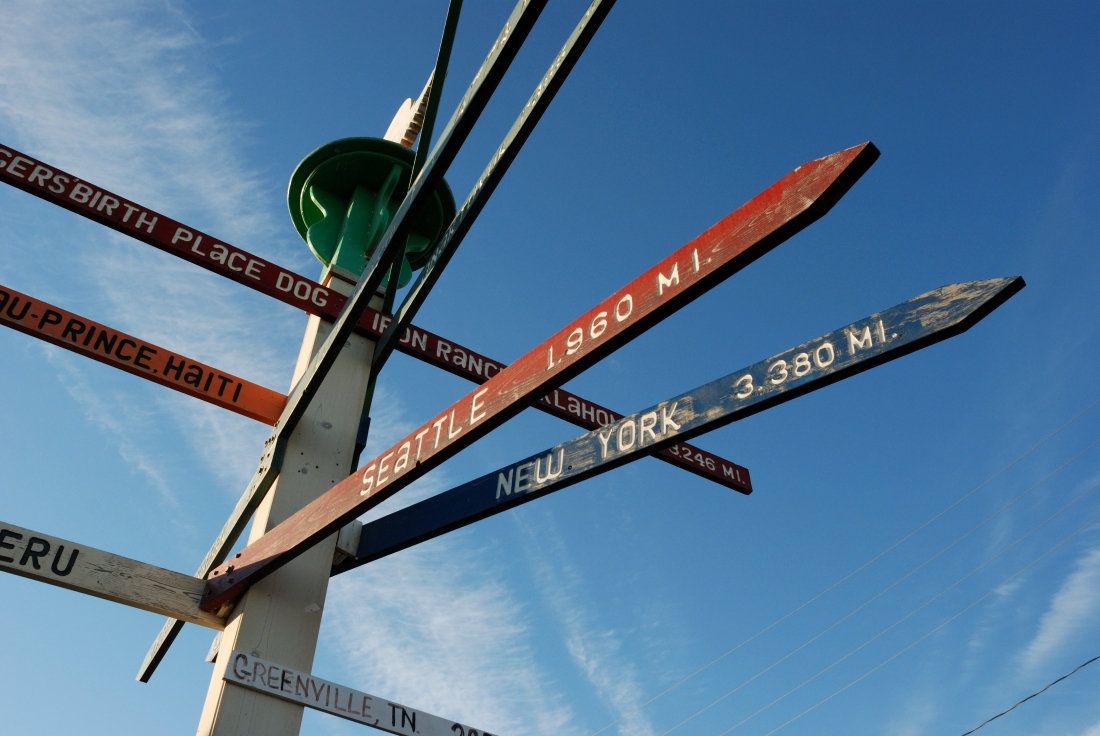
As we drive through Barrow, the landscape through the windshield seems hauntingly separated, its darkness and cold, from the warmth of our heated cab. As if the world between vehicles and houses lacks oxygen and gravity in addition to sunlight. At least that’s how it seems. You step outside, and every movement you make becomes strangely audible. Across the lunar-like surface, your footsteps crackle and your breath hisses. No matter where you drive, you leave your vehicle running. If you possessed a safety harness or long rope, you might feel compelled to tie a bowline knotted end to the axle for reassurance you’ll find your way back if stepping even mere yards away. It’s that dark, that cold — a seemingly other world.
Bunna gestures at the different cube-shaped abodes we pass where family and friends lay sleeping, small houses built on stilts to keep them from permafrost adhesion and with foot-thick walls to bay the cold. The soft incandescence of solo-lit windows is the only sign of life within these dwellings, the only reassurance we’re not driving through a frozen ghost town. Aside from swirls of snow and clouds streaming from roof vents, the entire village seems motionless.
After we stop at the sole 24-hour convenience store to top Bunna’s to-go mug with dark roast, the sparsely lit oasis of Barrow disappears in our rear view, swallowed in the darkness. Within minutes, our SUV crawls to a stop, and we stare into a blue field swaying with caribou. Their eyes uniformly reflect flashes of our headlights, as many caribou eyes staring back at us as stars in the sky. There must be thousands. In front of us, surrounding us, a spiral galaxy of caribou eyes.
We remain transfixed, two humans and a thousand caribou, staring at one another.
“Wow,” I say, and Bunna just smiles.
Sighting animals, or anything, really, at a distance in Barrow is made easy, thanks to its treeless landscape. The soil of the arctic coastal tundra is locked in a thick and continuous permafrost, yielding very little seasonal vegetation. In the open daylight of summer, you can probably see forever.
We resume moving forward, past the hypnotic stare of caribou, and veer and skid across the rutted roadway. When we approach the only other vehicle we pass, its headlights looming toward us, Bunna palms a CB radio microphone. He knows the vehicle’s driver, and they discuss road conditions and potential polar bear presence. It’s the arctic equivalent to stopping your car and chatting through parted windows. We never see the other vehicle’s driver, just hear his radio wafted voice through clicks of static, and then we are alone again, sharing this long arm of the Arctic Ocean with no one else.
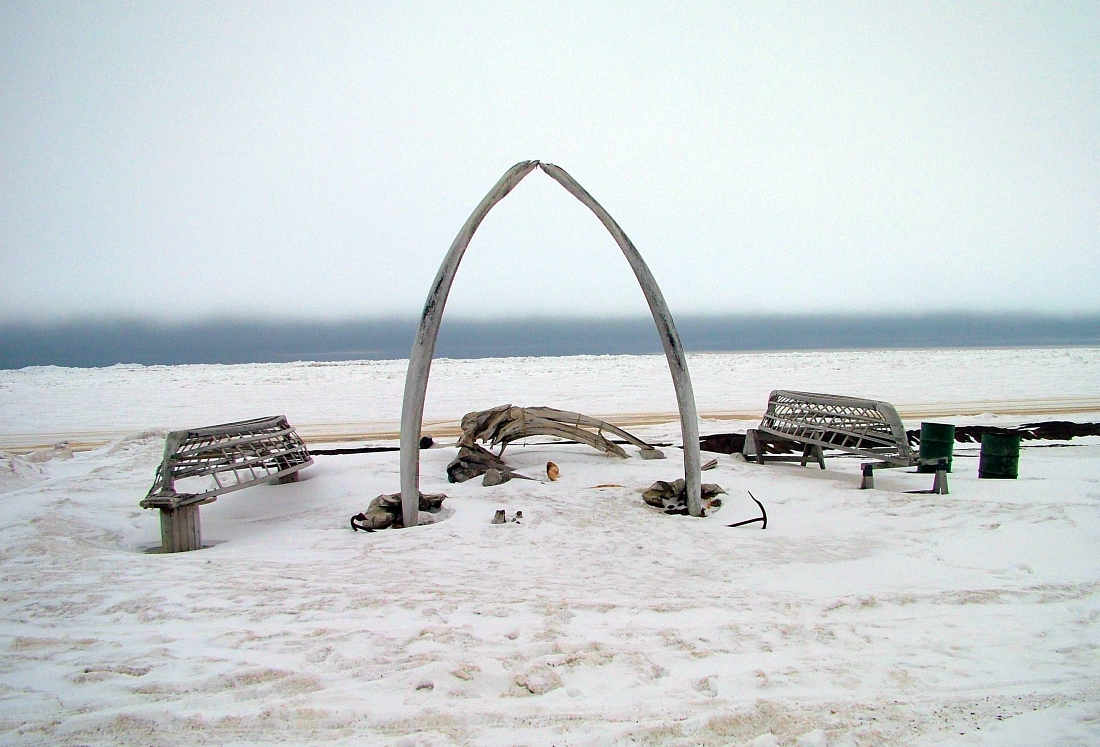
Nine miles north of Barrow, we come to a desolate point where the road, if you can call it a road, comes to a whimpered end. It’s Point Barrow, the northernmost drivable point of all U.S. territory, a spit of land that juts into two conjoined seas: the Chukchi and the Beaufort. But standing at that point, I can’t even tell either direction is sea, at all. It’s all ice and heaved freeze and dark sky.
As we trundle out, Bunna informs me we’re standing on the same spot bowhead whales swim during their spring migration, and I momentarily imagine one breaching through the ice beneath me, its massive skull ripping through the surface, its paired blowholes screeching tree-sized plumes of frosted air. And apparently (this time at least) my imagination isn’t a continent away from reality. I learn the whales are known to do just that, through ice as thick as 24 inches. That, I assume, must be a sight.
But no whales breech the frozen arctic sea ice we hike across. None, at least, we notice. We trudge over the scarred and snowy surface in silence, just the sounds of our feet moving across the shelf of sea ice, the sonorous wind in the distance. And then we arrive at one of the most striking places I’ve probably ever approached, the unmistakable perimeter of the Point Barrow whale bone dumping grounds.
I had heard about this place, read about its popularity with the polar bears, and wondered what it looked like. It’s a sculpture garden that could best the finest museums — story-high rib bones, cupping the sky, claw-shaped skulls the size of semi trucks planted horizontally in the ice, vestigial limb bones, spines the length of mobile homes, all covered in hoarfrost and tinted the color of 3 a.m. I stare at a single vertebrae disk the girth of a coffee table.
“We hunt bowhead,” Bunna informs me.
“I see that,” I say.
“We get to claim 22 a year. Our quota. This is where we clean them, leave what’s left. Far enough away from town, we don’t have to worry about polar bears dumpster diving and then loping through our backyards after.”
Imagine a small automobile junk yard and replace car parts with whale bones — next to a frozen sea. That’s the Point Barrow whale bone dumping grounds. It would be the perfect place for a bowhead on the prowl for a spare baleen.
I stand fairly still, mesmerized by the sea of giant bones before me, beneath me, around me. And then I start imagining the length of time ahead of us, how many years, before the same is all we’ll have left of the bear I’ve come these 3,000 miles to meet. How long until we make their gradual disappearance permanent? How many days until the polar bear bone dumping grounds is complete?
In North America and Canada, the polar bear has already earned its way into the ranks of the endangered, and their complete demise seems within arm’s length when you consider the primary factor threatening its survival: melting ice. Of all planetary trends, its gradual and not so gradual warming has become the one seemingly impossible to slow, much less reverse.
And the clock is ticking. The USGS predicts two thirds of the world polar bear population will disappear over the next four decades, and that’s based on moderate projections of sea ice melt. 40 years and the entire populations of polar bears in Alaska, Europe and Asia may be gone. Small, dispersed populations may survive another two decades in Greenland and northern Canada, before they, too, will disappear from everywhere but our memories and imaginations. It’s entirely possible within our lifetime we will know a world without polar bears, not a single one, roaming the moonlit horizon.
I stand amidst the frozen whale bones and wonder how many people care. If a tree falls in the forest (or marmot, a finch, a bear) does anybody hear? If we lose an animal hardly anyone encounters except in zoos and cola commercials, does it matter? Who does it matter to?
But it does matter. Significantly. And the reasons are numerous. There’s the animal itself, the world’s largest bear, an amazingly evolved mammal with unique adaptive physical abilities allowing it unrivalled dexterity across land, ice and open water. And if that doesn’t resonate, there’s the arctic canary in the coalmine analogy — the polar bear’s survival depending on a shelf of ice that, if permanently melted, signals a whole downstream shitstorm of peril for our own survival, a new climactic norm meets rogue carnival ride none of us are going to like a whole lot or find livable.
Think eustatic sea level rise in yards not inches — the washing away of New York, New York and London, the sudden creation of one million homeless people in Nigeria alone. And that’s just coastal displacement, land erosion. Add to that rampant storm surge flooding, habitat loss, water quality and groundwater characteristic changes, agriculture/aquaculture impacts and the global economic repercussions of this Dino De Laurentiis-like production grow direr yet. There’s a reason we should do everything we can to protect the unique habitat that sustains the polar bear, and it has more to do with our own survival than the downy, thousand-pound animal that would also obviously benefit.
But beyond those two valid and compelling reasons, shouldn’t we work to sustain the existence of the polar bear, and all vulnerable and endangered species, for the simple reason their plight is a shared burden? Do we really have an ethical choice? The mantra of leaving no one behind shouldn’t be reserved exclusively to the moral code of the armed services. If we fail at sustaining the species of beings we share our planet with, it makes a compelling statement about who we are, and perhaps an omen of where we’re headed.
I spent the majority of my 40th birthday alone with a former stranger — a congenial Inupiat and enthusiastic fan of his native city — a city that sits more than 500 miles from the next closest comparable one. No bears joined our two-person nomadic party across Barrow’s frozen arctic sea coast that day. None in view. But before we left the whale bone dumping grounds, Bunna spotted something and stopped dead in his tracks.
He grabbed my shoulder, pushed me gently toward the ice beneath our feet. And then I saw them in the murky darkness, the unmistakable footprints and claw marks of a recently passing bear. I placed my gloved hand into the center of the nearest mark, an oval dent in the ice my open hand barely obscured, a single footprint at least 12 inches in diameter and elongated an additional several inches by the spire of claws.
Your hand swallowed against theirs, it’s impossible not to be moved by the magnitude of the animal that left so determined a mark before your own. We moved slowly forward, the serrated pattern of footprints welted into the ice beneath us. We followed them, a step at a time, blindly into the dark.
By Kipp Wessel
[Barrow by Diana Norgaard/Flickr; Barrow Milepost by Andrei Taranchenko/Flickr; Barrow, Alaska by Zanzabar Photography/Flickr]

[In lieu of payment for this article, Kipp has requested that a donation on his behalf be made to Polar Bears International, the world’s leading polar bear conservation group dedicated to saving polar bears by saving their sea ice habitat. To find out more about the organization, please visit PolarBearsInternational.org]
ABOUT THE AUTHOR
 Kipp Wessel’s stories have appeared in a dozen commercial and literary magazines, including Southern Humanities Review, CutBank and Big Sky Journal. He lives in Minnesota and earned his MFA and a Fiction Fellowship from the University of Montana. His debut novel, First, You Swallow the Moon – a modern love story of a man who attempts to avert heartbreak by transforming himself into a bear, is slated for an early 2014 release. To learn more, visit: KippWessel.com.
Kipp Wessel’s stories have appeared in a dozen commercial and literary magazines, including Southern Humanities Review, CutBank and Big Sky Journal. He lives in Minnesota and earned his MFA and a Fiction Fellowship from the University of Montana. His debut novel, First, You Swallow the Moon – a modern love story of a man who attempts to avert heartbreak by transforming himself into a bear, is slated for an early 2014 release. To learn more, visit: KippWessel.com.
The post Turning Points: A Dispatch From The End Of The Country appeared first on The Expeditioner Travel Site.
]]>The post The Australian Coffee Invasion Has Begun In New York appeared first on The Expeditioner Travel Site.
]]>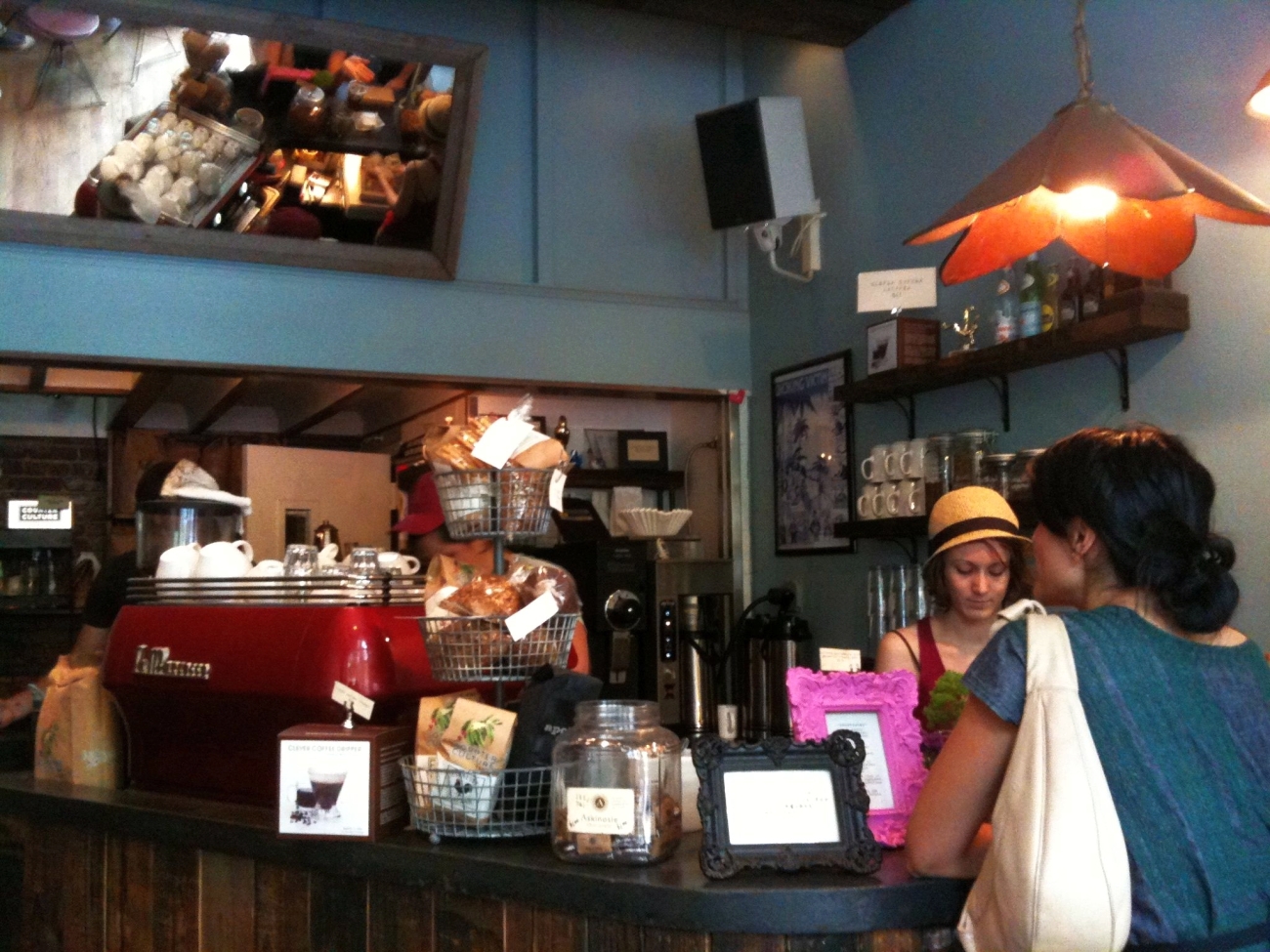
Apparently, if an Australian gives your city the thumbs up for being up on the coffee culture, you have succeeded. You see, you may not have known it, but the Australians are actually java connoisseurs, something I learned while reading this recent article in the Sydney Morning Herald, which shows caffeine fanatics where to look in New York for a decent sip of brew.
They not only highlight the cool cafes in Manhattan (such as Bluebird Coffee Shop in the East Village — run by Melbourne expat Alex Hall), but they also knowingly delve into coffee-centric Brooklyn where Toby’s Estate, the well-known Australian coffee company, opened its first American branch.
Still, when reading the article, I had one question burrowing in the back of my brain: Who would have thought that coffee would be loved so much down under (far from the coffee-growing regions of the world)?
Upon further investigation, I learned there is a general consensus that Australians have a strong (or bold?) coffee obsession. They savor Italian-inspired stove-top espressos as well as the divine shot pulled from a La Marzocco machine. So ardent are they in their love of a quality cup, some even claim to detox before venturing to North America to avoid having to succumb to getting their fix in a Starbucks. In fact, it wasn’t too long ago (2008 to be precise), that Starbucks was struggling so much in the Australian market that it had to close 61 of its 84 outlets as a result of the country’s sophisticated coffee palate.
Perhaps it comes down to geography. Perhaps as a result of being simultaneously surrounded by breathtaking scenery and dramatic landscapes, they have become accustomed to the bold and the beautiful. Whatever it is, I am happy that they push the bar and pull the shots.
By Brit Weaver
[Bluebird Coffee Shop by Jill M/Flickr]

About the Author
 Toronto born and based, Brit is an avid leisurely cyclist, coffee drinker and under-a-tree park-ist. She often finds herself meandering foreign cities looking for street eats to nibble, trees to climb, a patch of grass to sit on, or a small bookstore to sift through. You can find her musing life on her personal blog, TheBubblesAreDead.wordpress.com.
Toronto born and based, Brit is an avid leisurely cyclist, coffee drinker and under-a-tree park-ist. She often finds herself meandering foreign cities looking for street eats to nibble, trees to climb, a patch of grass to sit on, or a small bookstore to sift through. You can find her musing life on her personal blog, TheBubblesAreDead.wordpress.com.
The post The Australian Coffee Invasion Has Begun In New York appeared first on The Expeditioner Travel Site.
]]>The post 10 Gorgeous Photos From My Trip To Telluride appeared first on The Expeditioner Travel Site.
]]>
Some say the remote mountain town of Telluride earned its name from the phrase, “To Hell You Ride.” Well, if this is Hell, I better start sinning.
About seven hours from Denver, Telluride is nestled into the fourteener-heavy San Juan Mountain range. The mountains are believed to be much younger than the Rockies, and haven’t experienced nearly as much erosion. You can tell.
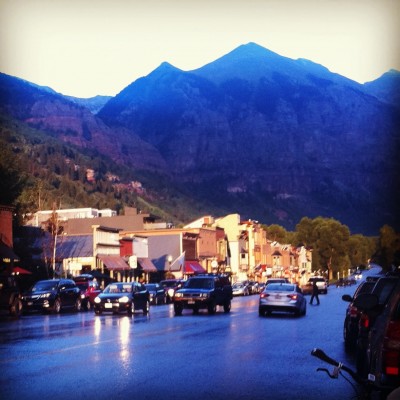
The mountains are taller, steeper and more jagged than other mountain ranges in Colorado, making the ski area next to the town particularly attractive to expert skiers and riders.
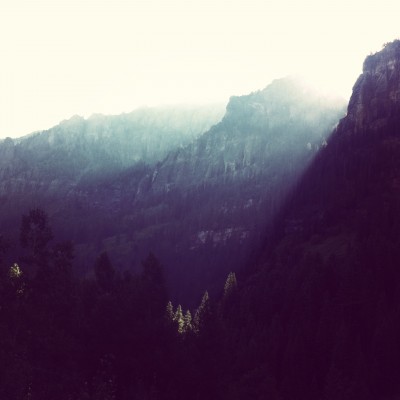
Telluride was once a flourishing mining community. Head to the edge of town to see the old cemetery. Many headstones bear engravings of miners who perished during Telluride’s heyday in the late 1800’s.
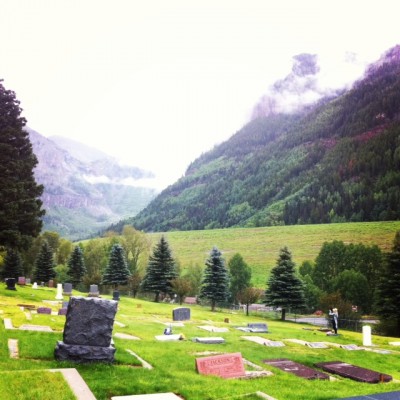
Despite Telluride’s remoteness and high elevation of 8,750 feet, many local restaurants source their ingredients as sustainably as possible. Case in point, The Butcher and The Baker, a small breakfast and lunch cafe, uses peaches from the Western Slope’s Palisade, purple basil and fresh mozzarella to make a simple, elegant salad.

Wild mushrooms flourish in the mountains surrounding Telluride, and some chefs wild-forage them to incorporate into their menus. Late summer is prime time for mushroom harvesting. If there’s consistent rainfall, expect to bring back bags of mushrooms.
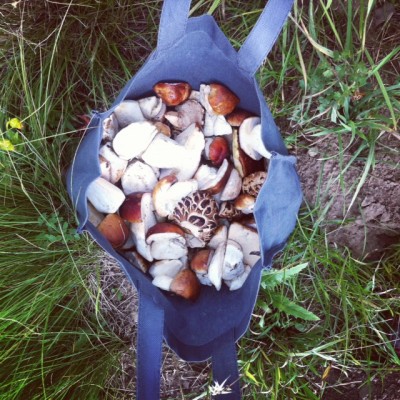
Here’s a perfect porcini mushroom, also called Boletus edulis.
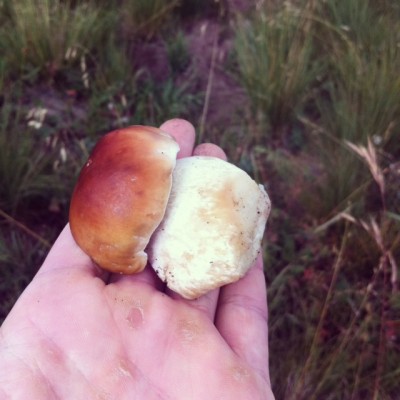
After a cold, damp morning of mushroom foraging, Chad Scothorn, founder and head chef of the Cosmopolitan restaurant, fixes a grilled cheese sandwich with trumpet-shaped chanterelles, tomatoes and house-made mozzarella. Scothorn offers a huge variety of cuisines, ranging from sushi to risotto to filets.
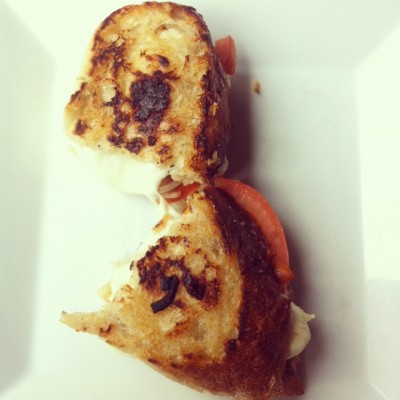
The San Miguel River leading into Telluride is lauded for world-class fly fishing. New to the area? Hire a guide from Telluride Outside — they’ll show you the hot spots.
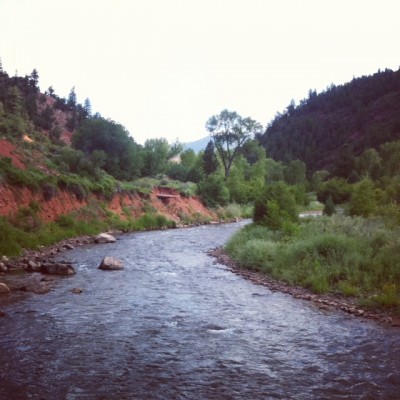
I actually caught a brown trout!
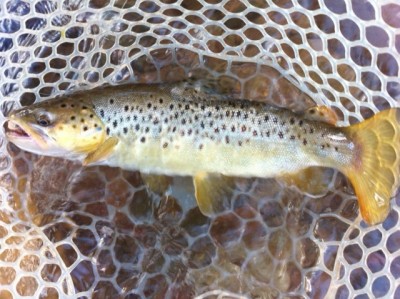
Telluride is dominated by summer festivals and concerts. The outside venue provides a dramatic backdrop to hear bluegrass, funk or, in this writer’s case, Thievery Corporation. Plus, the venue is home to the world’s very best photo-bombers. Go there!
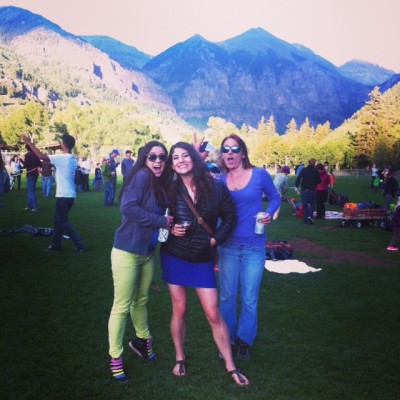

About the Author
 Jenna Blumenfeld, (Jenna Ogden Blumenfeld when she’s in really big trouble) hails from the wee state of Connecticut. Although her childhood dream of becoming a bug doctor — with a specialization in ladybugs — has gone unfulfilled, she is content writing about travel, cuisine and culture. A vegetarian, she currently resides in the food hub of Boulder, Colorado. Read more of her food-centric writing at NewHope360.com. You can follow Jenna on Twitter here: @JennaBlumenfeld, or via Google+.
Jenna Blumenfeld, (Jenna Ogden Blumenfeld when she’s in really big trouble) hails from the wee state of Connecticut. Although her childhood dream of becoming a bug doctor — with a specialization in ladybugs — has gone unfulfilled, she is content writing about travel, cuisine and culture. A vegetarian, she currently resides in the food hub of Boulder, Colorado. Read more of her food-centric writing at NewHope360.com. You can follow Jenna on Twitter here: @JennaBlumenfeld, or via Google+.
The post 10 Gorgeous Photos From My Trip To Telluride appeared first on The Expeditioner Travel Site.
]]>The post The Empire State Building Goes Vegas With New Light Show appeared first on The Expeditioner Travel Site.
]]>Visitors to New York City this holiday season will get the first chance to see the new light show that is The Empire State Building.
Once home to stodgy monochrome lights that changed every week or so to reflect the time of the year (or a Giants Super Bowl win), the building has now upgraded to a new state-of-the-art dynamic LED lighting system courtesy of Philips Color Kinetics.
As the company humble brags, the new system “allows customized light capabilities from a palette of over 16 million colors in limitless combinations along with effects previously not possible such as ripples, cross-fades, sparkles, chasers, sweeps, strobes and bursts. In addition to greater control and management of the lighting, the new computerized system will deliver superior light and vibrancy levels in real-time, unlike the previous floodlights.”
The above video was taken the night of November 26, 2012, when the light show was synchronized to the Alicia Keys songs Girl is on Fire and Empire State of Mind (the music was playing on the radio which was simulcast on several radio stations in New York City at the same time).
The post The Empire State Building Goes Vegas With New Light Show appeared first on The Expeditioner Travel Site.
]]>The post The Big Chill In Big Sky Country appeared first on The Expeditioner Travel Site.
]]>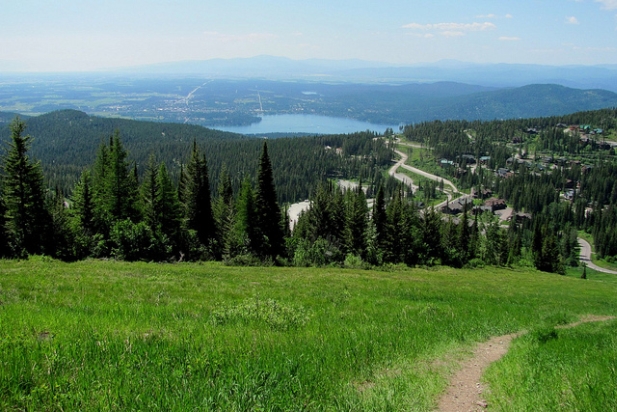
We made our way to Whitefish, Montana, by flying into Calgary, Alberta. Sean and I met early on the El tracks in Chicago. It was 6 a.m. and 95 degrees out, and the drops of sweat were starting to make a lovely little scene beneath the armpits of my gray, cotton shirt. My new puppy had woken me up at 3 a.m. after pissing her crate, and Sean’s eight-month-old baby kept him awake all night with a chest infection. Chicago was in the midst of a heat wave that would ultimately kill 18 people. Though not dead, we felt like we were taking the beginning steps in a very yuppie version of Mao’s Long March. We were already limping as the trek began.
We were off to Montana for our old high school friend’s wedding. Raurie’s invitation listed three potential airports for our consideration: Kalispell, Montana; Spokane, Washington; and Calgary, Alberta. Although the closest, a ticket to Kalispell cost a grand, and Spokane wasn’t much cheaper. At six hours away and with many curvy mountain passes to traverse, Calgary was the furthest from Whitefish. But it was by far the cheapest, and because we were traveling stag, it was the obvious choice for two old friends looking for a bit of an adventure in the Mountain West.
Sean and I had been friends for almost 20 years. We met on the first day of summer school before our freshman year, and our early bond quickly developed into a lasting friendship. Sean was the classic Chicago Irish Catholic kid. The fourth child in a family of eight, Sean was accustomed to siblings, and I fast became another brother. My time in high school was spent eating cold lasagna leftovers in his kitchen and sleeping on the couch in the basement bedroom he shared with his brother Brendan. Sean, in turn, took care of my family’s dogs when we went on vacation and once scored a summer job as the nanny for the children of my mom’s best friend. Sean was the first person to visit me when I went to college and the last guy I had a beer with before our trip to Montana. Sean was family.
Sean was also a new father. He had his son a few years after getting married and was in the midst of weighing his work obligations against his devotion to family. Sean had a sexy job, the kind of job young boys fantasize about and old men beg for. Sean worked at a large international company and was involved in high-profile global sports. Sean’s job took him to games in Singapore and South Africa; Dubai and Dublin. It also took him away from his family with a frequency that was getting harder to tolerate.
Raurie’s wedding was important to the both of us. Like Sean, Raurie was born into a big Irish family. But her twenties were full of tragedy. In a span of only six years, Raurie was forced to bury her two brothers and her two parents. Her brother, Burke, a wild man with a mane of red hair and a flame-red spirit as wide as the Montana sky, was murdered in New York. A year later, Raurie’s father died in a car accident on his way home from Burke’s memorial service up in Canada. Her brother Tommy died next. Her mother soon followed. We’ve all had struggles, but Raurie’s were Shakespearean, fraught with an intensity that few will ever know.
But Raurie was a survivor. She had an internal spark that somehow refused to burn out. She walked through Dante’s nine stages of hell and emerged as a woman whose grief cut deep but never disfigured. My old friends had met too many times to mark Raurie’s pain. Her wedding was a chance to celebrate her joy.
We arrived in Calgary a little after noon. Although we knew Calgary to be about six hours from Whitefish, Sean and I tacked on another 30 minutes the moment we saw our car. We were given a Toyota Yaris — a car that does not scream the mountains of Montana. It’s the kind of car that could get you killed in Sarah Palin’s Alaska. It was perfect for two liberals from Chicago.
The Yaris handled the treacherous drive admirably. We dubbed ourselves the little engine that could, chanting, “I think I can, I think I can,” as we made our way up the steep two-lane road. A few hours into the drive, Sean had to take a white-knuckled call from his wife about emergency medical tests on his son. No matter how far away, the realities of fatherhood follow you. Adding an unneeded element of drama, the high mountain walls periodically blocked cell phone reception and made understanding the situation complicated. After five calls and a few nervous tears, it was clear that the tests came back negative. Sean had earned his allotment of beer for the weekend.
Sean and I were meeting up with some old friends, most of whom we hadn’t seen in years. No one in the group brought a partner and all of us had traded the requisite e-mails before the trip exclaiming how excited we were to have the opportunity to reconnect. The five of us had rented a small two-bedroom cabin for the weekend. The two girls would take the two beds in the back room, and the three guys would figure out how to divide the remaining twin bed and pull-out couch.
I was most excited to spend time with Caitlin. Caitlin was always the beautiful girl whose curly hair matched her curly personality. She was quick to curse, could drink whiskey with the boys and her depth inspired love from men and women alike. I met her when she was the sweet girl, watched her morph into the wild child, laughed through her stage as the badass, and now admired the mother, the wife and the successful public health expert that she had become. She was always someone who just got it, and she understood me with an easy ability that matched her effortless style. We were fast friends in high school and, though occasionally tempted to date, decided early that ours was a friendship of kindred spirits that should never be sullied by sex.
I had last seen Caitlin two years earlier at her home in Washington, D.C. I was three months into a painful separation that would ultimately lead to a crushing divorce. She was three months into an unexpected pregnancy after years of being told that she would never have children. We both were far away from our high school selves. We spent the visit confessing our deepest fears about the new stages we were entering. I got drunk with her husband while she chose the music for our late night gab fest. Our hug goodbye at the airport was long. We both cried. We were never the friends that spoke much between visits and we knew our lives would be radically different when we were next together. Our tears marked the end of whatever chapter we were living. In the two years since our visit, we had only spoken a couple of times.
The weekend was also a chance to spend time with Jennifer. Jennifer was my oldest friend. I met her when I was three years old when we were both weaning ourselves from diapers and suffering through nap time in Ms. Mastrad’s preschool class. In one conversation we could talk about the pet cow in our first grade classroom, our sixth grade spin-the-bottle sessions at Kate Clark’s house, her high school fling with Rick Ciccione, our one drunken kiss in college, and our two-week backpacking trip through Peru when we were 22. We had shared a life, our past fused together by common memories of the same people.
But, like all siblings, our relationship was changing. Jennifer was a mother of two young boys and had moved out of the city to a nice home 45 minutes outside of Chicago. Our weekly talks had been replaced by quarterly calls. Long e-mails had been replaced by short text messages. Our lives separated by marriage and divorce; children and childlessness; urban and suburban; male and female. Our friendship was still strong, but there was an unspoken recognition that the nature of our bond was shifting. There was more past to our relationship than present. We were long overdue for a new memory.
* * *
As we pulled into Whitefish, Sean and I stopped at the local liquor store and picked up the beer and wine that is required at any reunion. Whitefish is a small town in the northern part of Montana. At the doorstep of Glacier National Park, it is surrounded by a rugged set of mountains and a host of white water rivers that make you question your sanity for living anywhere else. We were staying at a lodge with about 50 rustic cabins, all appropriately nestled into the oversized brush that decorates Montana’s summer landscape.
The changes that time brings range from the profound to the trivial. Sean and I asked the receptionist for the cabin number that Margi, another old high school friend, had booked for our group. We said the reservation name was “Johnston” — Margi’s last name — and were directed to cabin 46. Our arrival was unceremonious. No one was in the cabin and we had stupidly forgotten to grab keys when we checked in. Not to worry. After 13 straight hours of travel, Sean and I were more than happy to toast ourselves. We had a case of cold beer, a few bags of Doritos and time to kill.
We sat on the porch, shoes off, and quickly crushed two beers each. Lining the porch mantle with our empty bottles and stinky socks, Sean and I looked like we had been drinking there for hours, blind to the fact that Margi changed her last name to Browne when she married. When the real “Johnson” family showed up, we were semi-buzzed and shoeless and our luggage sat open on a porch that was obviously not our own. The Johnsons were mildly amused — and slightly disturbed — at the sight. Order was restored when we offered them some of our beer, explaining that we were the self-appointed welcoming party for Raurie’s wedding.
The first few beers did little to soften my subdued nervousness. I would be seeing many people for the first time since my divorce. Although it had been nearly three years since my marriage ended, the mind-fuck of divorce lingers, and embarrassment can surface like an unwanted pimple on prom. I was different: more cynical, with a few more rough edges and unsure of my new narrative. I had long been known as the nice boyfriend and the supportive husband. I had always accepted the praise and embraced the role of the loyal spouse. I dispensed advice about marriage with naive confidence that, in retrospect, makes me nauseous. I bought into an early love that I felt — no, that I knew — would last forever.
But early love has to mature and Anna and I were unable to transition our young love away from our young selves. Our memory of living out of our car in Wyoming after college could not be reconciled with living off two professional salaries in a nice Chicago condo. Our marriage ended with a joint sadness that was as much about saying goodbye to one another as it was about letting go of the memories we built our life upon. Every divorce changes you. Divorcing at 30 scars you.
Sean and I tracked down our real cabin — cabin 25 — after texting Jennifer. Jennifer was the only one who had arrived and had spent the day by herself up in Glacier. We exchanged hugs and detailed the kind of upbeat assessment of our travel that no one remembers or cares about. We took quick showers and headed to the welcome dinner: a large pig roast that we could already smell.
The group filled out at the reception dinner. After flying into Spokane, Caitlin rolled in with Brody. A musician and composer, Brody and I had seen one another no more than a handful of times since graduation. Brody was the kind of friend whose memory stopped in high school. I knew him as the ambitious and clean-cut student off to Georgetown to one day become a lawyer. My lasting image was eating breakfast with him when I was 18, waking at his house after I got drunk on his parent’s gin and made out with Margi to a Tom Petty CD.
I knew very little about Brody’s current life. He was living in New York, came out as bisexual after high school and had shed his clean-cut image for several body piercings. He was living the artist’s life, replete with a Brooklyn loft. But, like all old friends, I didn’t need to know the current details to understand Brody’s larger life. No one is ever very far from their boyhood home.
The Montana sun was hot during the reception dinner. The local beers went down easy. The roast pig was a perfect mix of fat and salt and went great with the baked beans and tomato basil salad. There was plenty of music to backdrop the initial conversations about how nice it was to be out in Montana and how happy we all were for Raurie.
The humor was easy and fast and frequently referenced names from high school that none of us had thought of in years. There was no talk of jobs back home. There was no one to impress. Raurie’s slide show reminded us all that, for once, we were at a celebration and not a memorial. The toasts touched on her loss, but focused on the relationship she had gained. I can’t remember if the music was still on when we left the dinner, but I know we were dancing.
There are times when you seem to be living out a dream. Not a fantasy, but something you wake from and question how your unconscious pulls out such vivid and random shit. The post-dinner party was a hazy dream filled with specific details. I danced my way back to cabin 25. I was in Montana. I was surrounded by high school friends — Sean, Brody, Jennifer, Caitlin — that had not been together for 15 years. I was drinking cans of Coors Light and sipping Woodbridge Pinot Grigio. I was eating peanut M&Ms and Jennifer had picked away all of the green ones. We were listening to Dylan. I was in pajamas, and we were playing “Marry, Fuck, Kill.”
* * *
The next morning came early. I slept next to Sean on a very aged pull-out bed that was not made for two drunk men. After sipping some morning coffee on the porch, the group made its way into town to throw some grease onto our hangovers. Lulu’s was a classic breakfast place with a laid-back mountain vibe that was true to its Montana roots. The kind of place with local art on the wall and homemade coffee mugs.
With no music, no booze and no partners to make comfortable, the playful conversation from the night before was replaced by seriousness. Caitlin’s dad was just diagnosed with emphysema, and Sean’s dad had a pacemaker. Between Brody and me there were two parents with Parkinson’s disease and two cancer surgeries. Jennifer’s mom had knee replacement surgery and Sean had to help his parents carry the groceries. My dad had just informed me that he had only a couple of “good years” left.
Care-free engagements had morphed into complicated marriages. Date nights had been replaced by diaper changes. Shared apartments became expensive mortgages. We had to think about school systems and retirement accounts, playgrounds and play dates. People had their own pets.
We had aged, but we didn’t always feel older. Our new responsibilities seemed like the inevitable product of time, not the result of deliberate choices. The faces around the table reminded us of when it was normal to admit that you weren’t exactly sure what you wanted, or where you wanted to be. Confession is easy when you are around old friends.
Breakfast ended when Caitlin got an e-mail to call work, which reminded Jennifer she should check in on her boys. Sean texted his wife, and I bought a postcard to send to my girlfriend back in Chicago. Brody posted a picture of us on Facebook.
After breakfast, a group of us took the 30-minute drive to Glacier National Park while the others got ready for the wedding. The day was clear and hot and wide. The Montana sky was blocked only by the large mountains that pierced the wispy clouds. Top down, in a red Mustang, we made our way up Highway 2 listening to Mumford & Sons.
The wind was too loud for talking, but our easy smiles said enough. We were far away from our lives back home; far from the traffic, the clutter and the grinding demands that make up so much of life. Far from the whirling pressure to have your shit together, at all times, in front of all people.
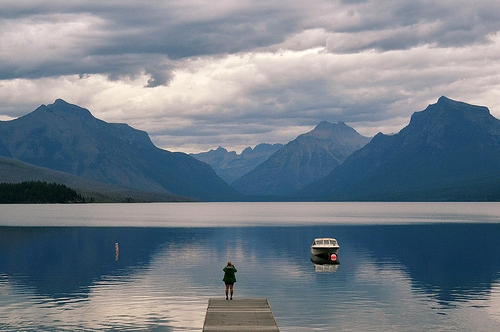
We took a short hike around Lake McDonald, the large turquoise lake at the south end of the park. I walked next to Jennifer up a small path towards a waterfall a half-mile up the trail. Our last hike together was 11 years ago as we camped along the Inca Trail on our way to Machu Picchu. I had long hair and a very questionable beard. It was the kind of beard that only makes sense when you are 22, and it covered more of my neck than my cheeks. I probably wore a bandana. I had been living in South America for three months as part of a research project. Jennifer had just graduated from college and was on her way to teach English for a year in Honduras. We had each walked a long road to Montana.
Sean and I were the last to leave for the wedding. Brody and the girls had headed out early to serve as the ceremony’s ushers. Our 45 minutes alone was spent drinking the first beer of the day and listening to Radiohead songs on the porch. We clinked bottles, knowingly toasting to drinking too much with old friends.
Raurie had arranged a bus to drive guests to the wedding location, a beautiful ranch about 15 minutes from the cabin. It was the kind of quiet bus ride to an event that stands in stark contrast to the loud drive home. The strangers that sat next to me would become my dance partners in a few hours.
Sean and I walked the grounds in the few moments we had before the wedding. The tall pine trees blocked the sky, leaving only small cracks for the sun’s rays. We came across an old pickup truck. It was straight out of a Norman Rockwell painting. There was even hay in the truck’s bed. Sean had loved pickup trucks ever since his high school Dodge Ram and had made sure his son had a full stash of truck toys. I took a picture of Sean next to the truck so he could send it home. He knew his son would love to see it.
The wedding ceremony was conducted outdoors. Raurie and Jake stood in the center of a large circle of about a hundred guests. The officiant was the boss of their childhood camp, the man who had guided them when they were teenagers learning to paddle up a stream and portage over steep hills. Later, as counselors, they had met on the water, teaching canoe skills to high school campers. Their marriage was sealed by mixing cups of water from their home towns with water from the lake where they met.
Dinner was first and I sat next to Caitlin. During the toasts, Caitlin’s misty eyes looked back to Raurie. They had been friends since middle school and had shared the stories that shaped their life. Raurie was there when Caitlin’s dad moved out and Caitlin stood next to Raurie the night Burke died. When Raurie’s camp friends spoke, Caitlin remembered saying goodbye to Raurie before she left for the summer. When her cousins raised a glass, Caitlin knew the family lore. She was a part of every high school dalliance and took part in all the post-college wandering. Instinctually, my hand rubbed Caitlin’s back. There was an occasional shoulder squeeze and her one-off look that thanked me for knowing that even happy memories can make you sad.
But the best weddings are about the dancing, and this wedding was one of the best. The large barn adorning the property was made into a big dance hall. There was no band, not even a DJ, but the nostalgic dance mix forced everyone to the floor. Brody set the tone and created what would become the group’s go-to dance move of the night. Like a speed skater, Brody leaned forward and kicked each leg into the air. His arms rising above his head, alternating one by one towards the ceiling. His eyes were closed, and he was singing to the music that was blasting into the barn’s hot air.
The men soon stripped down to undershirts and the girls were barefoot. There was sweat — so much sweat — and we were dancing hard. We were dancing to keep the night going, knowing that once we stopped, the night would end and we’d be forced back to our lives. We were dancing for each other and for the moment. We were dancing for a past that would never return.
Sean grabbed my shoulders and we bounced up and down to House of Pain’s “Jump Around.” Caitlin said she missed me as I twirled her to Lady Gaga’s “Poker Face.” Brody tried to teach me some kind of backwards body wave that made me look like an old woman trying to hula hoop. We all danced in a circle when Billie Jean came on.
When the sweat blurred my eyes, I could see Jennifer playing on our elementary school playground. I could see her dancing with her first boyfriend, John Johnson, at our first middle school dance. I could see Brody’s blue flannel shirt from high school and Caitlin’s goodbye party before college. I could see my post-college road trip with Sean through Colorado and the chocolate cake Jennifer ate when we were in Chile. On that dance floor, through all of the sweat and all of the wine, I could see most of my life.
* * *
Sean was wearing a sport coat and boxers when I woke up next to him early Sunday morning. Brody and Caitlin had to wake up at 6 a.m. to drive back to Spokane and we both promised to say goodbye. Brody was headed back to his music and his boyfriend in Brooklyn; Caitlin, to her husband and baby in D.C. The hugs were long. We were old enough to know that we shouldn’t promise to see one another soon.
After a quick goodbye with Jennifer that included the standard promises to schedule a dinner, Sean and I got back in the Yaris for the long drive to Calgary. We were feeling exceedingly average. Our mouths were dry from the beer and the altitude, our backs slightly bruised from the hard bar that supported the sofa bed. We were running on no more than three hours of sleep and we had over six hours of driving to do. We had to find a motel in Calgary and catch a 5 a.m. flight the next day.
We made our way back to Calgary through the vast expanse of southern British Columbia. The Yaris looked like a small horse making its way across the Mongolian Steppe. It was so quiet and so big and the world seemed so flat. The sky touched the earth in every direction.
There was no radio and we had no music. We only had one another. About four hours into the drive, after we had laughed about every story from the night before, we were quiet. Sean was in the passenger seat, looking out at the land. My eyes were on the road, my mind drifting between cabin 25 and the work that awaited me when I returned to Chicago. I broke the silence and asked Sean if he was excited to go home. He said he couldn’t wait to see his son and his wife. He was leaving for China in a week and felt bad that she was shouldering so much of the burden. He knew she needed sleep. He knew that he was going to be on the 2 a.m. shift with the baby for the week. He’d be changing a lot of diapers and would be “wiping a lot of ass.” I asked Sean if he liked having a baby. He said he loved it, but he wanted more time. He said he just needed so much more time.
Sean was nursing his hangover by drinking a large jug of water, and I had downed about three mugs of coffee. We pulled to the side of the road almost every 30 minutes for a pee break. About an hour outside of Calgary, the two lane road turned into a four-lane highway, making an emergency pullover impractical. But Sean had to pee, again, and I missed the last exit. He said he had to go an 8.5 on a scale of 10. He warned me not to try to make him laugh.
But old friends aren’t known for their sympathy in such circumstances, and I tried to make Sean pee by laughing as hard as I could. I was howling and telling Sean to relax and think of warm water. We went over a small bump and, like an unplugged spigot, Sean pissed himself. And after drinking about 100 ounces of water and a large cup of coffee, it wasn’t a small pee. Sean walked into the $60-a-night motel 15 miles outside of Calgary with a large circle of wetness covering his khaki shorts.
The 5 a.m. flight came very, very early. It was dark and cold outside when Sean filled up the Yaris with our final tank of gas. We barely spoke through airport security and we both instinctually flocked to the terminal’s lone Starbucks for our pre-flight coffee. We weren’t seated together during the flight, but it made little difference because we both slept most of the way.
We arrived in Chicago shortly before noon. We hopped on the El and made our way from O’Hare back into the Loop. Sean had forgotten his keys and was meeting his wife at her office so he could get back into the house. He had to be in the office by 2 p.m. so that he could lead a conference call with his team in London. I was on my way home to let the dog out and then I had to head into work to write a memo. When the doors opened at my stop, I gave Sean a big hug and thanked him for the weekend full of good memories. I said we should grab a beer on Friday, and I told him to give his son a kiss for me. I asked him to send me pictures and gave him one more hug. I’d see him again soon.
By Kevin Agnew
[Whitefish by TWBucknew/Flickr; Lake McDonald by Gabriel Amadeus/Flickr]

About the Author
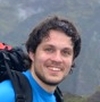 Kevin Agnew is an attorney and a freelance writer who currently lives in Chicago. He writes about travel, politics, relationships and culture.
Kevin Agnew is an attorney and a freelance writer who currently lives in Chicago. He writes about travel, politics, relationships and culture.
The post The Big Chill In Big Sky Country appeared first on The Expeditioner Travel Site.
]]>